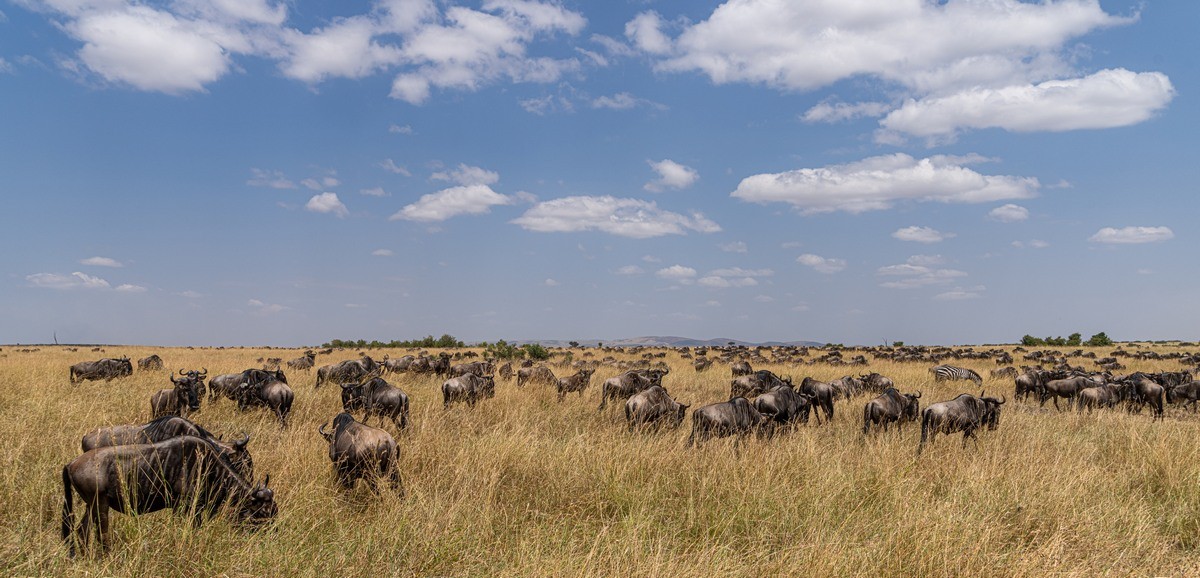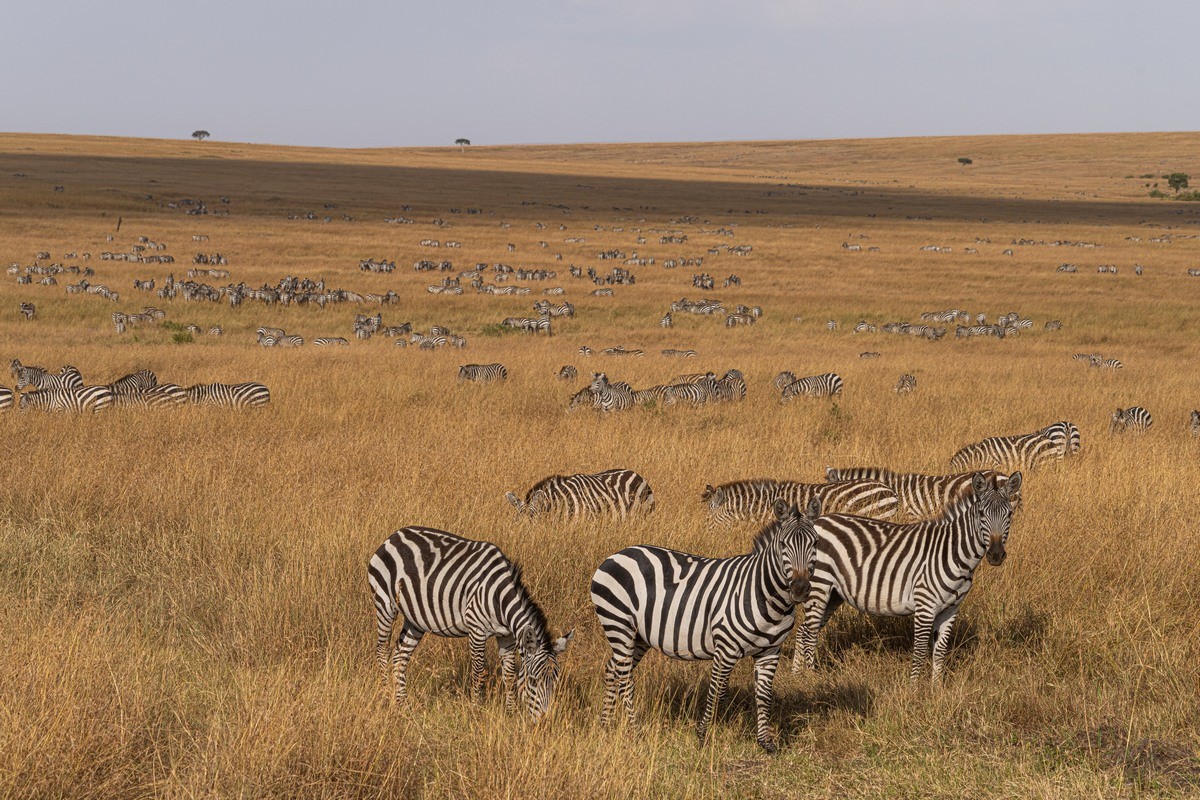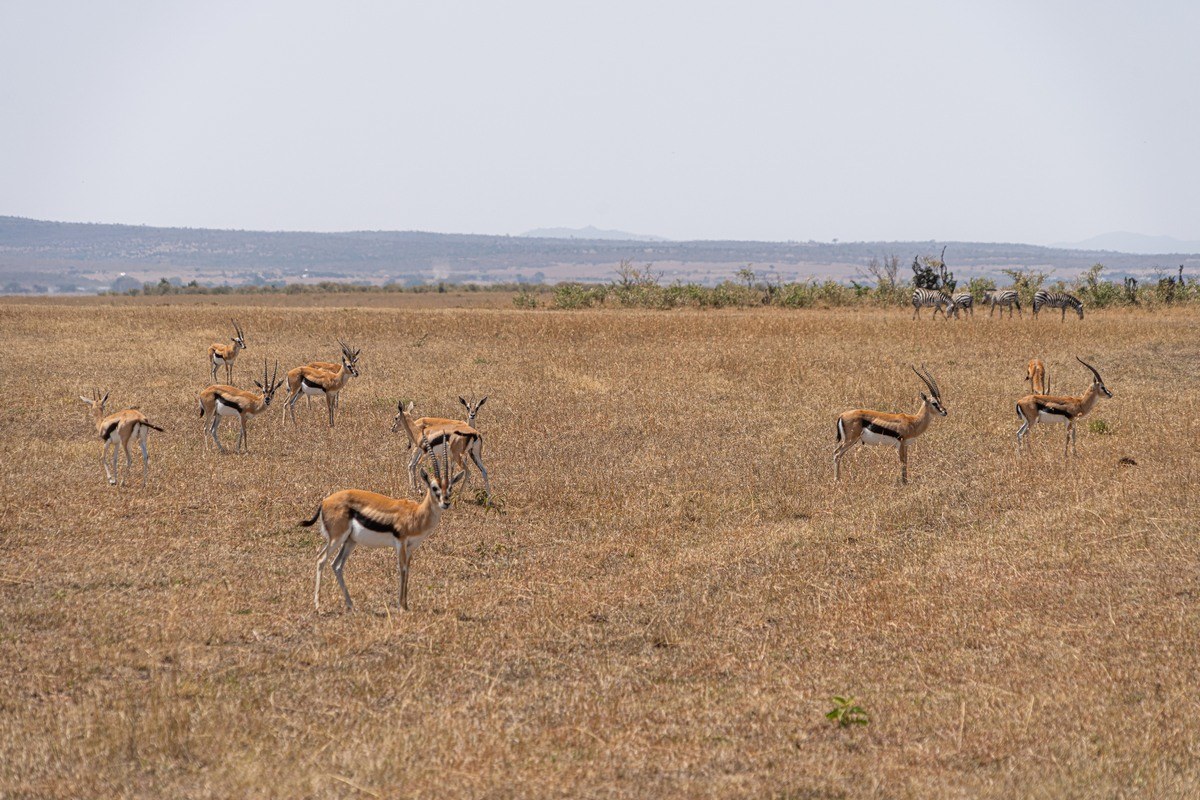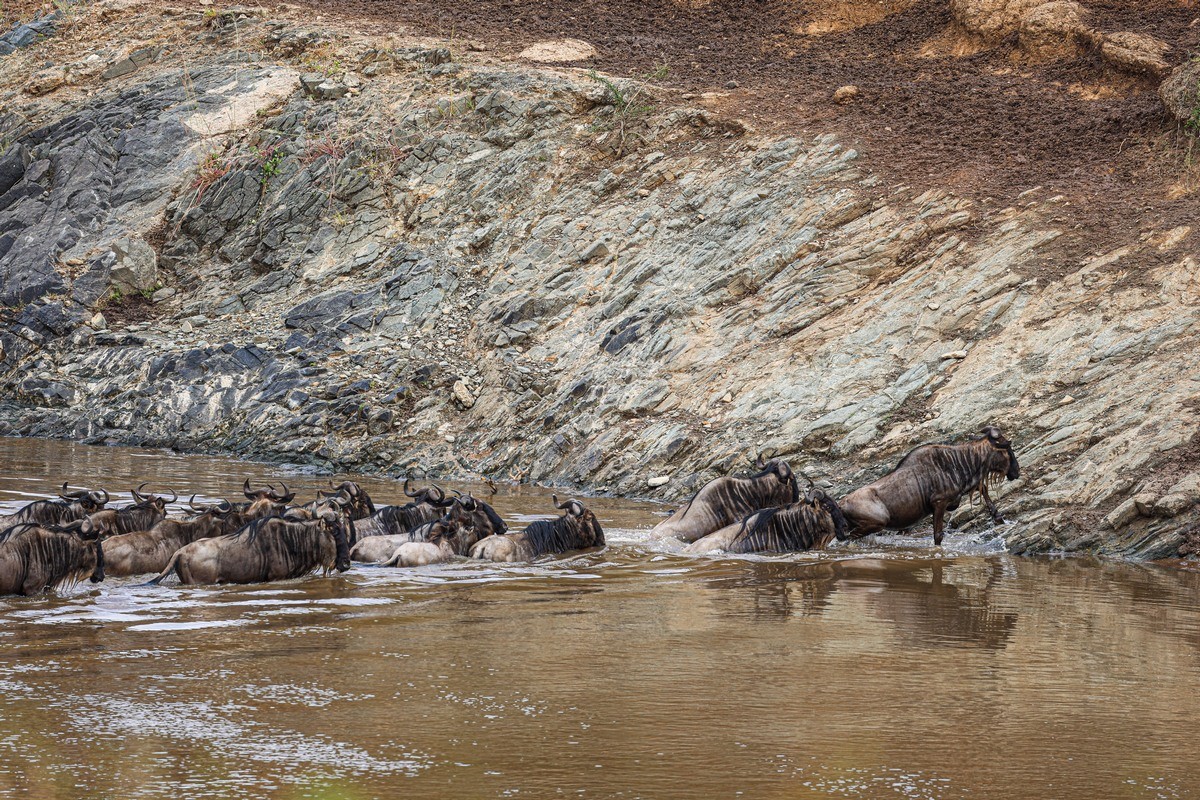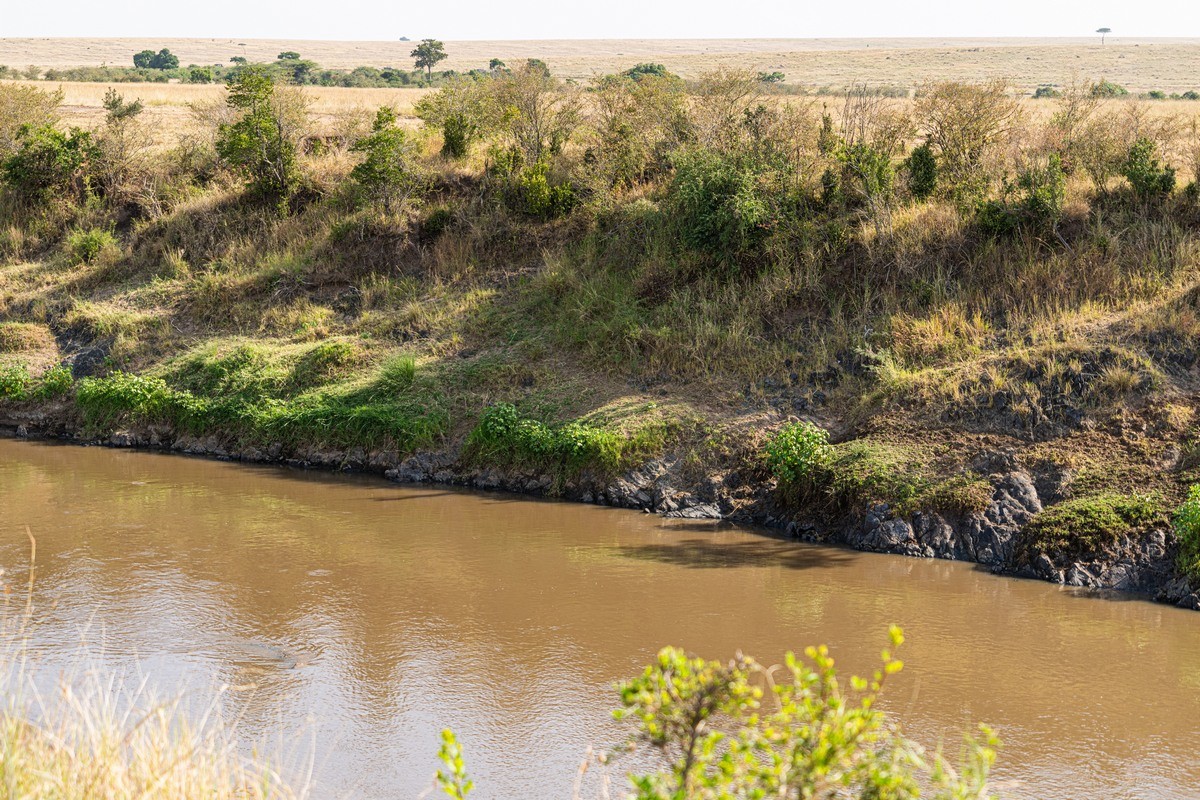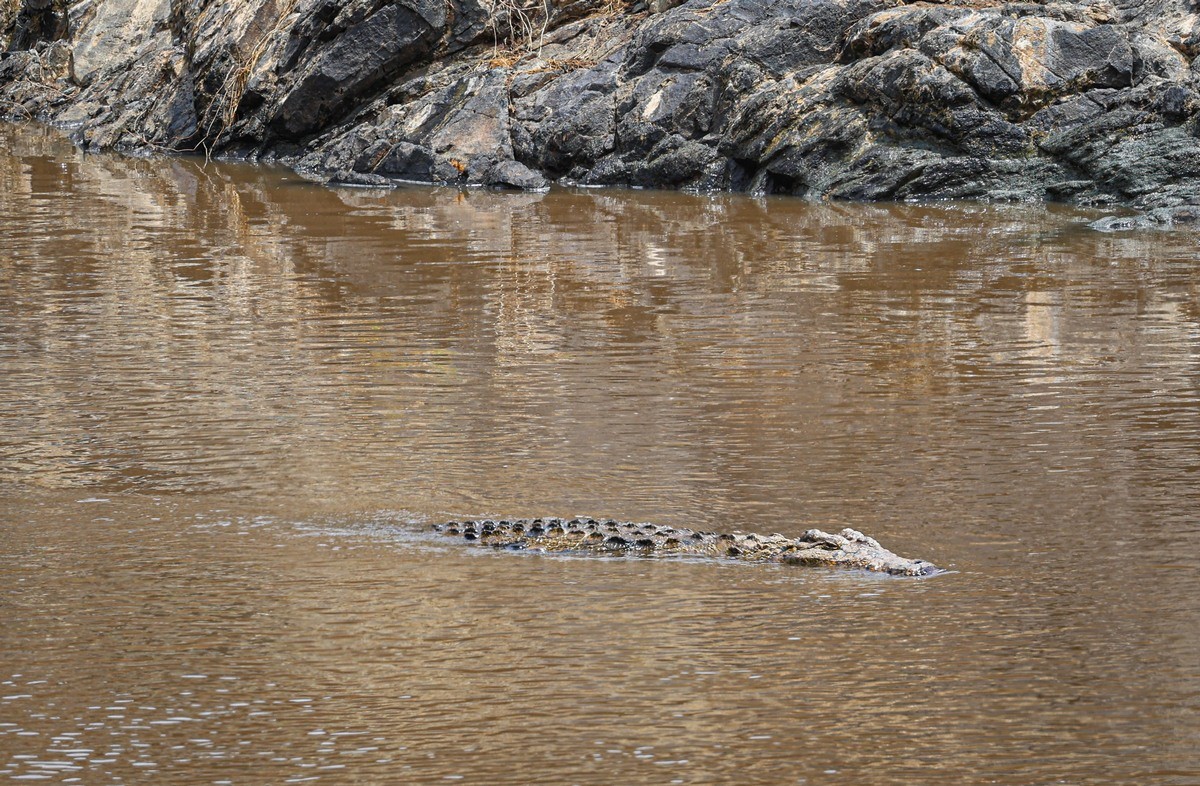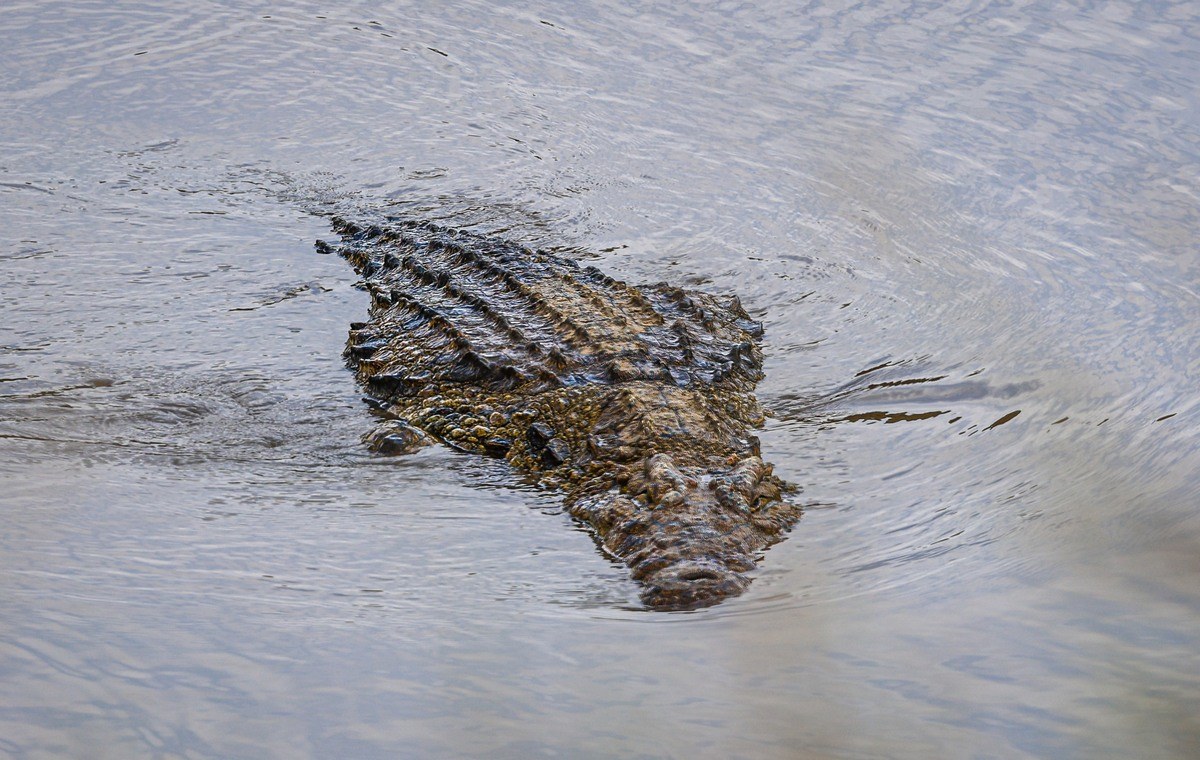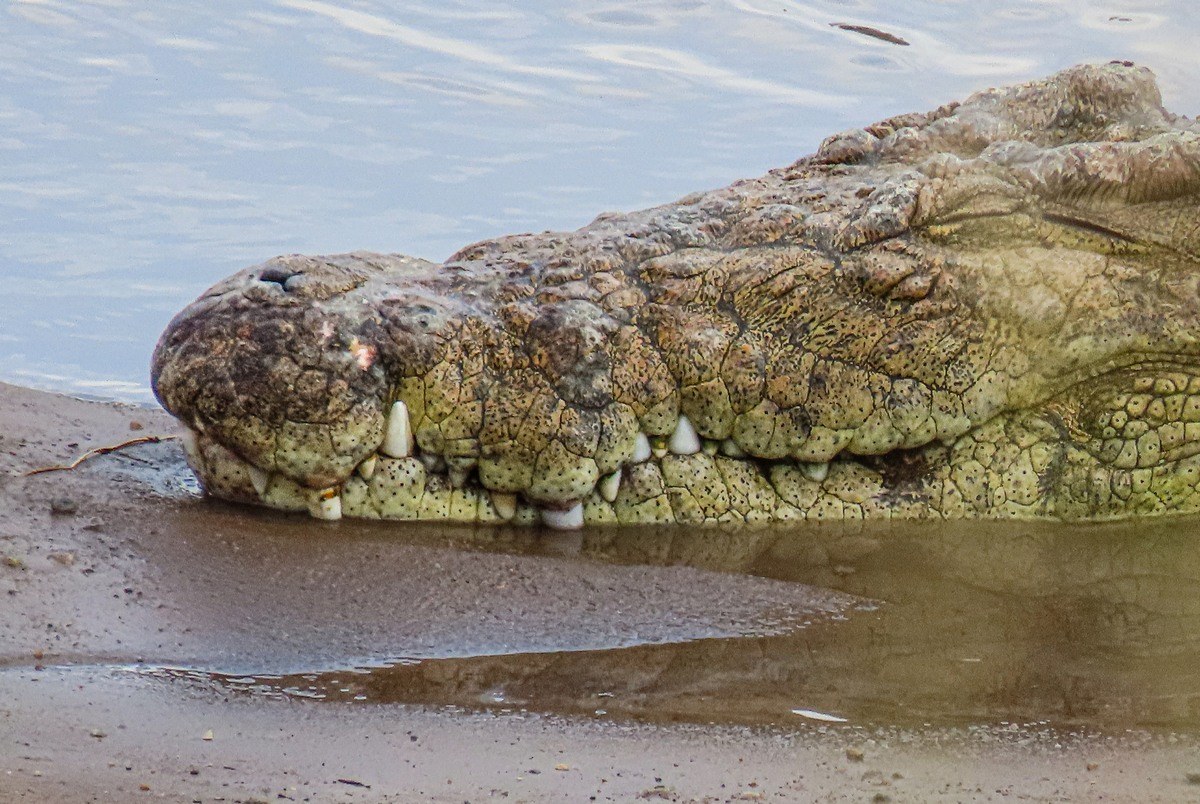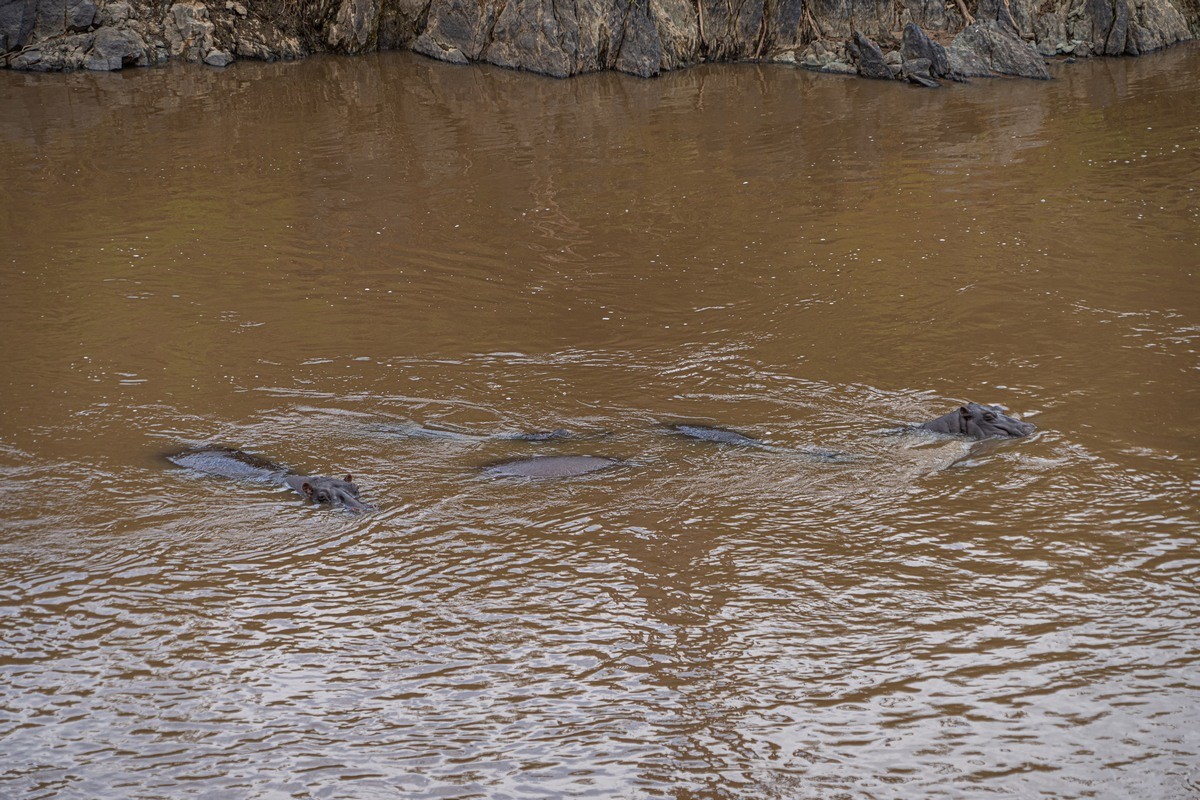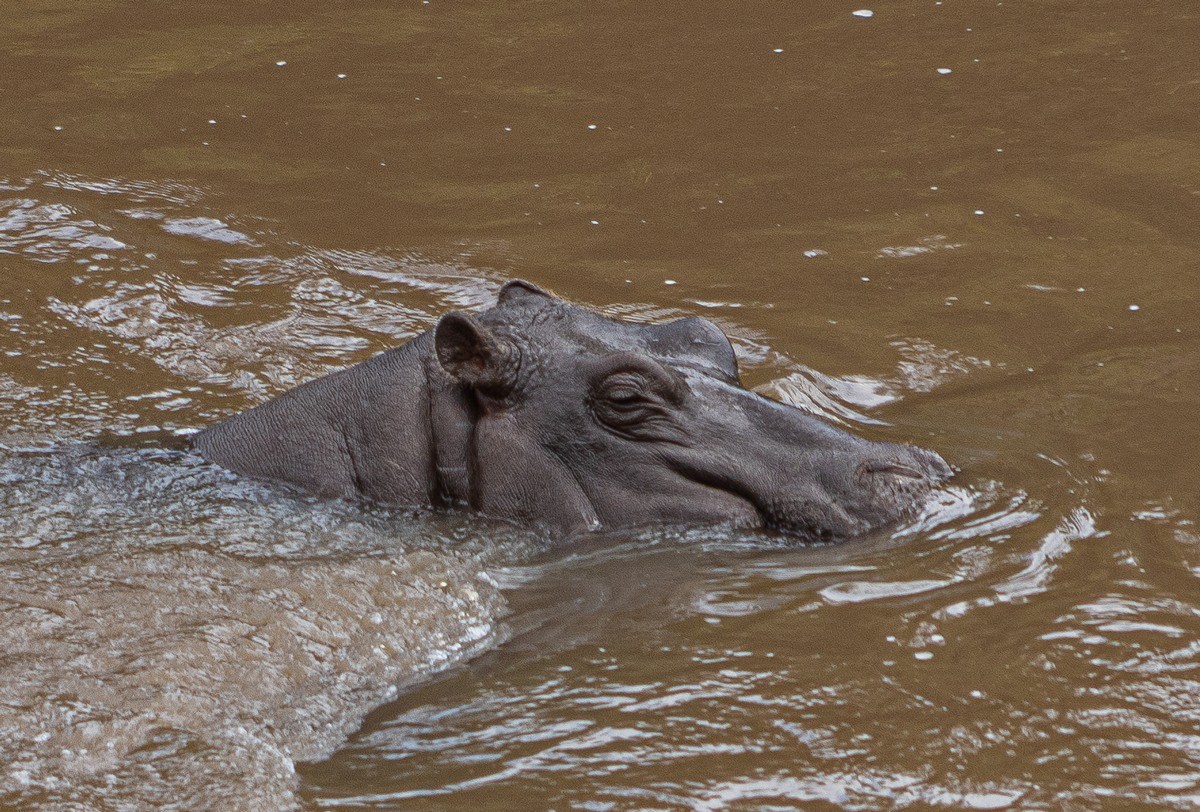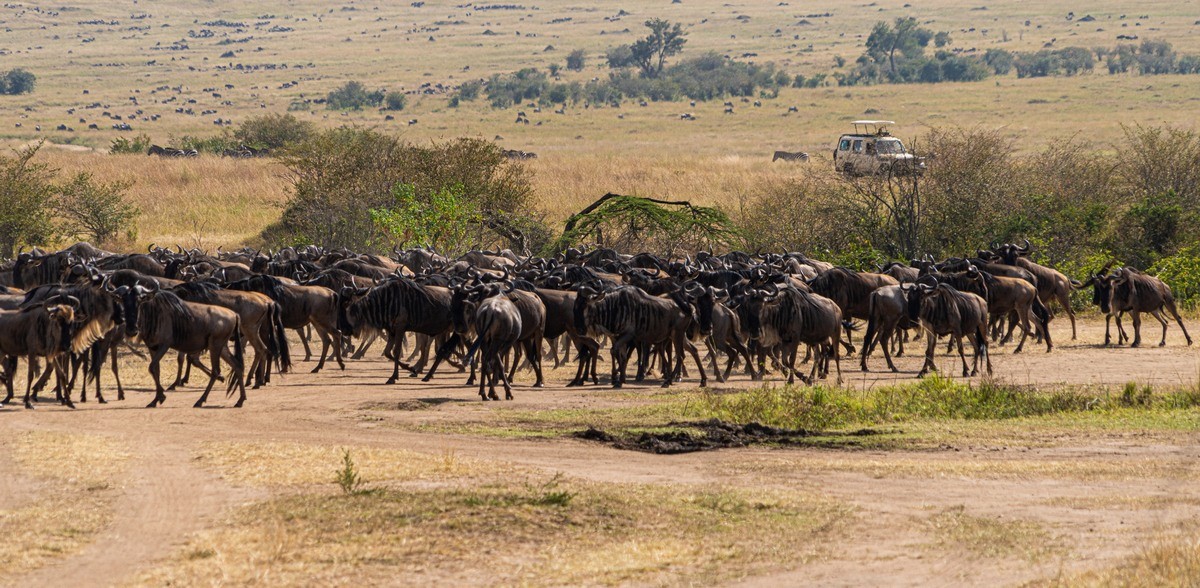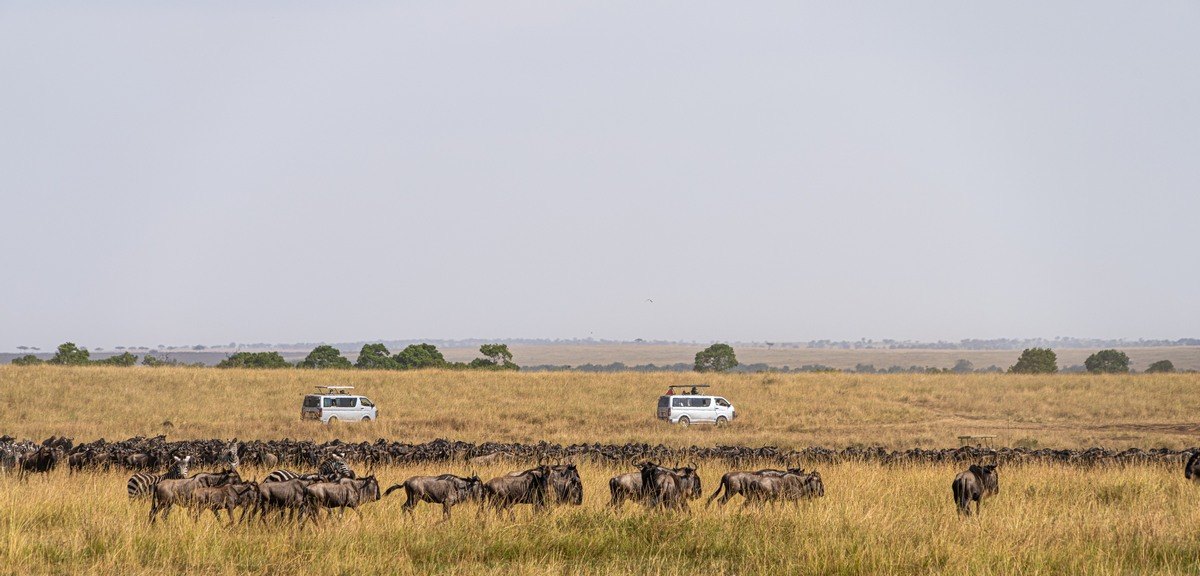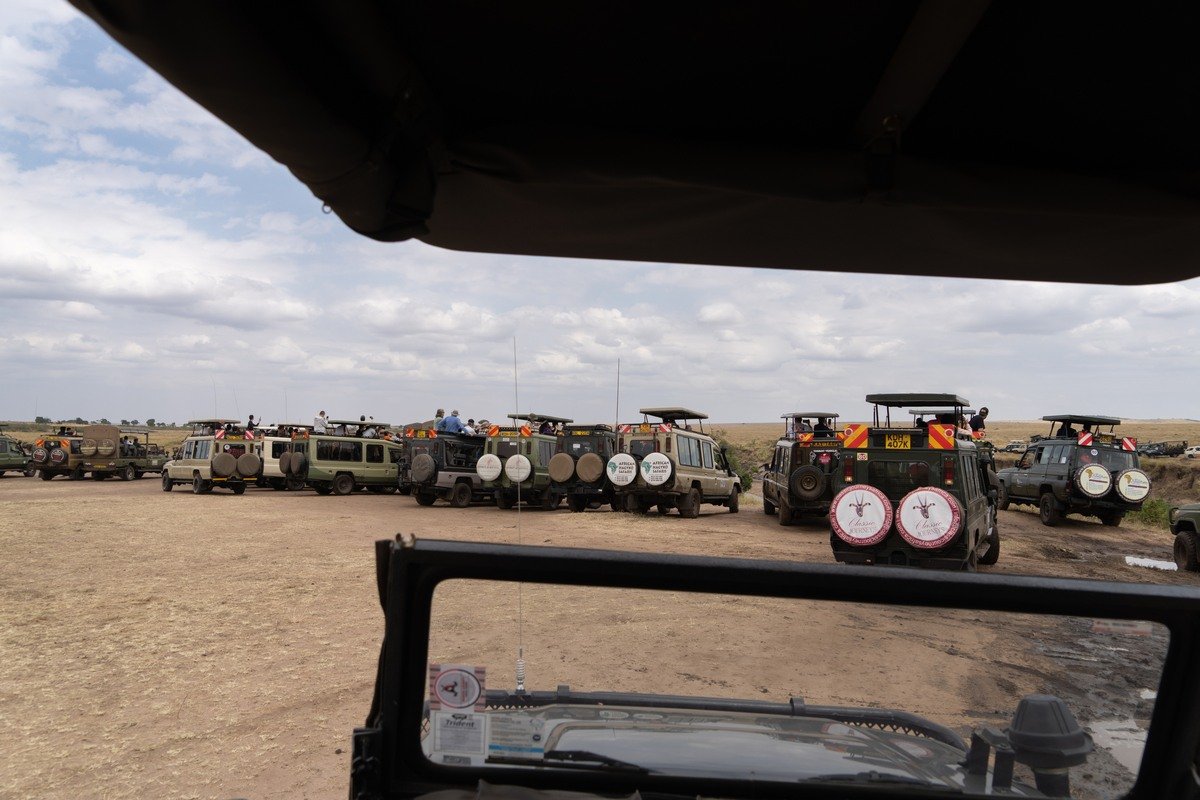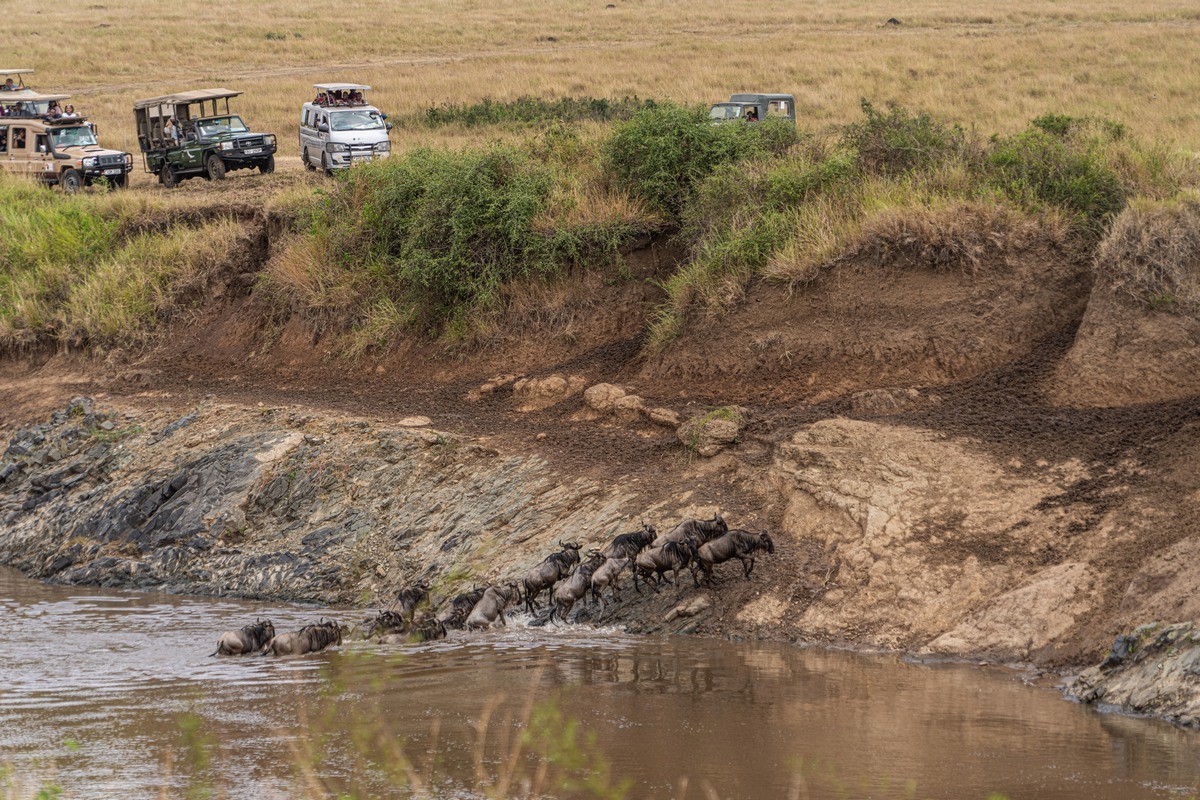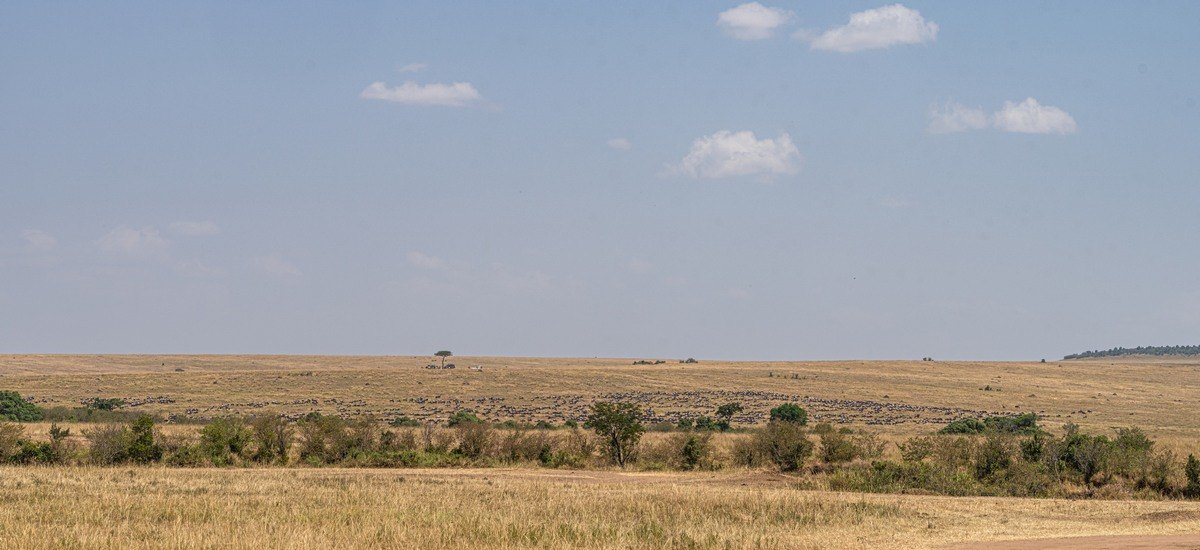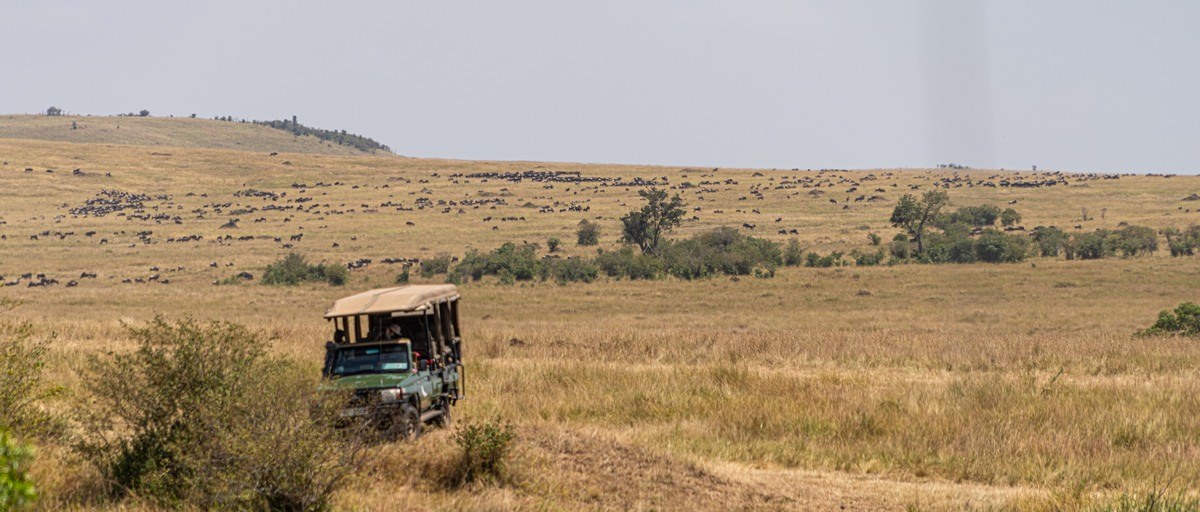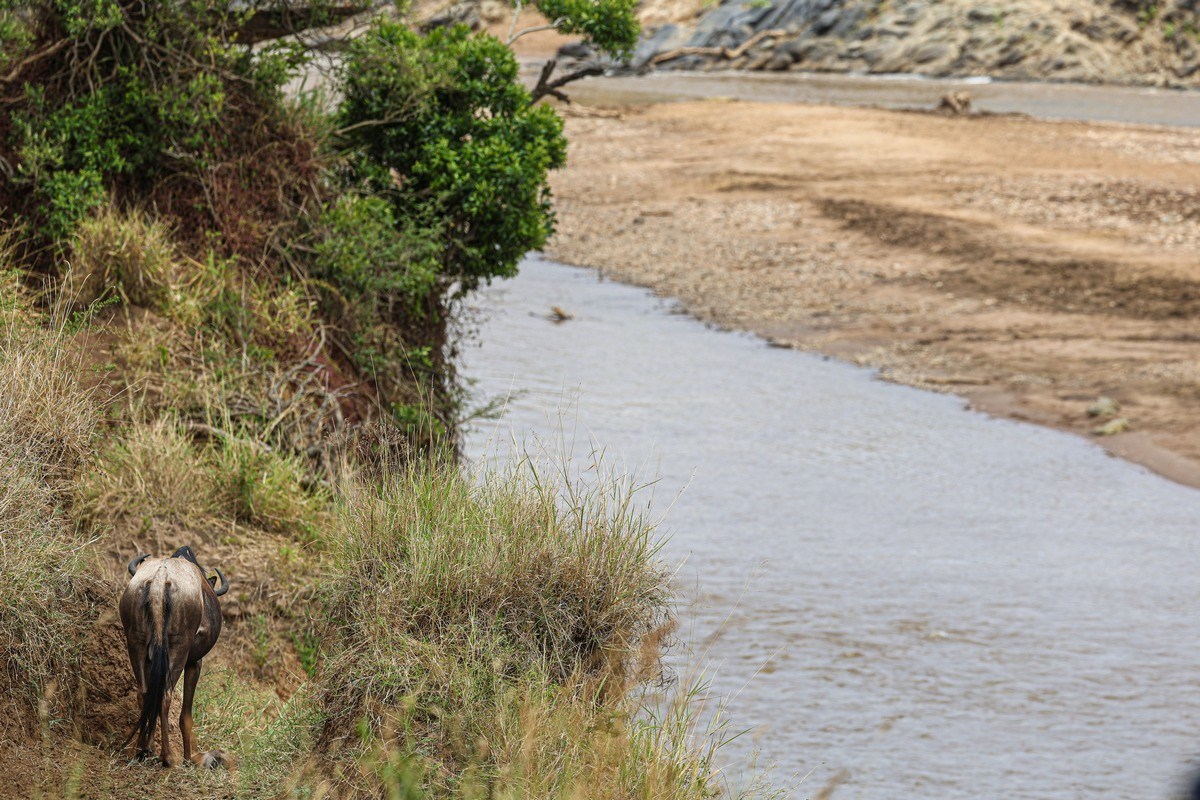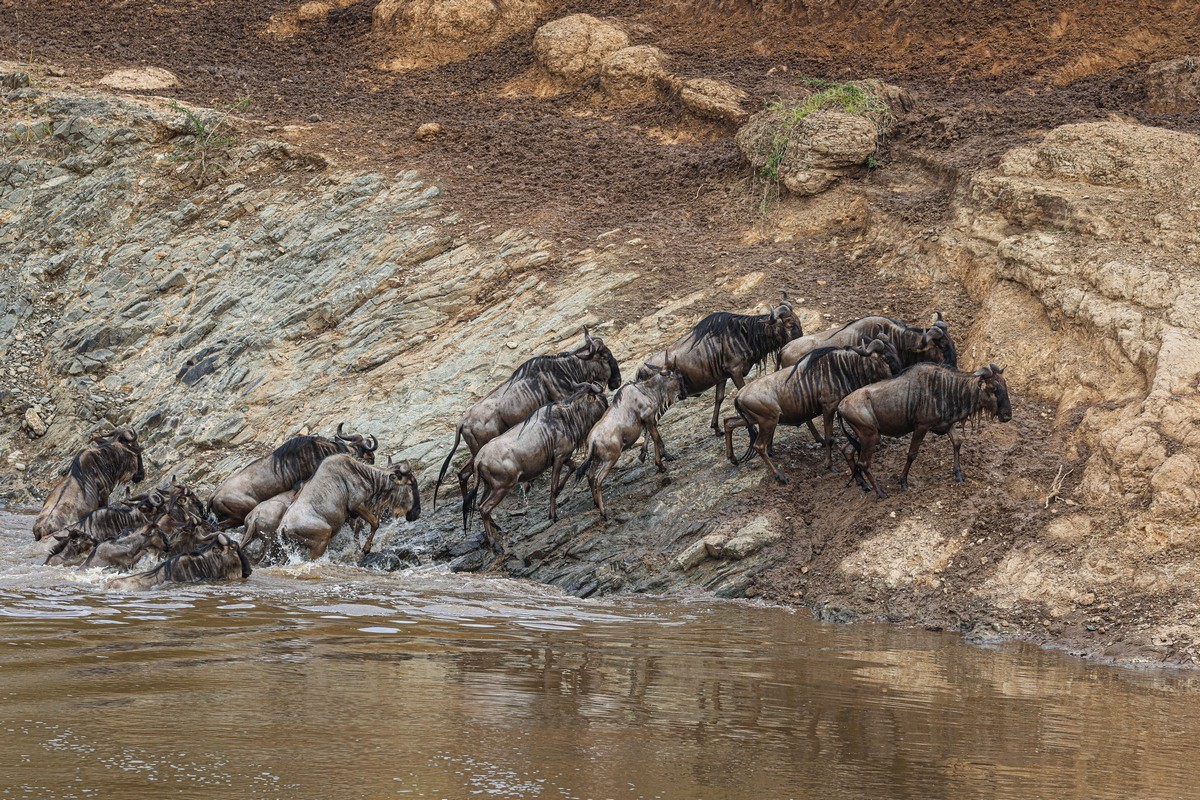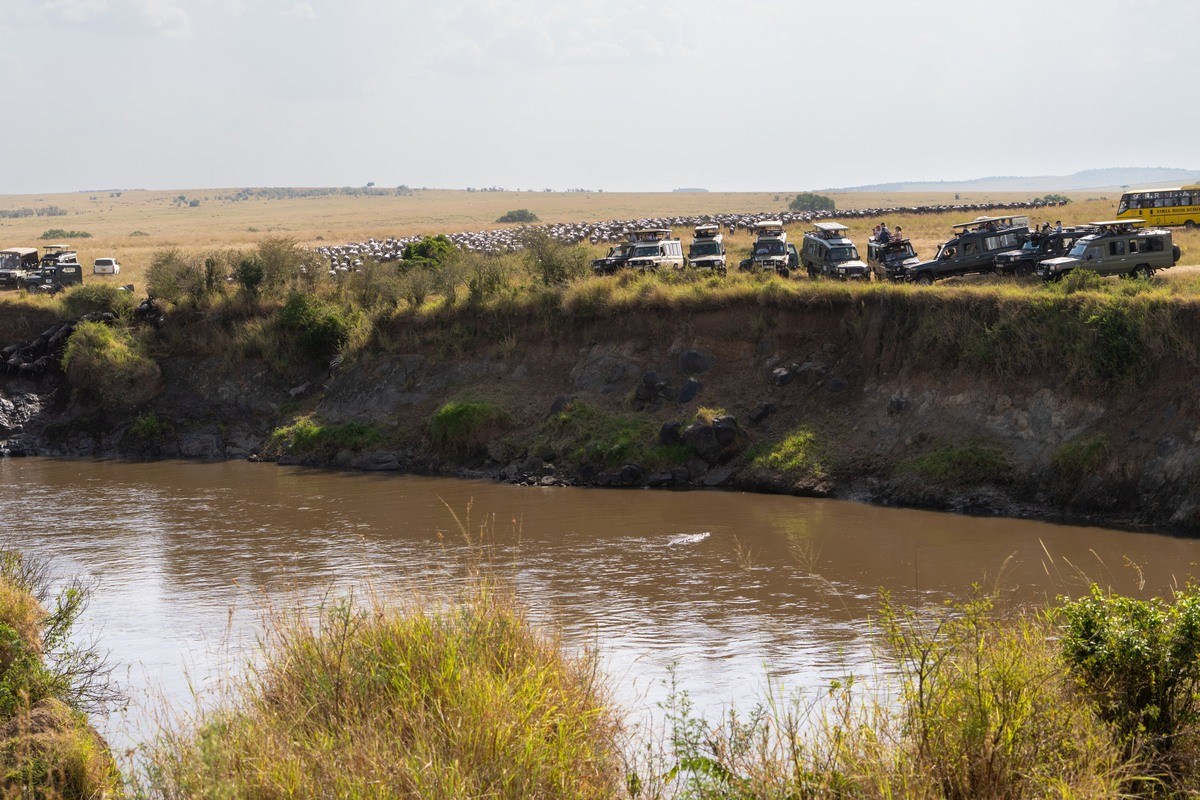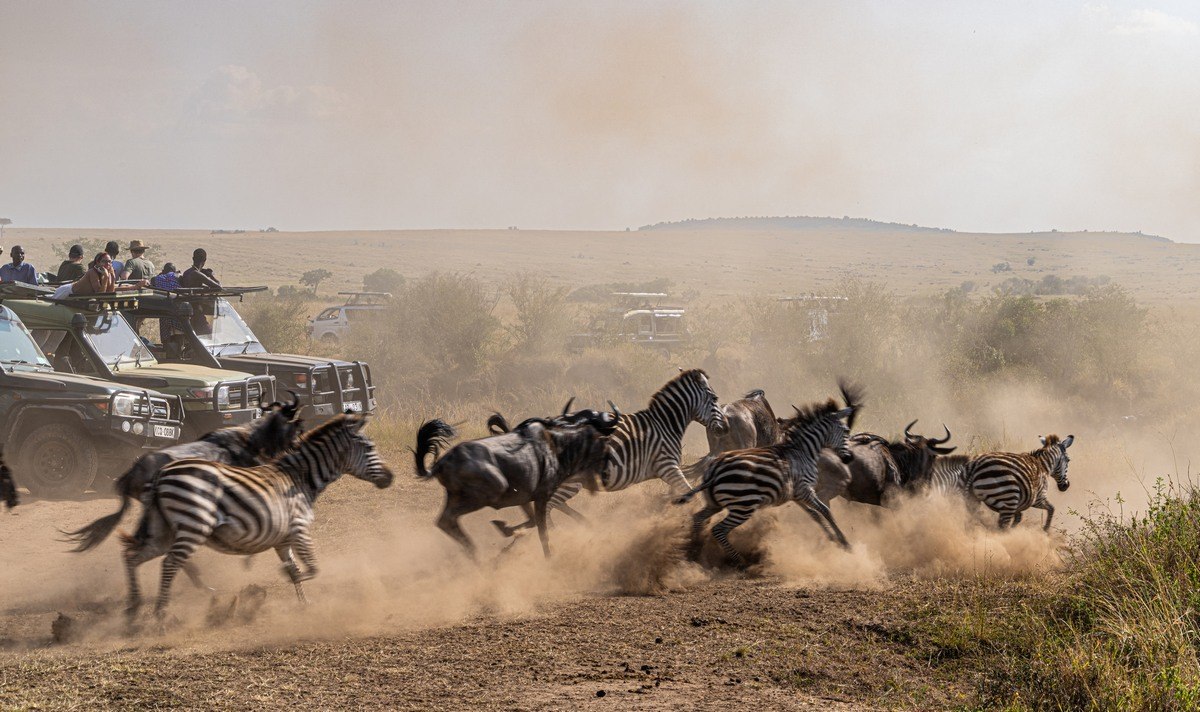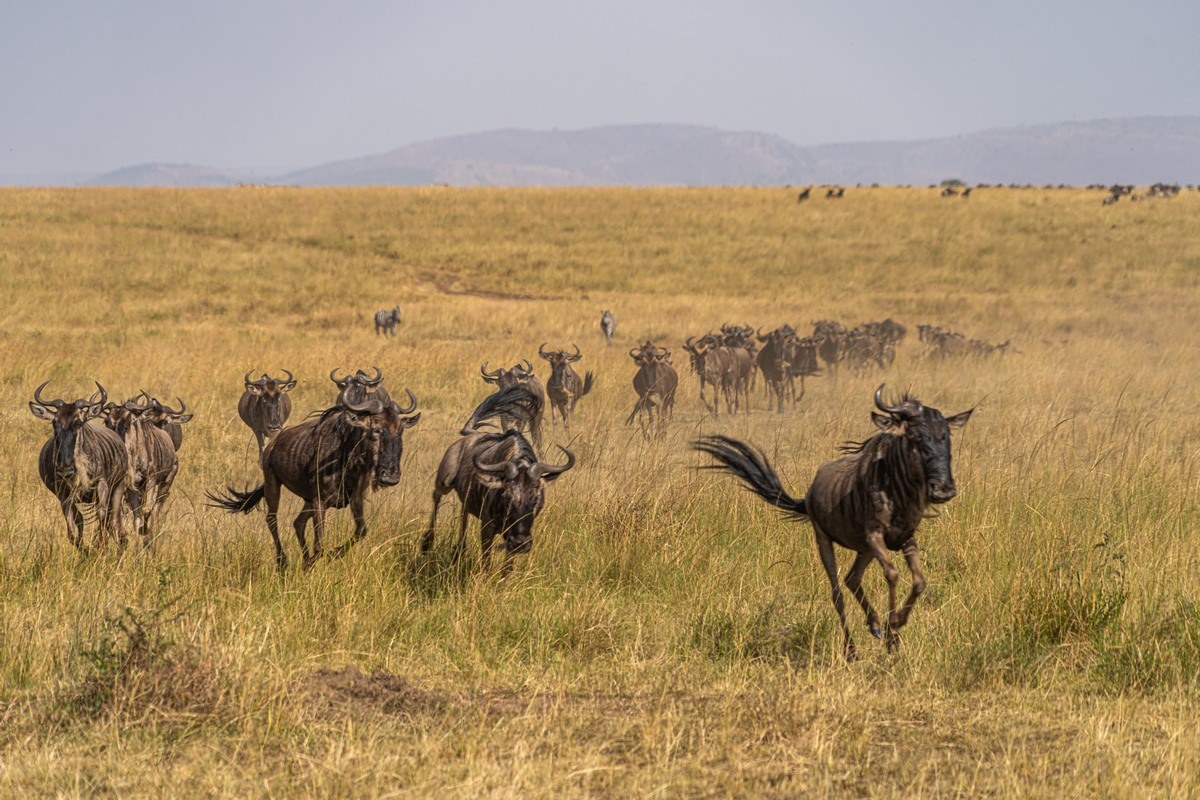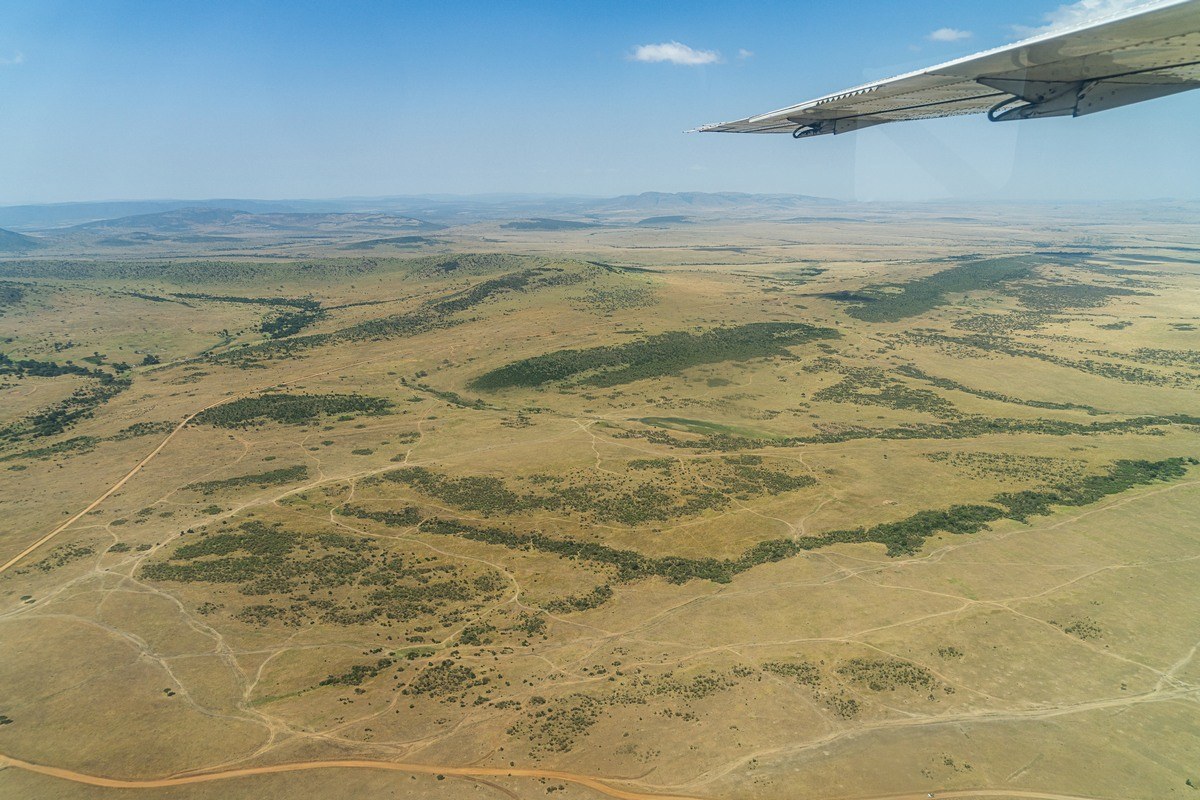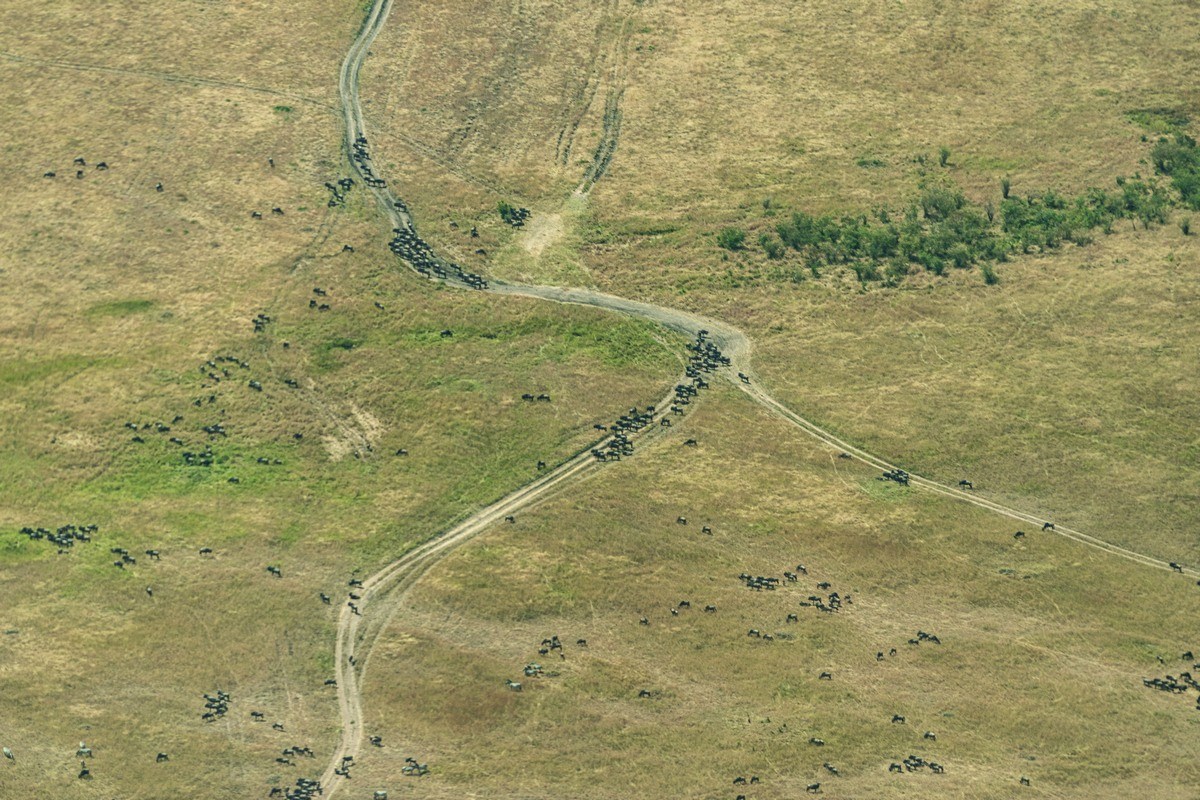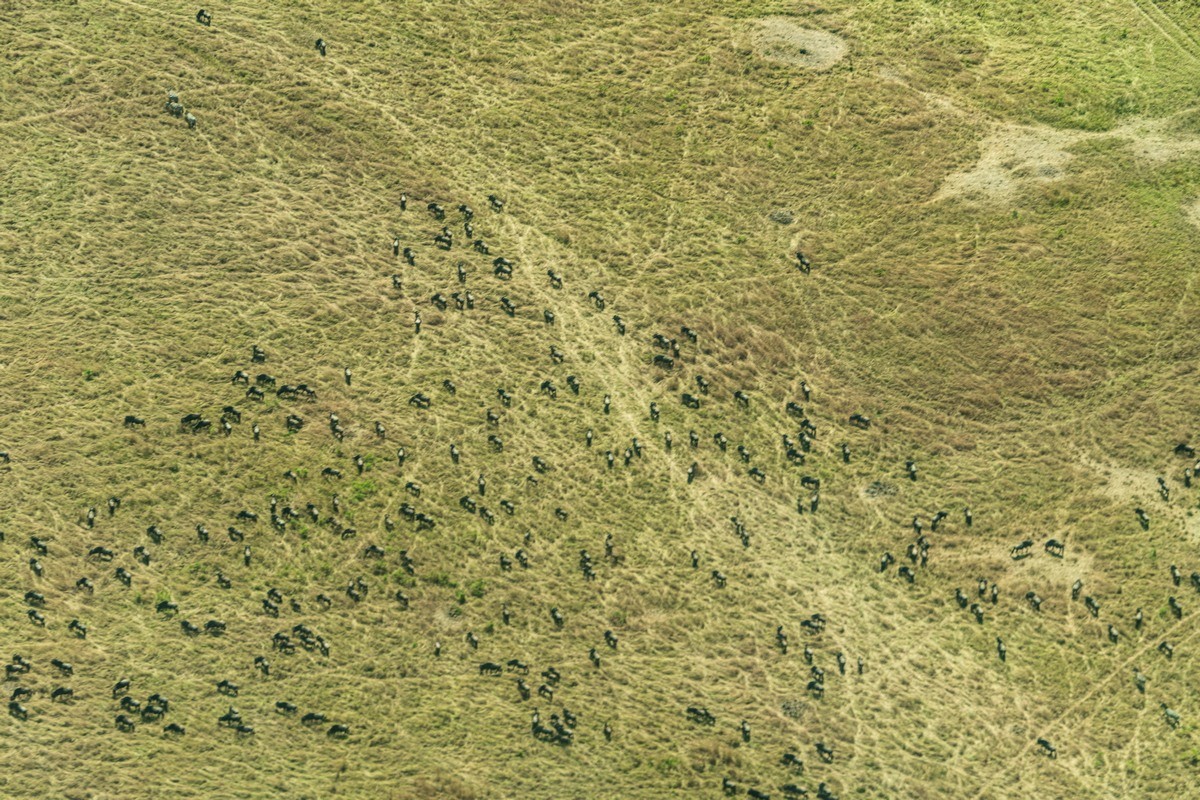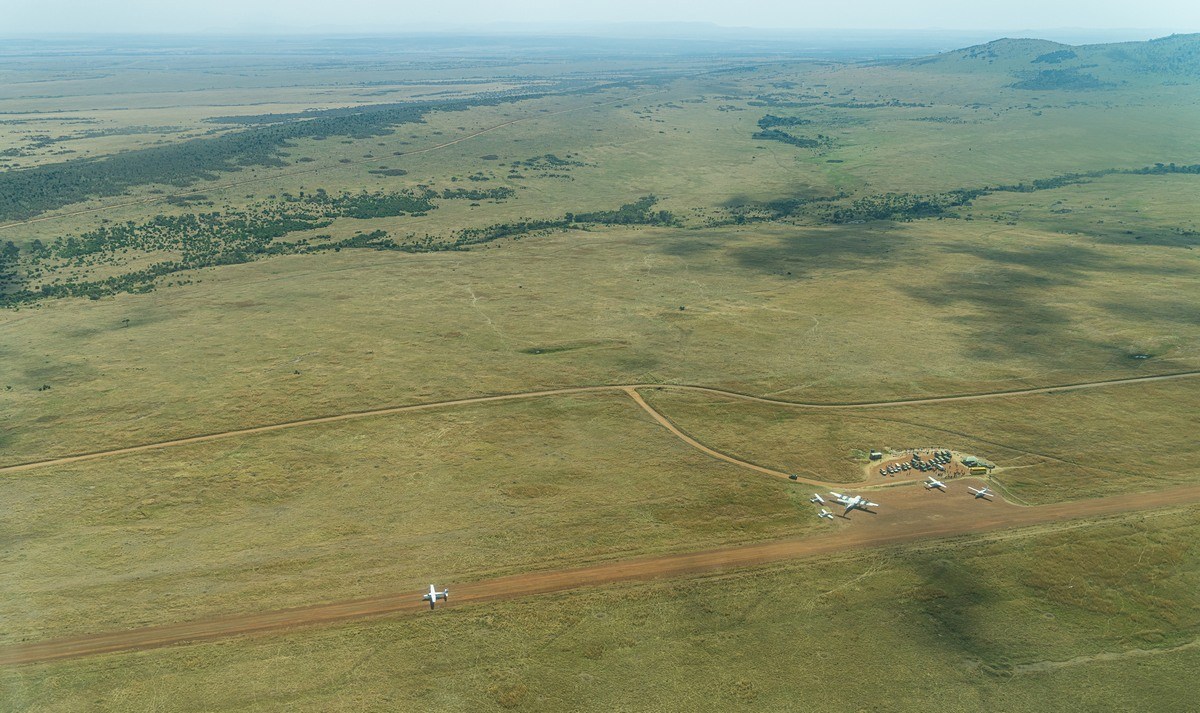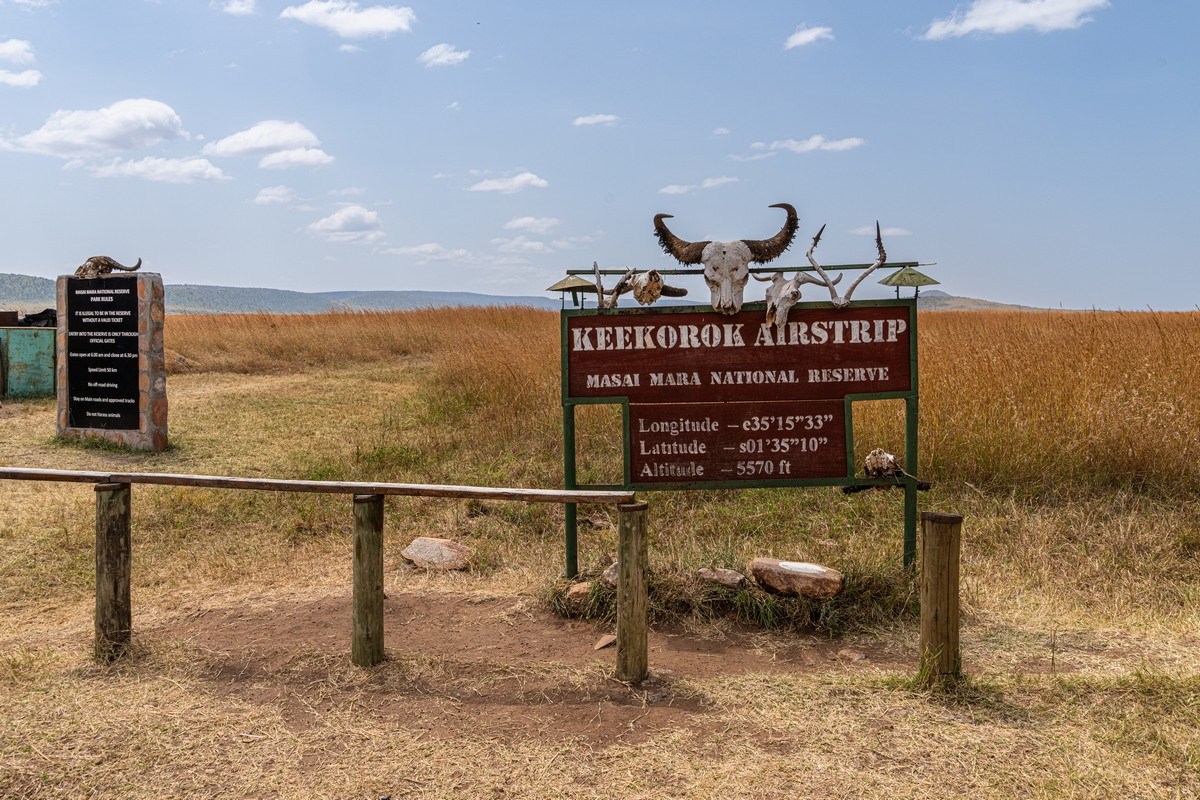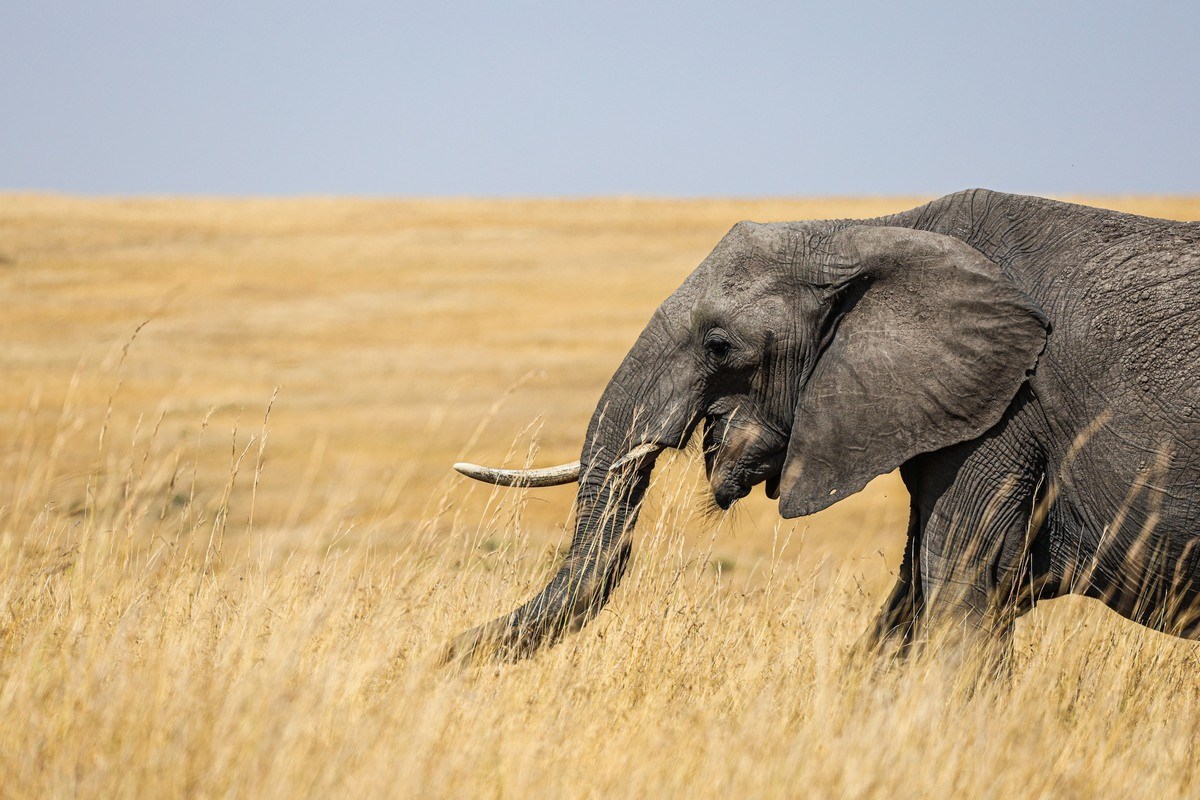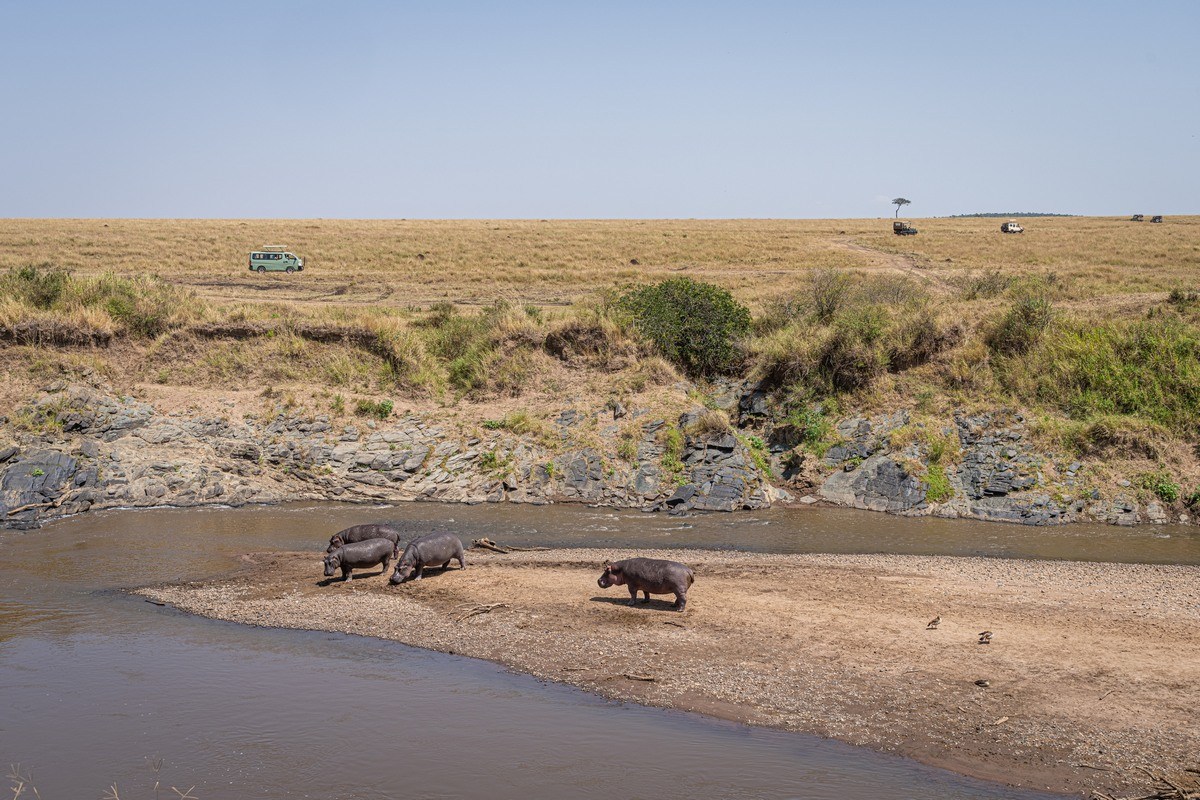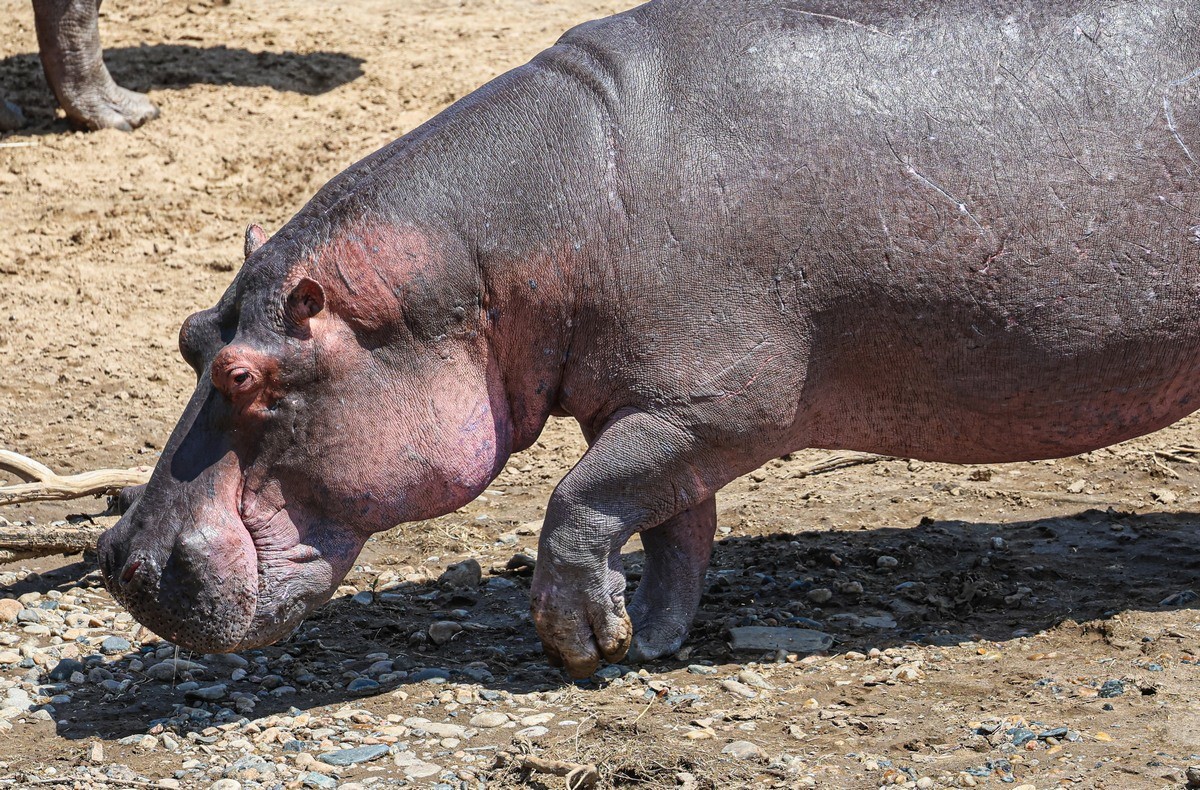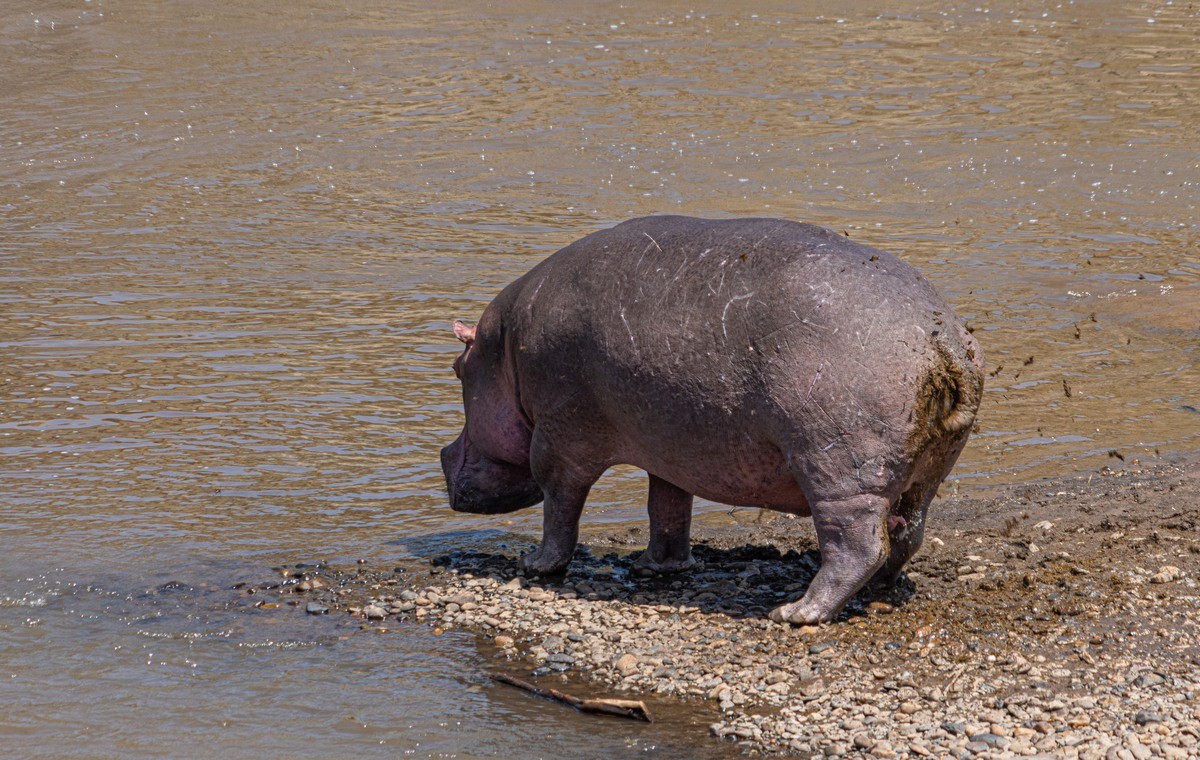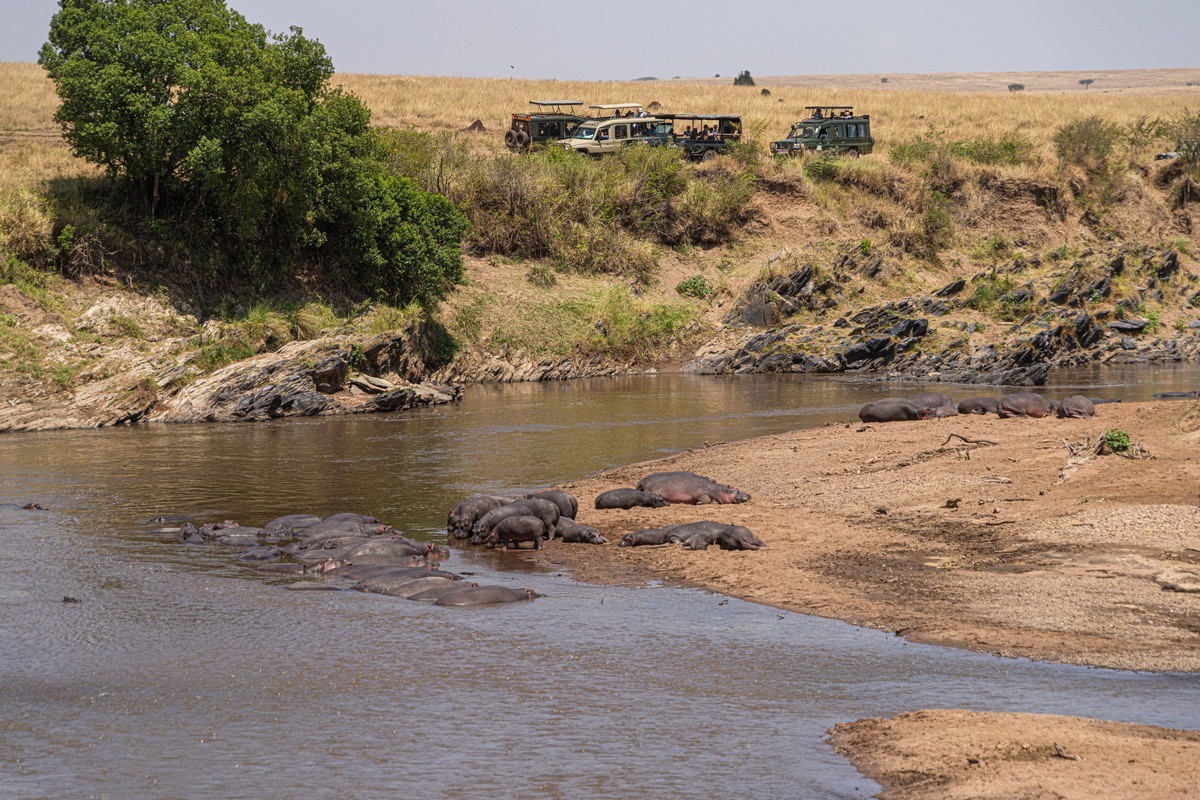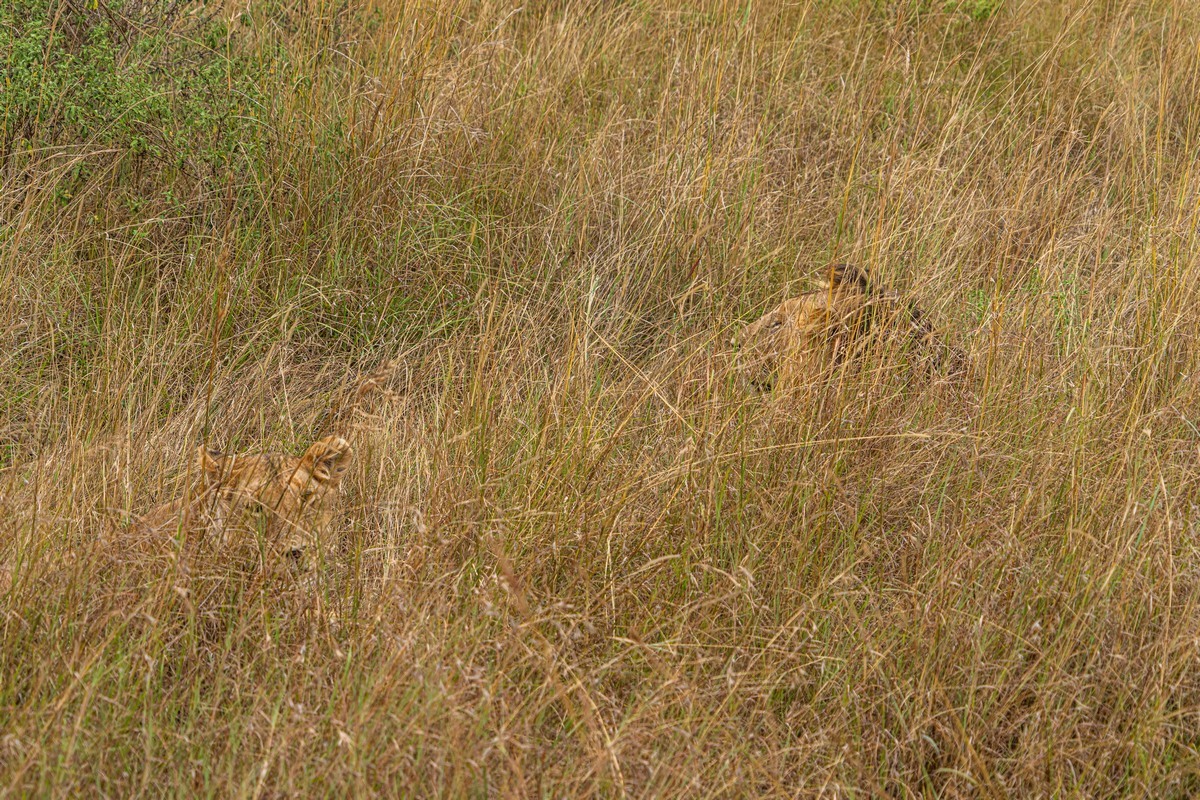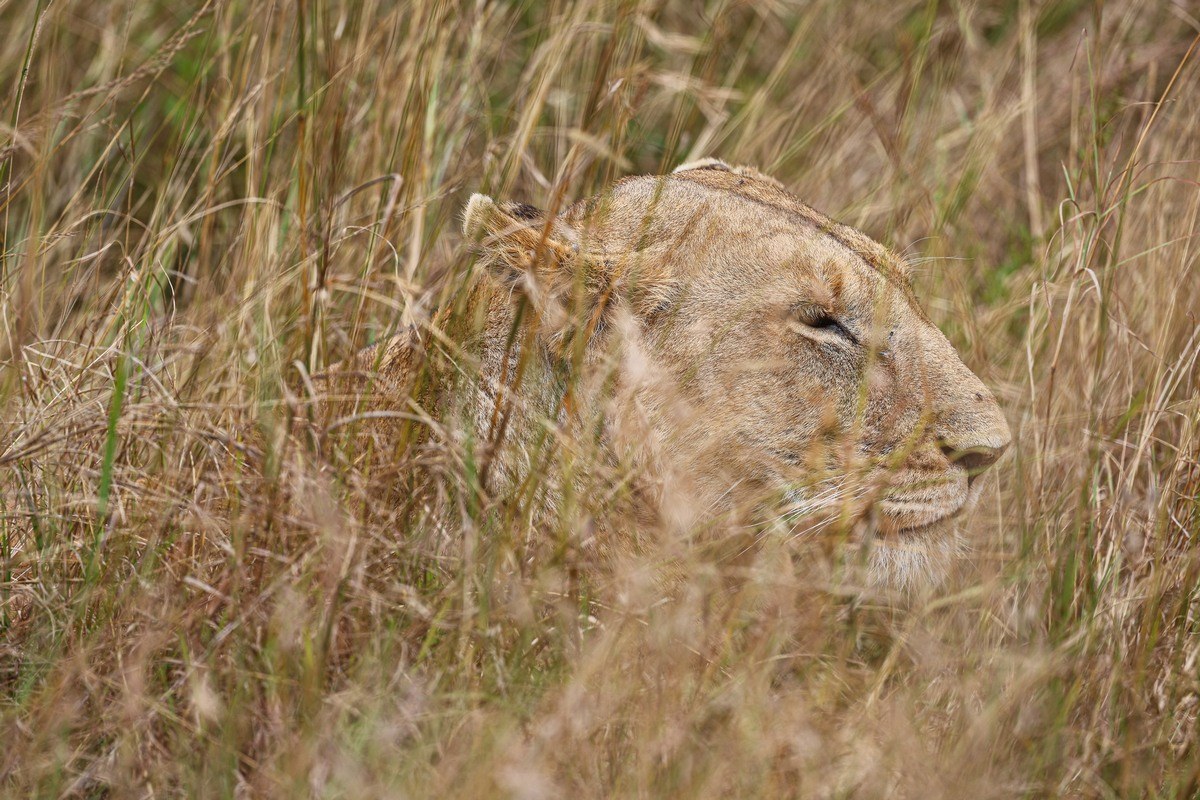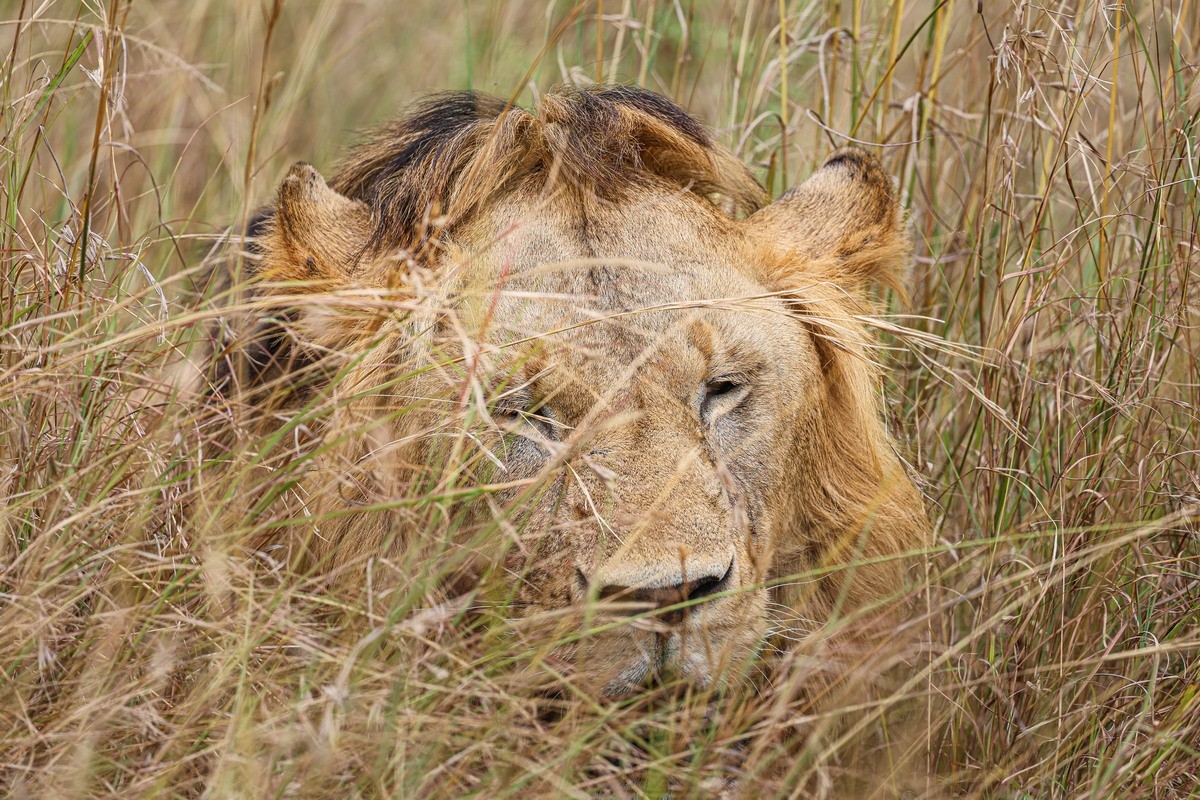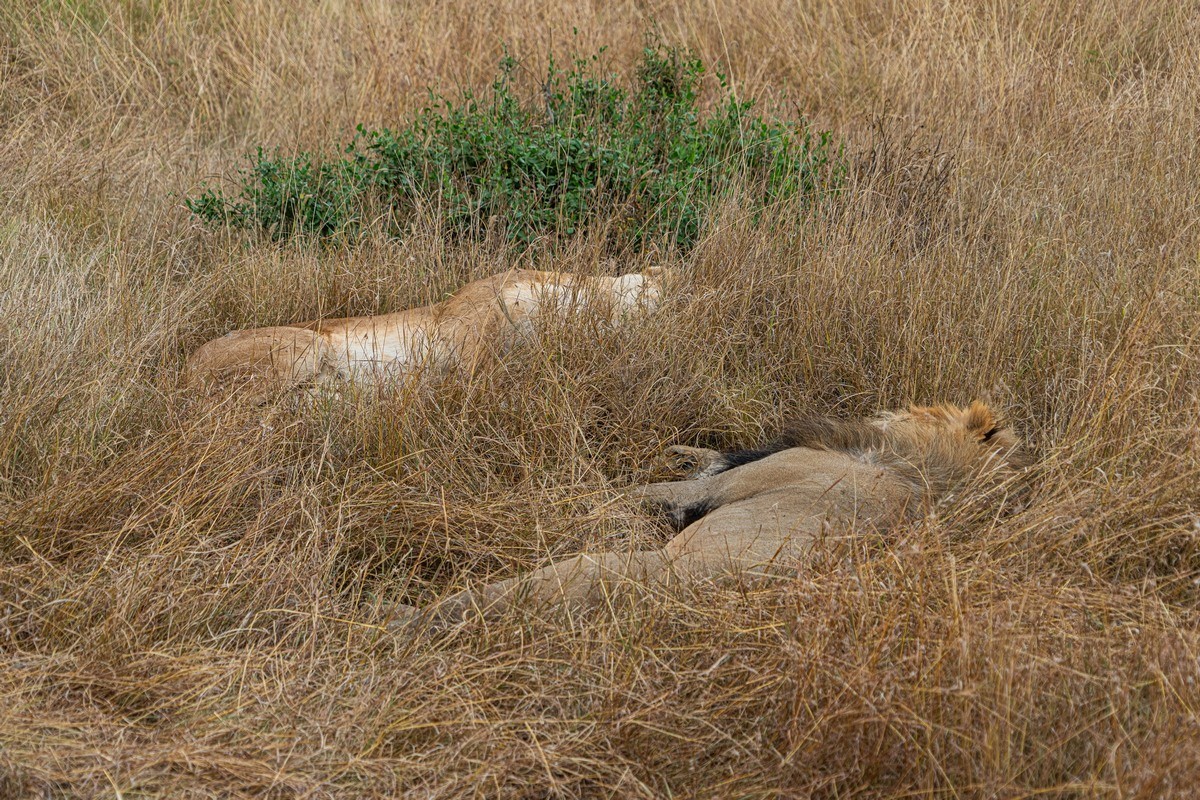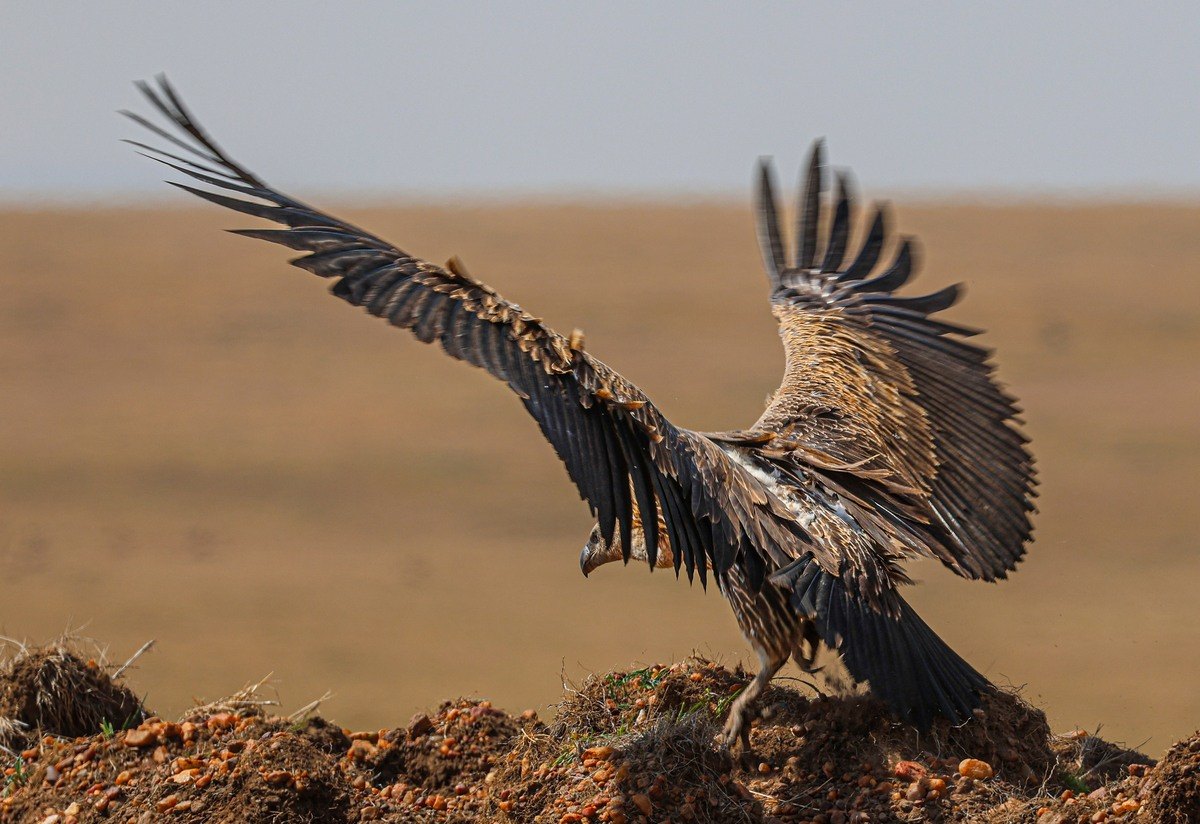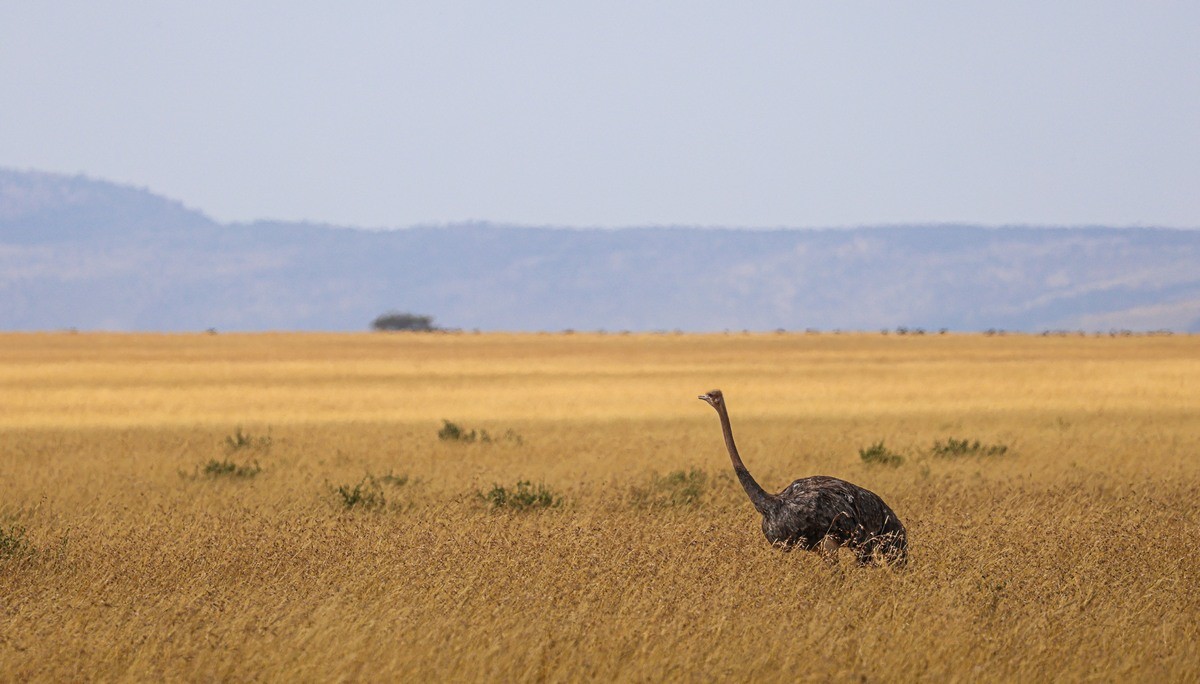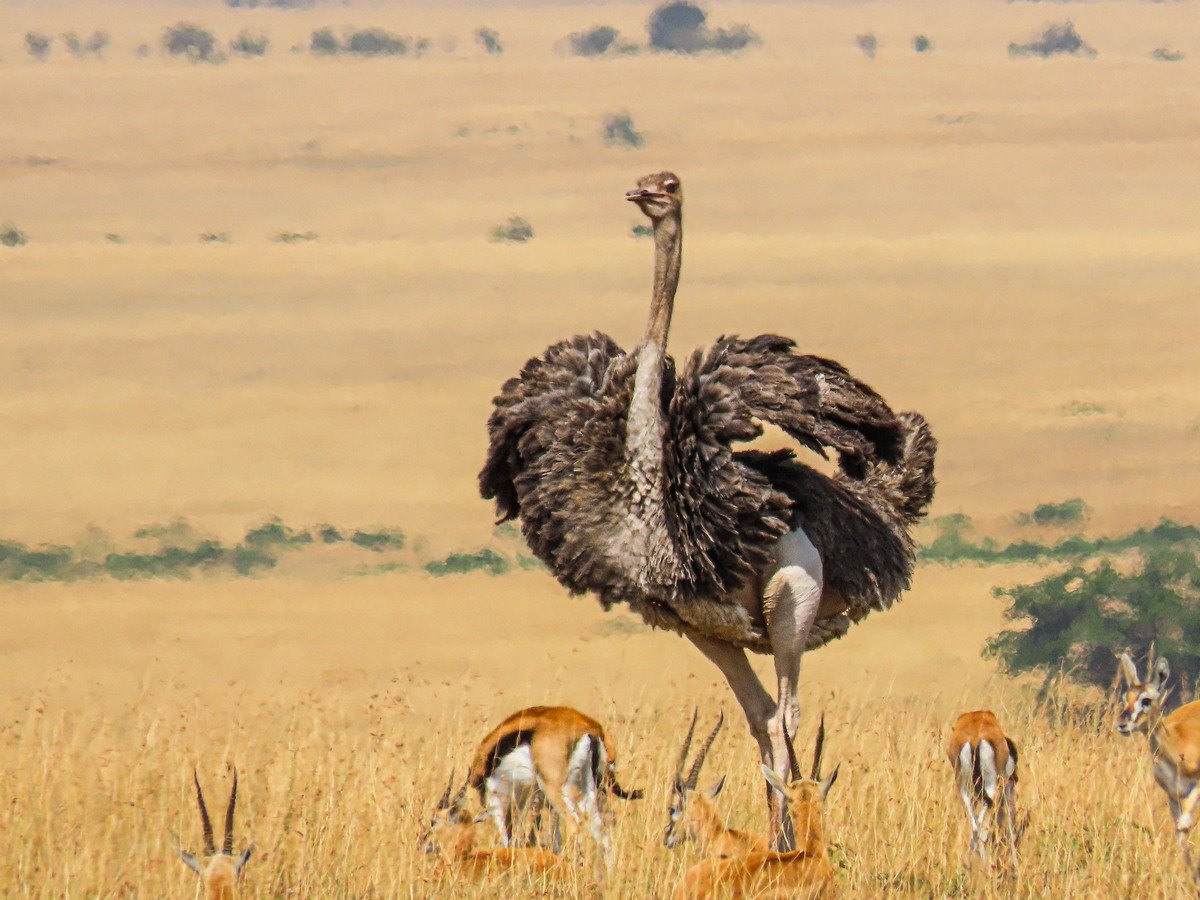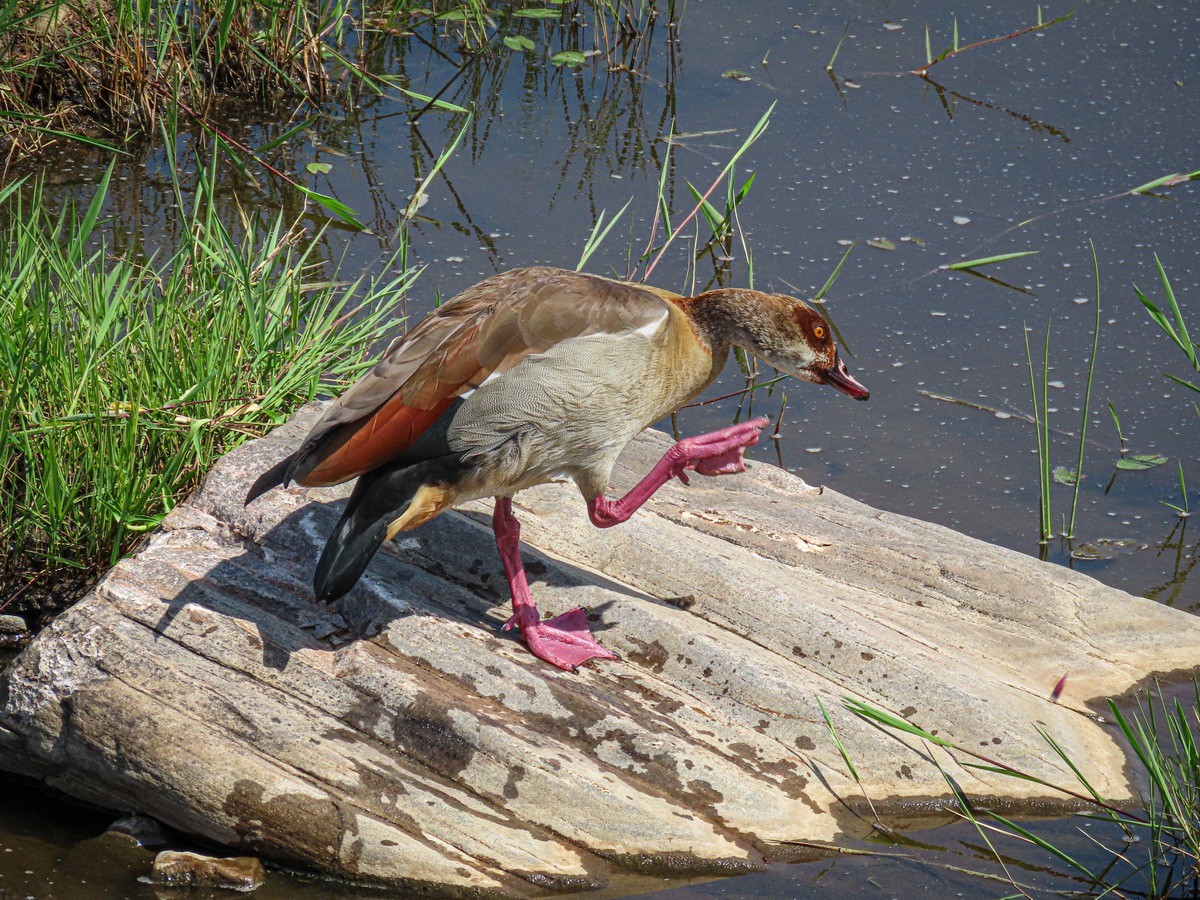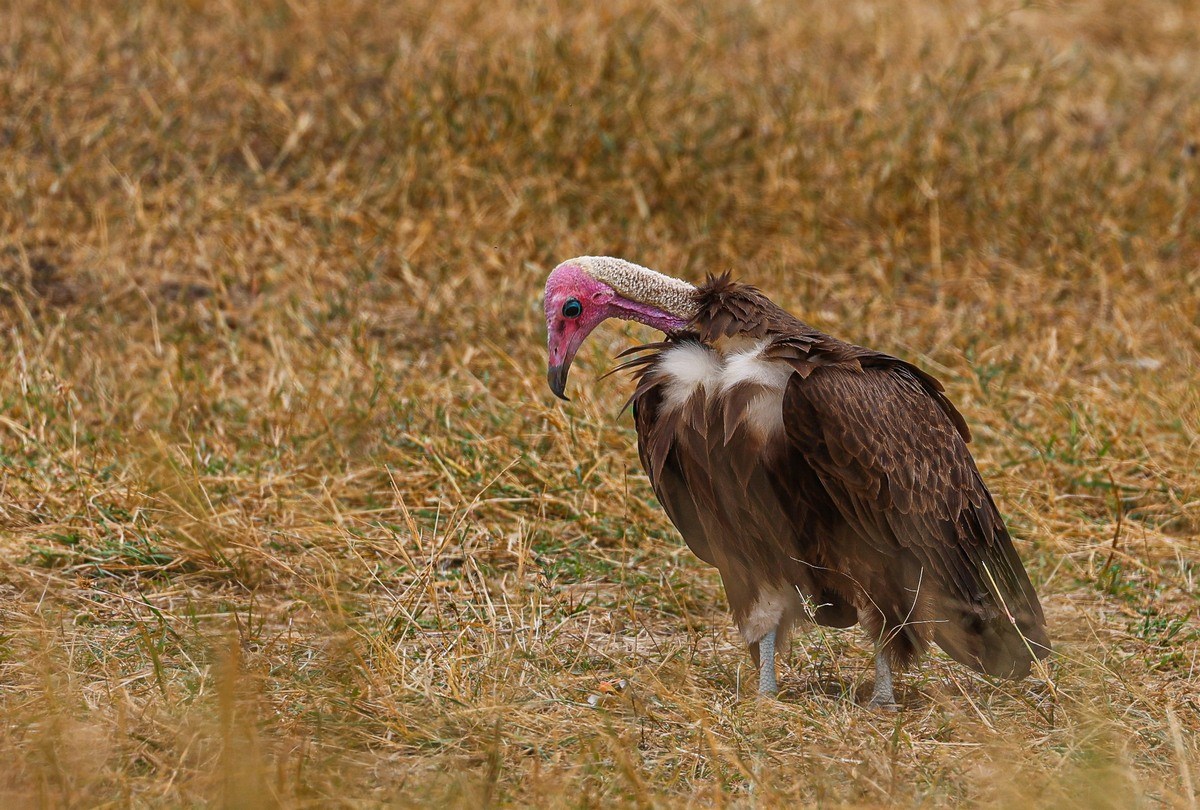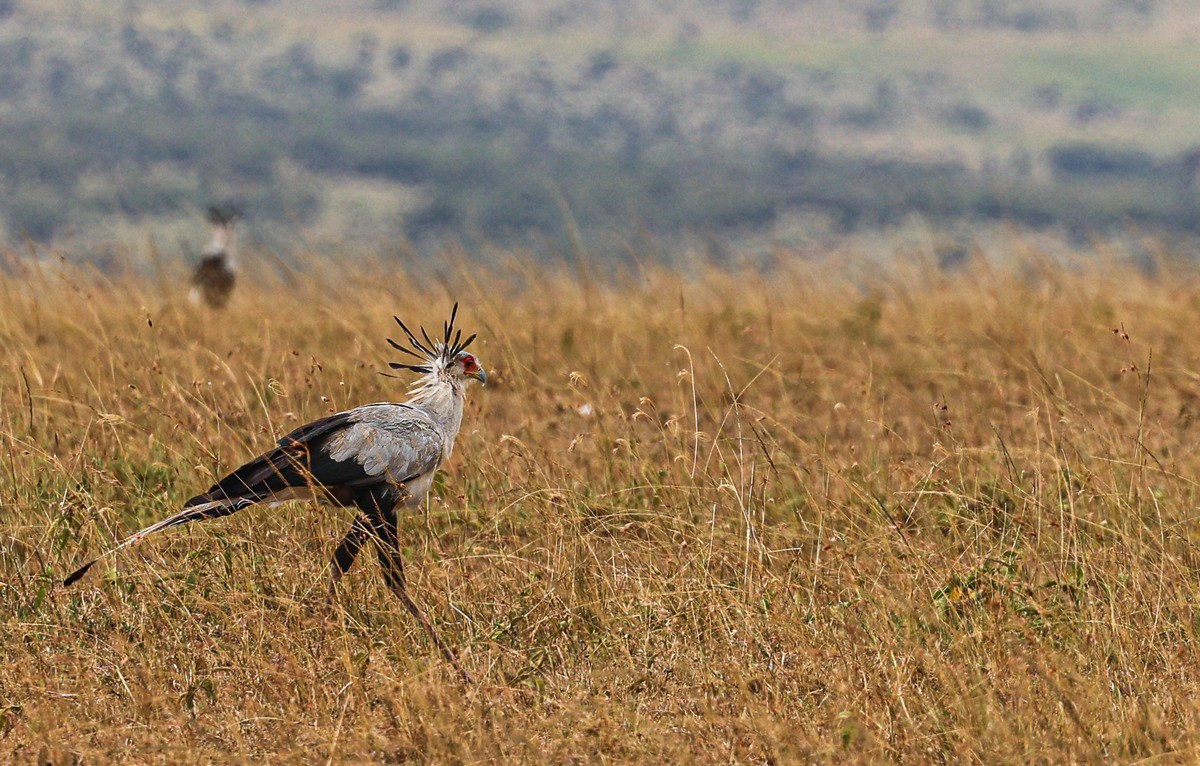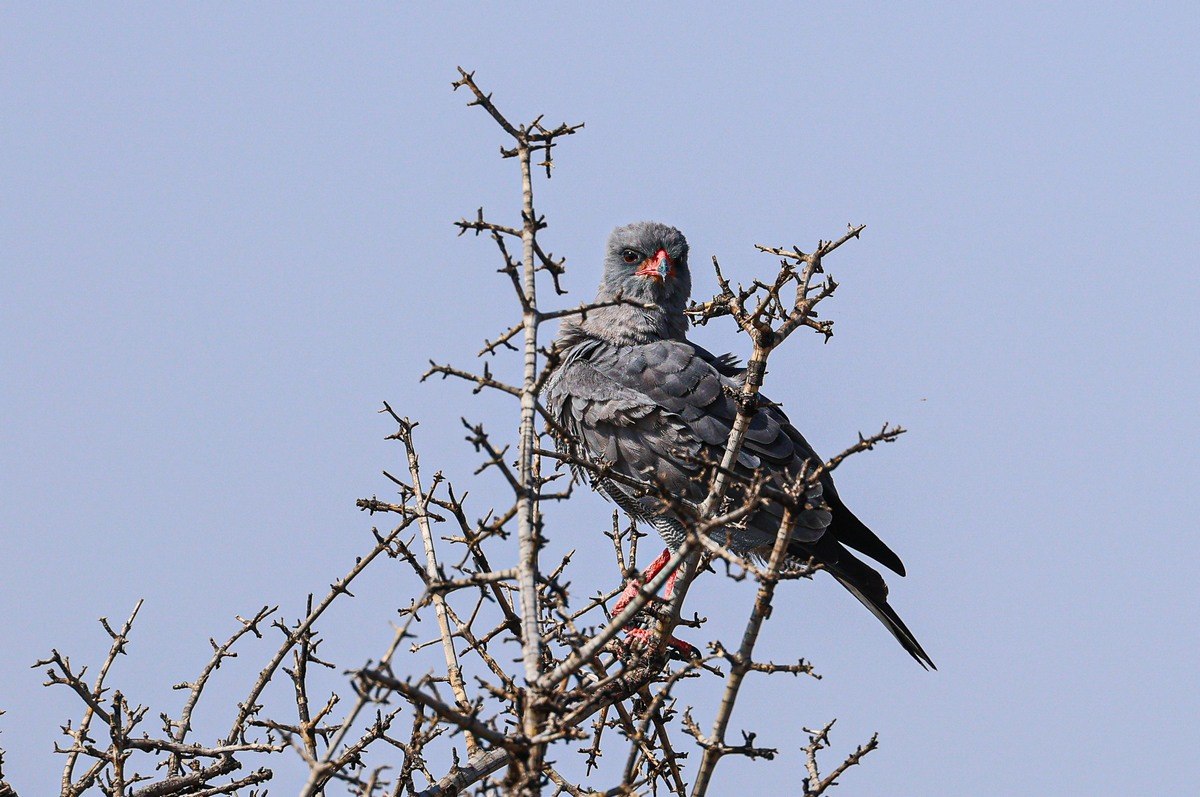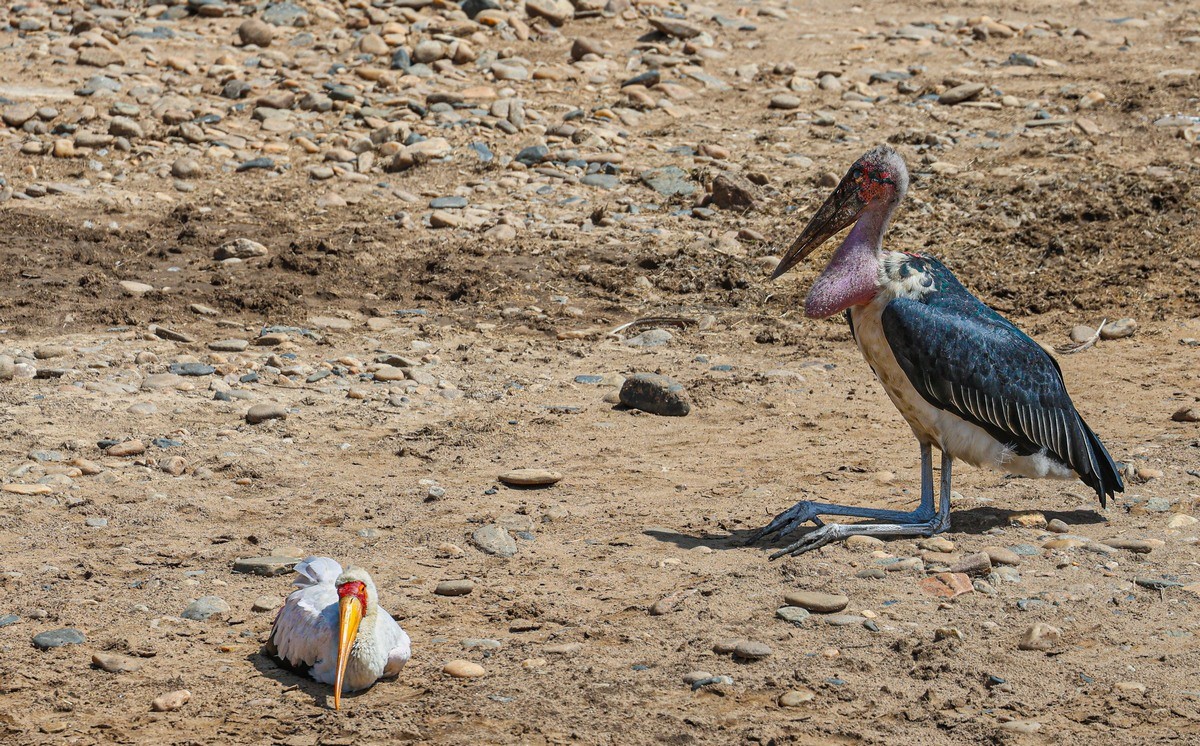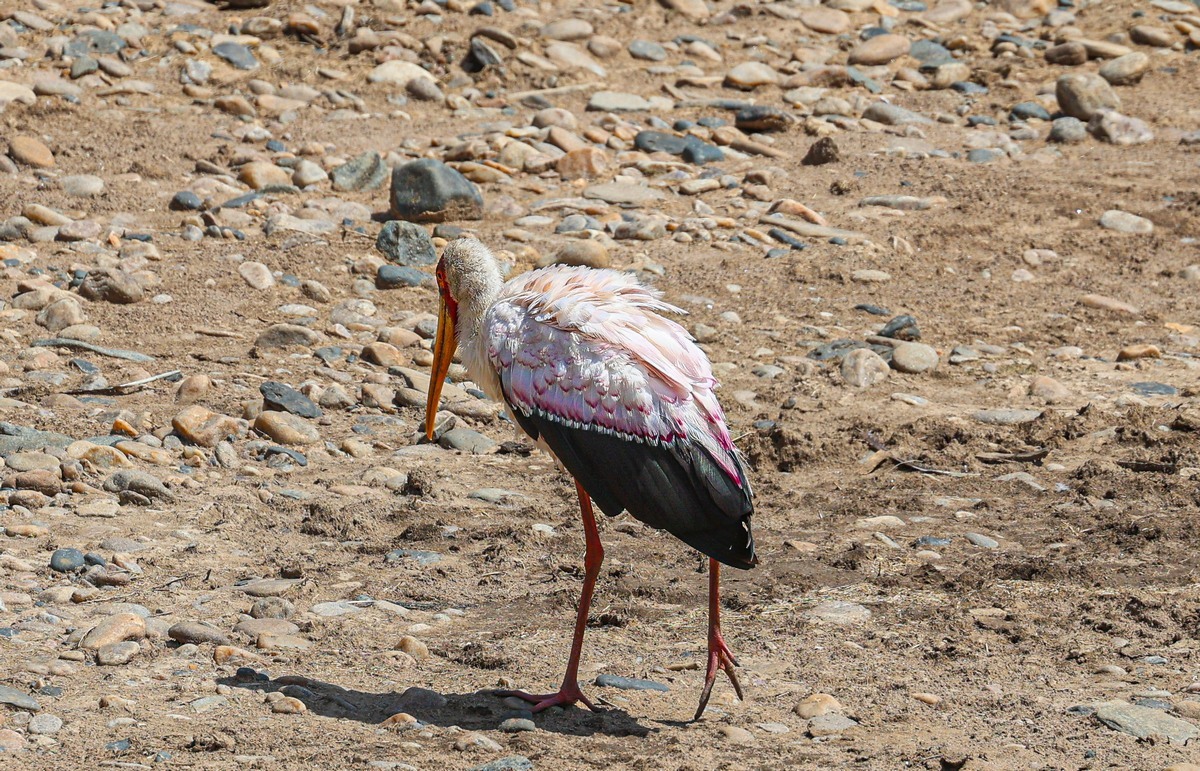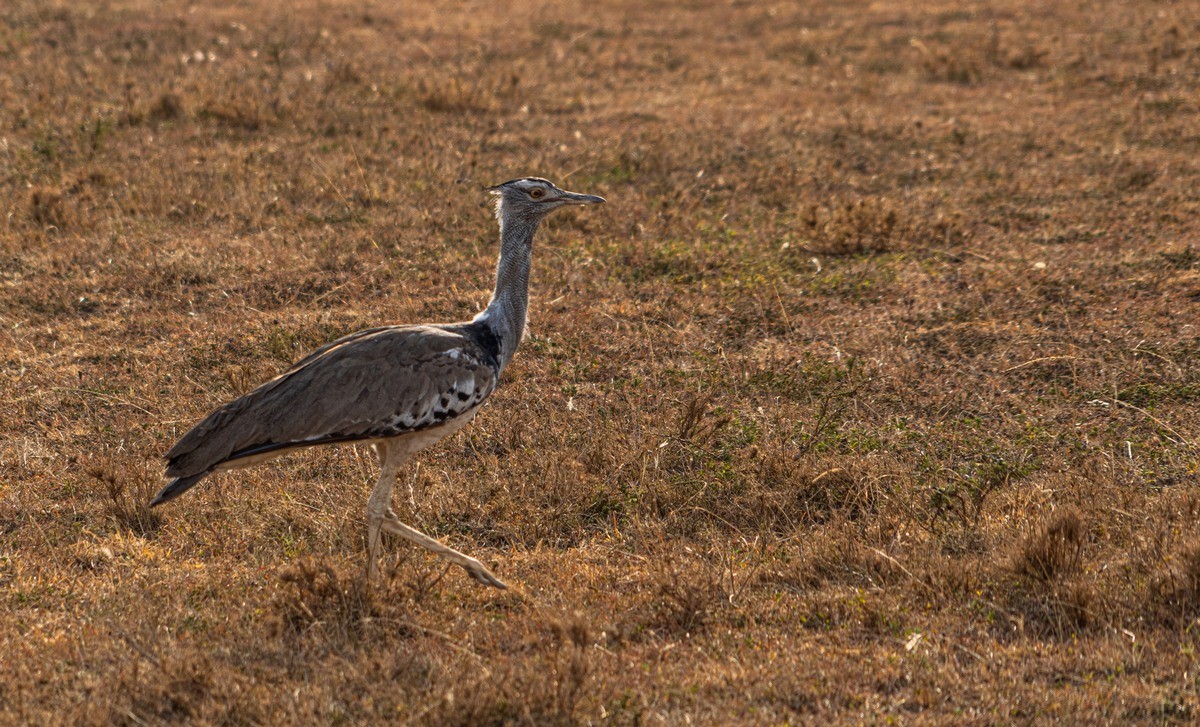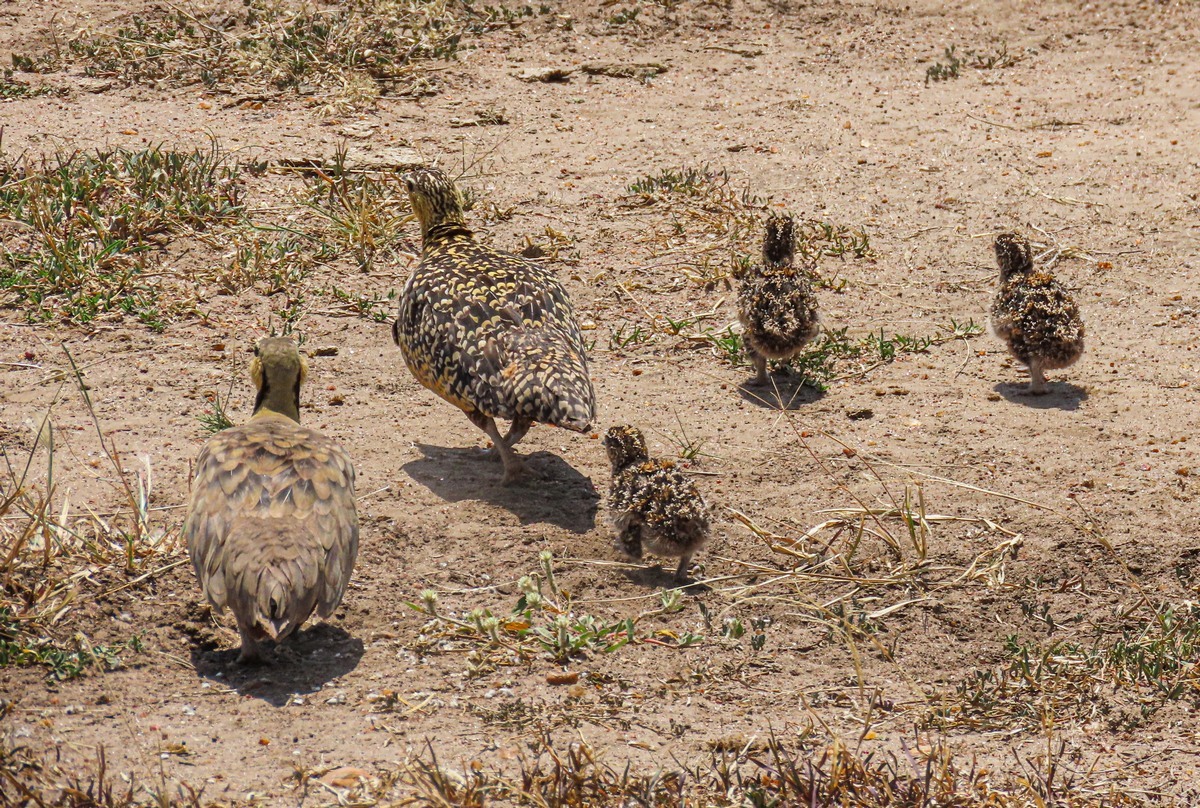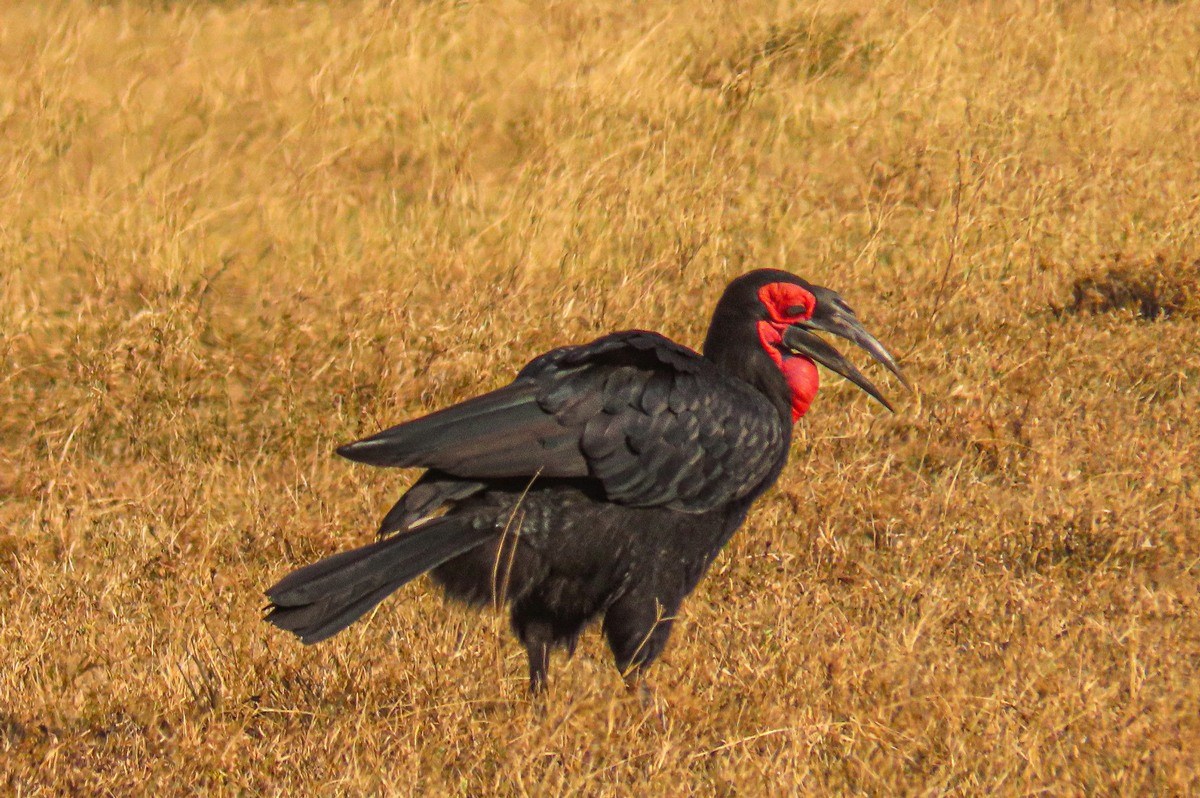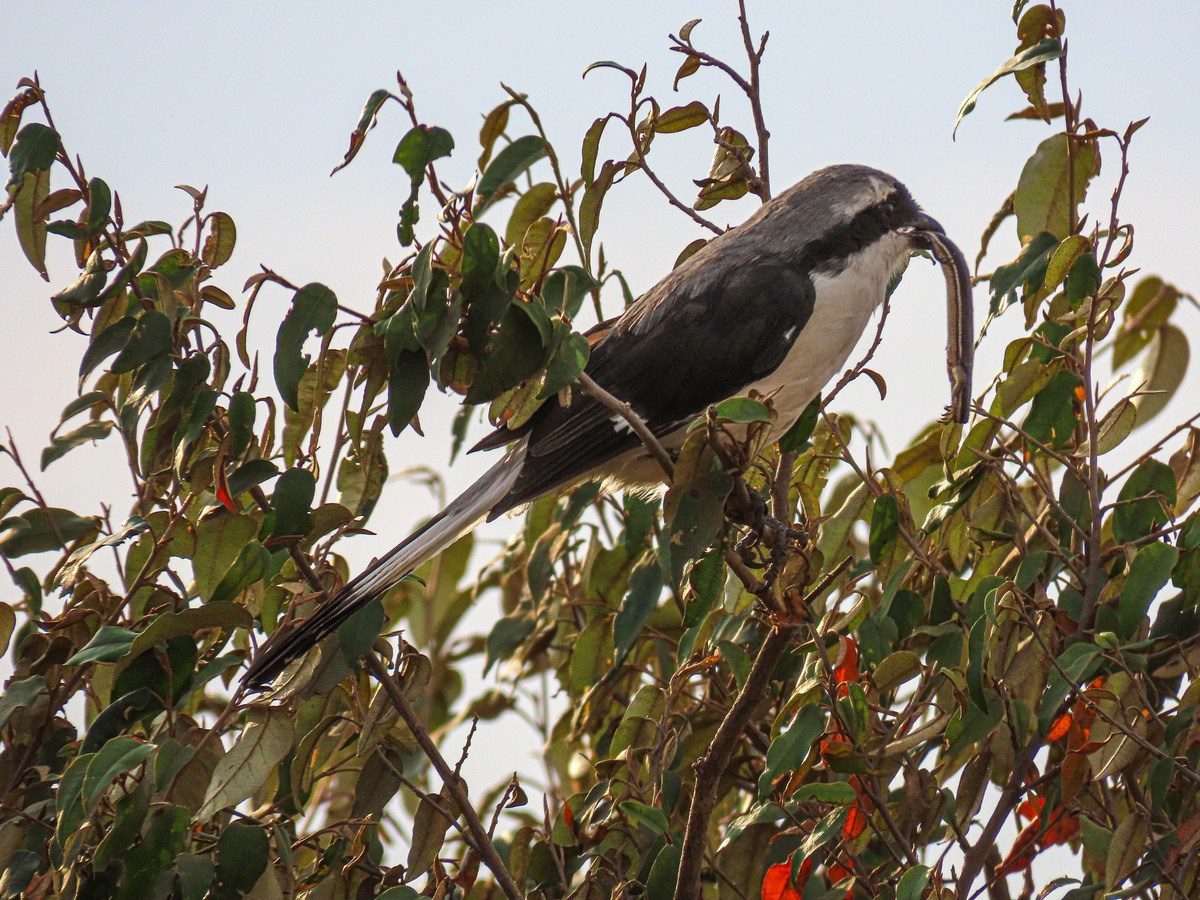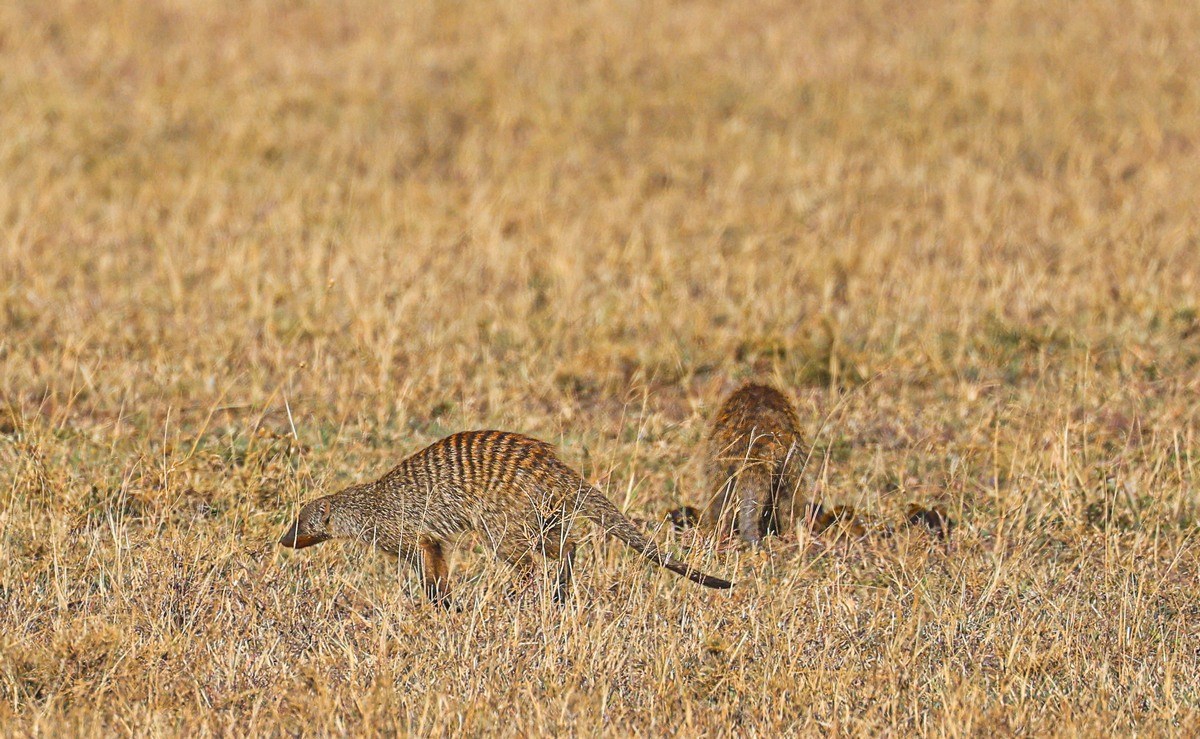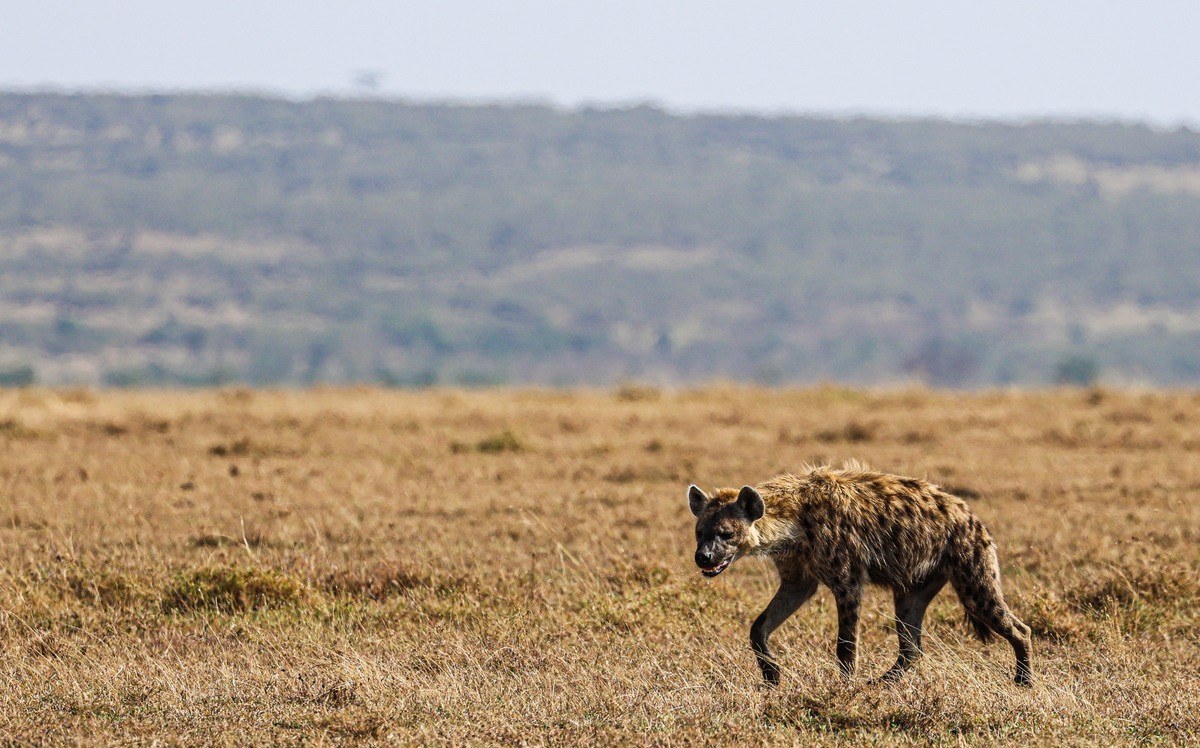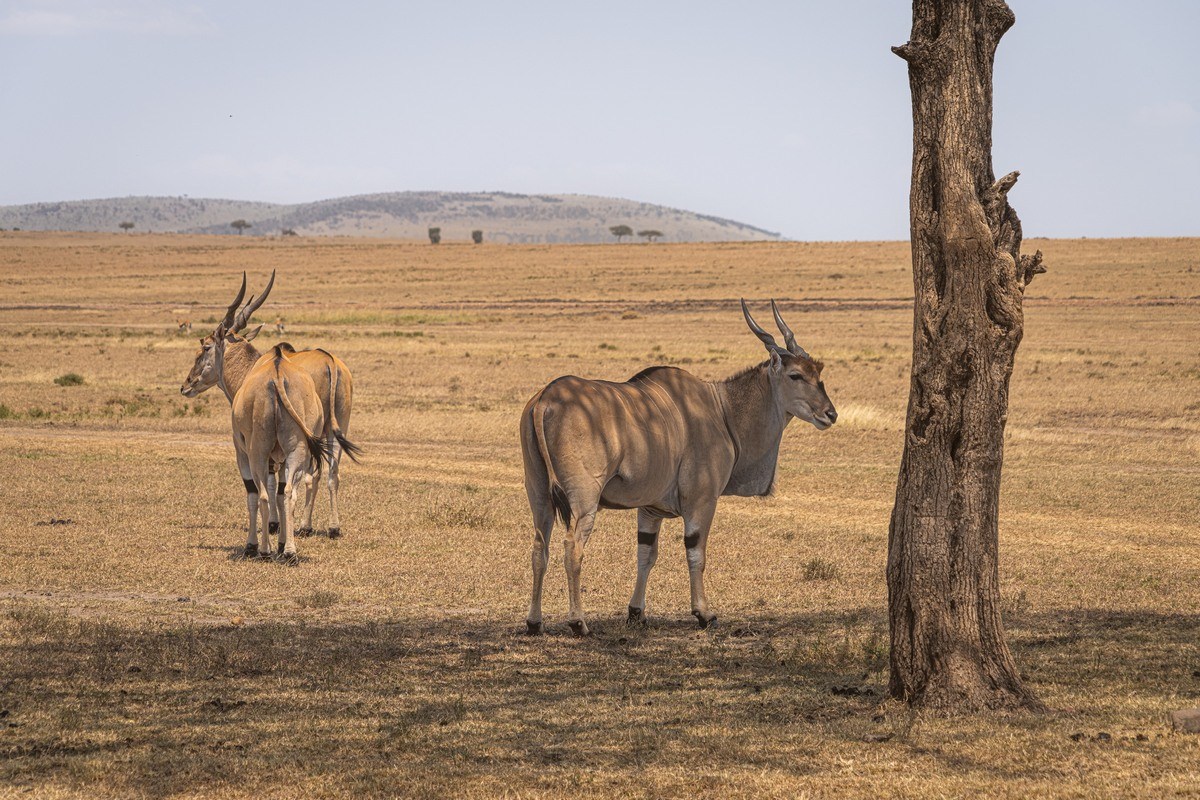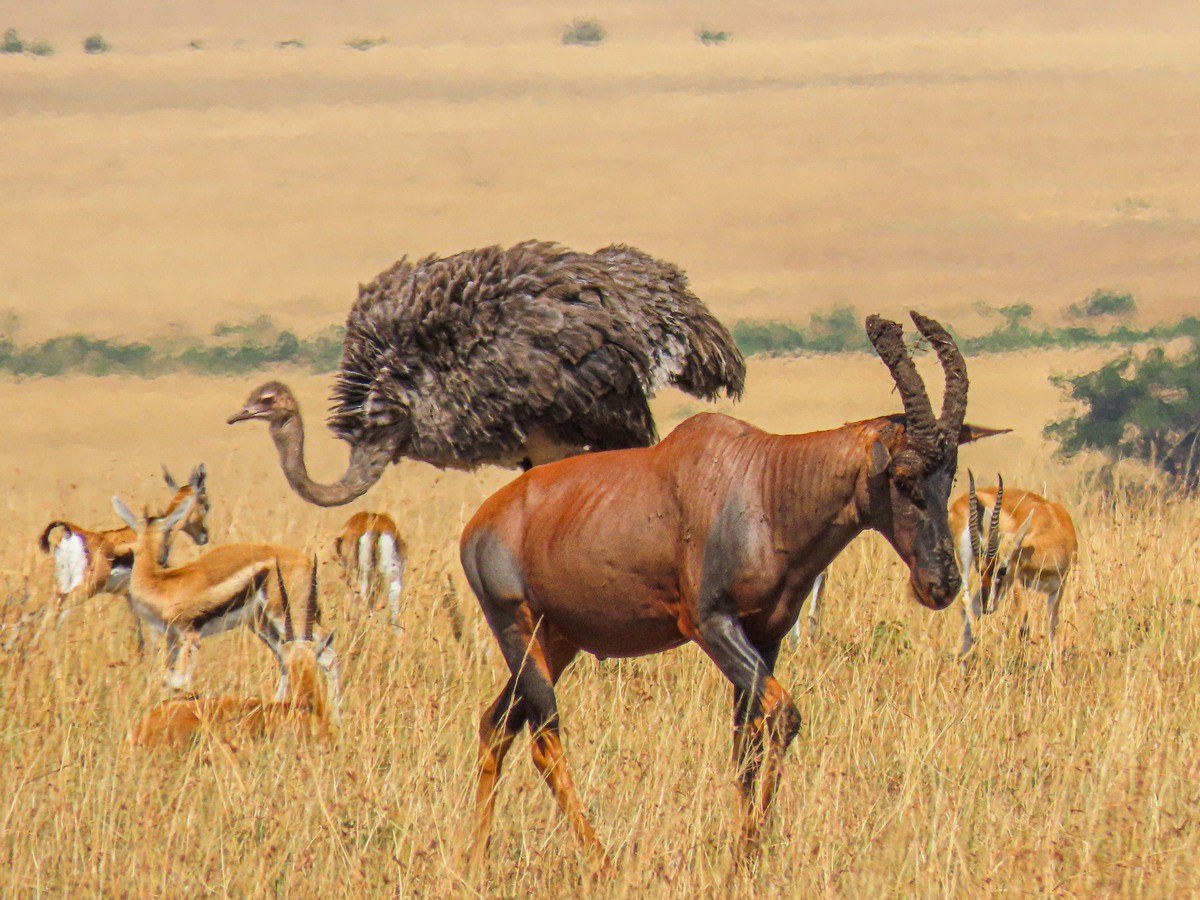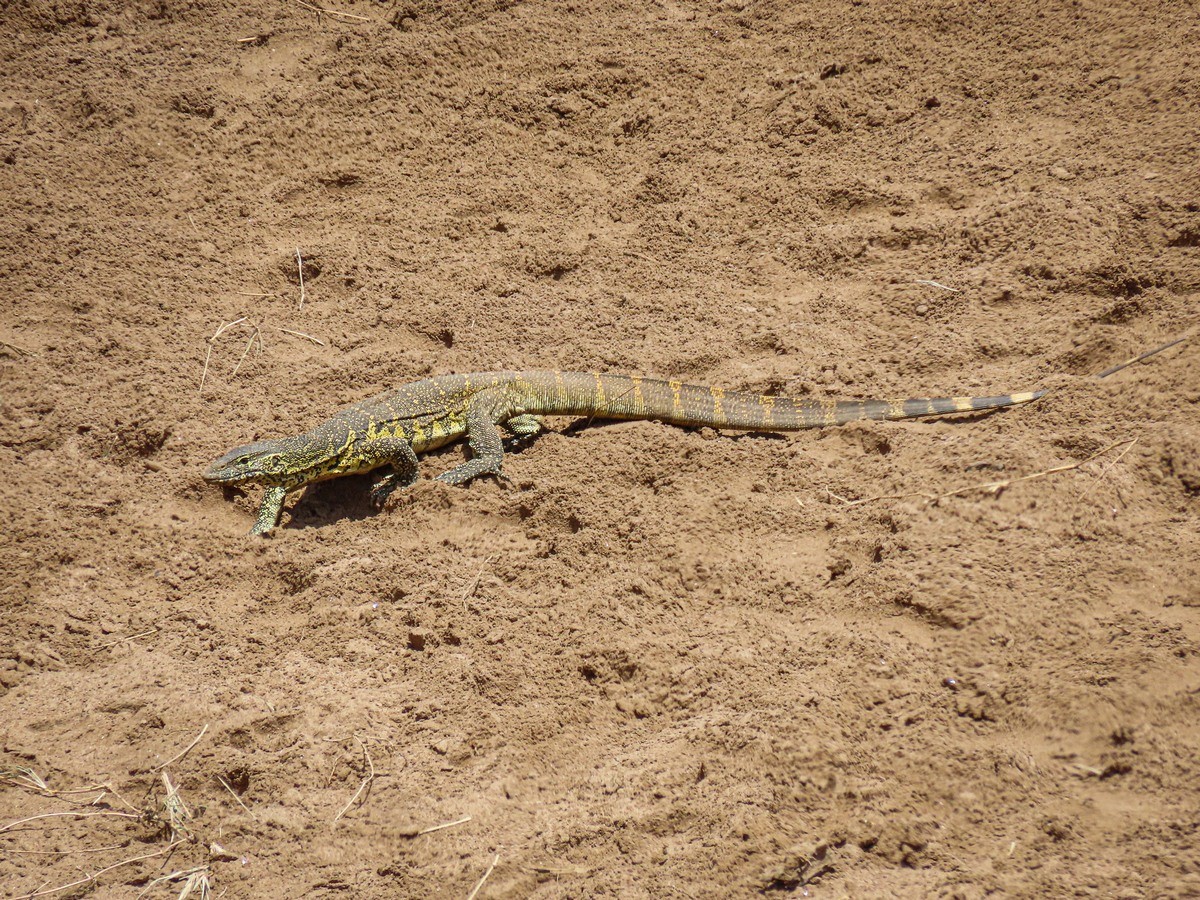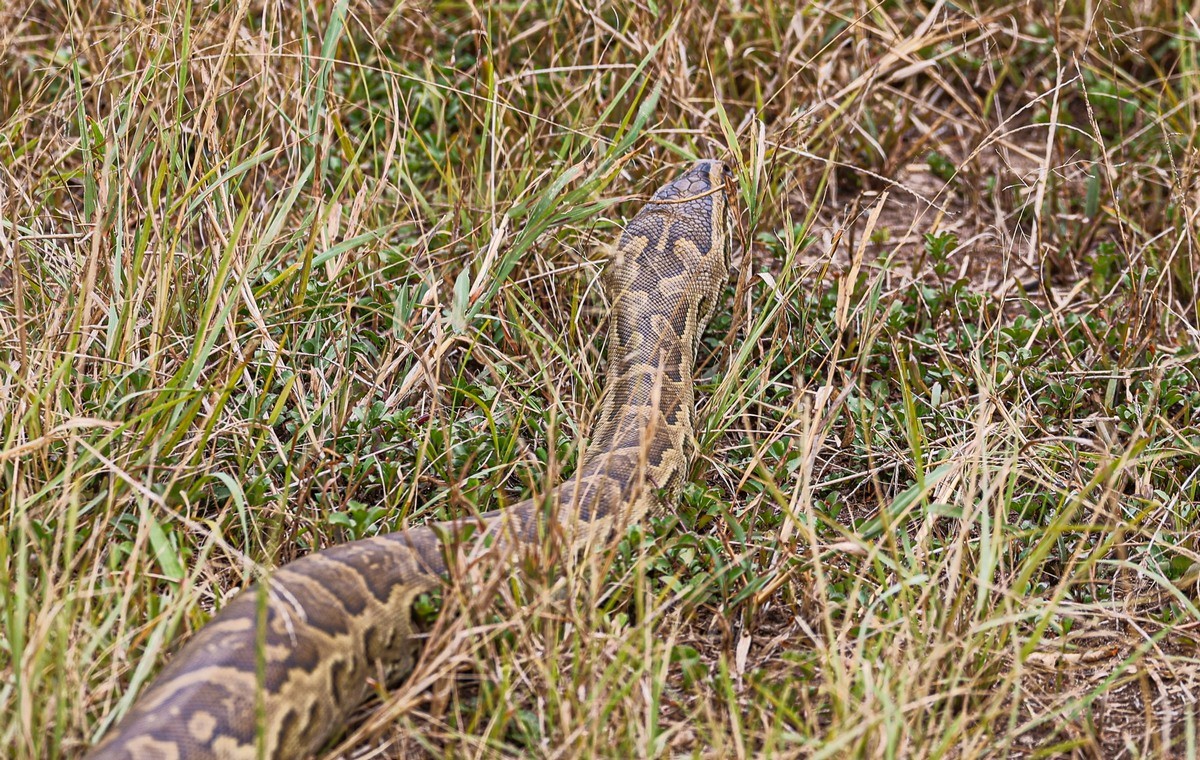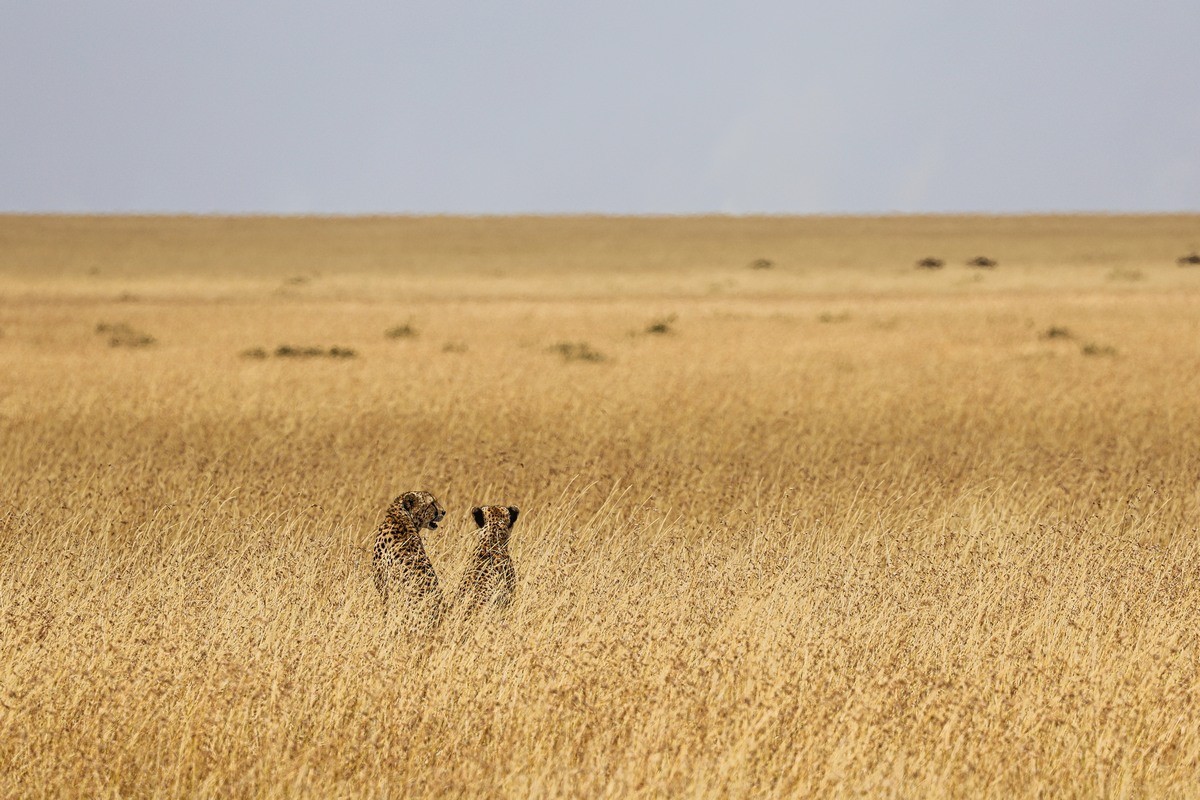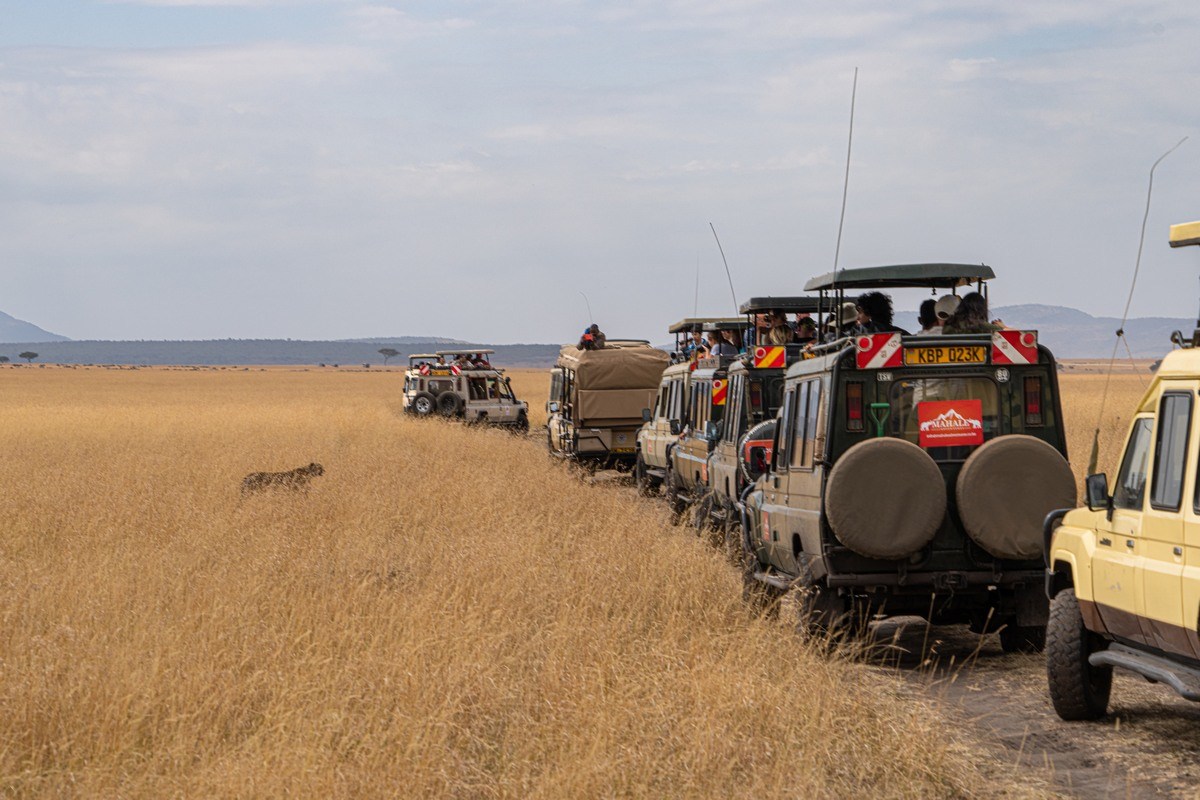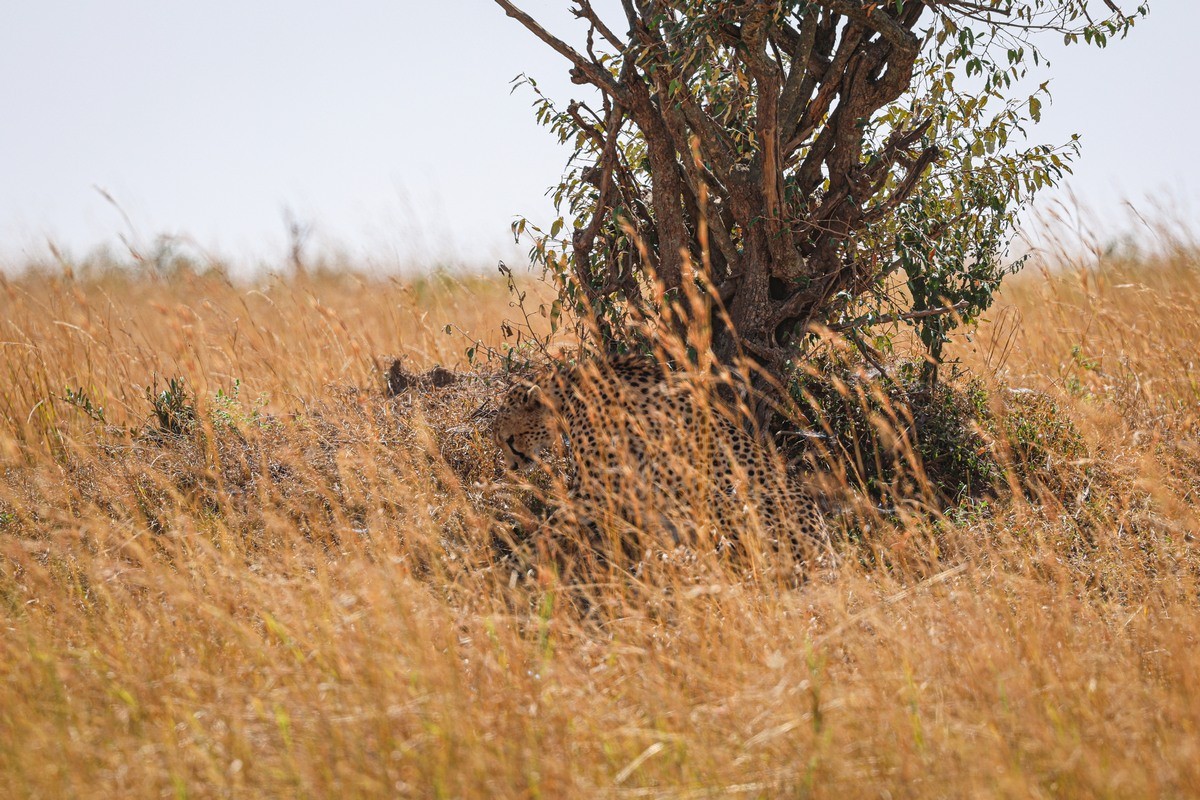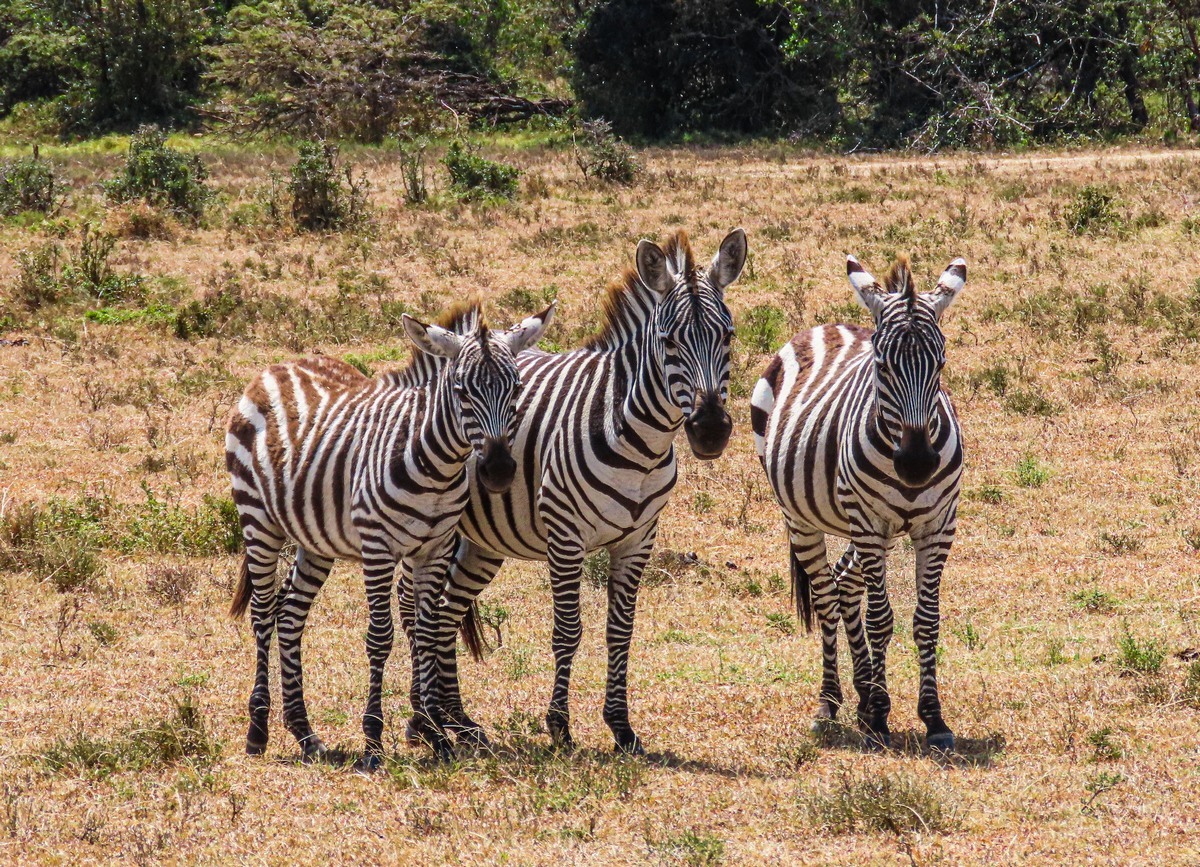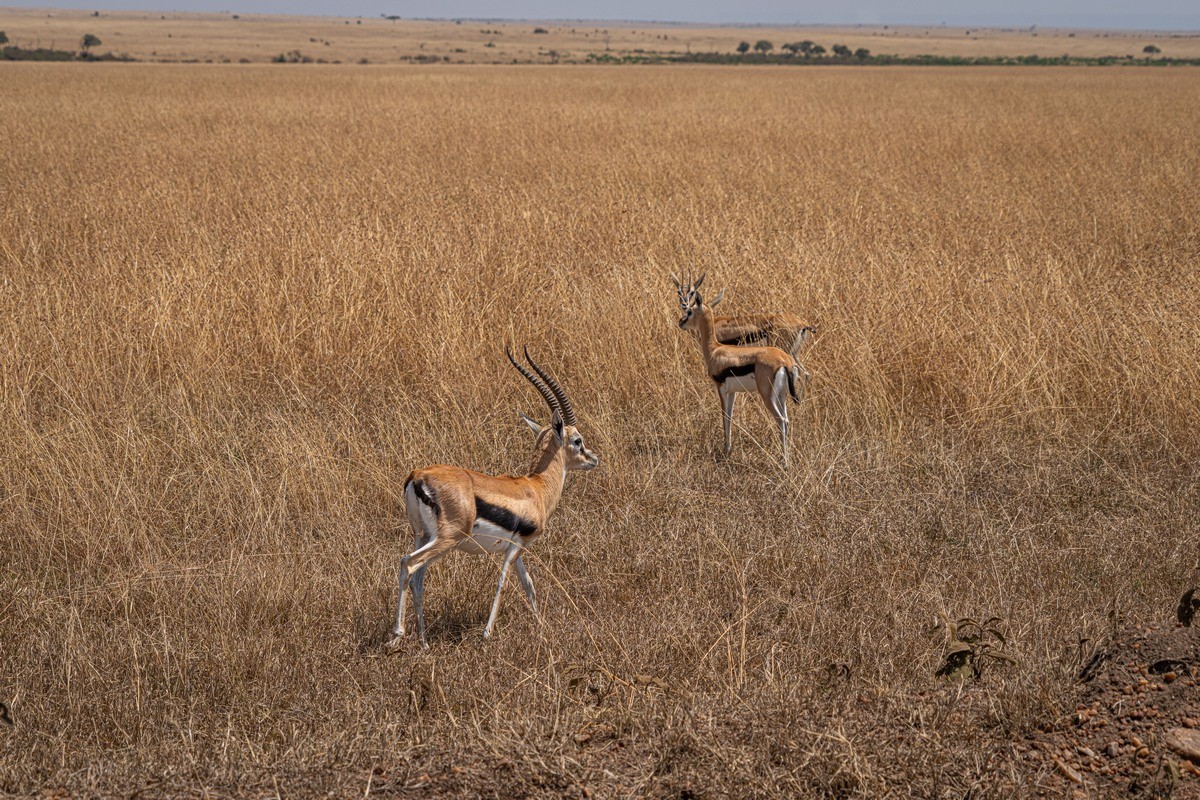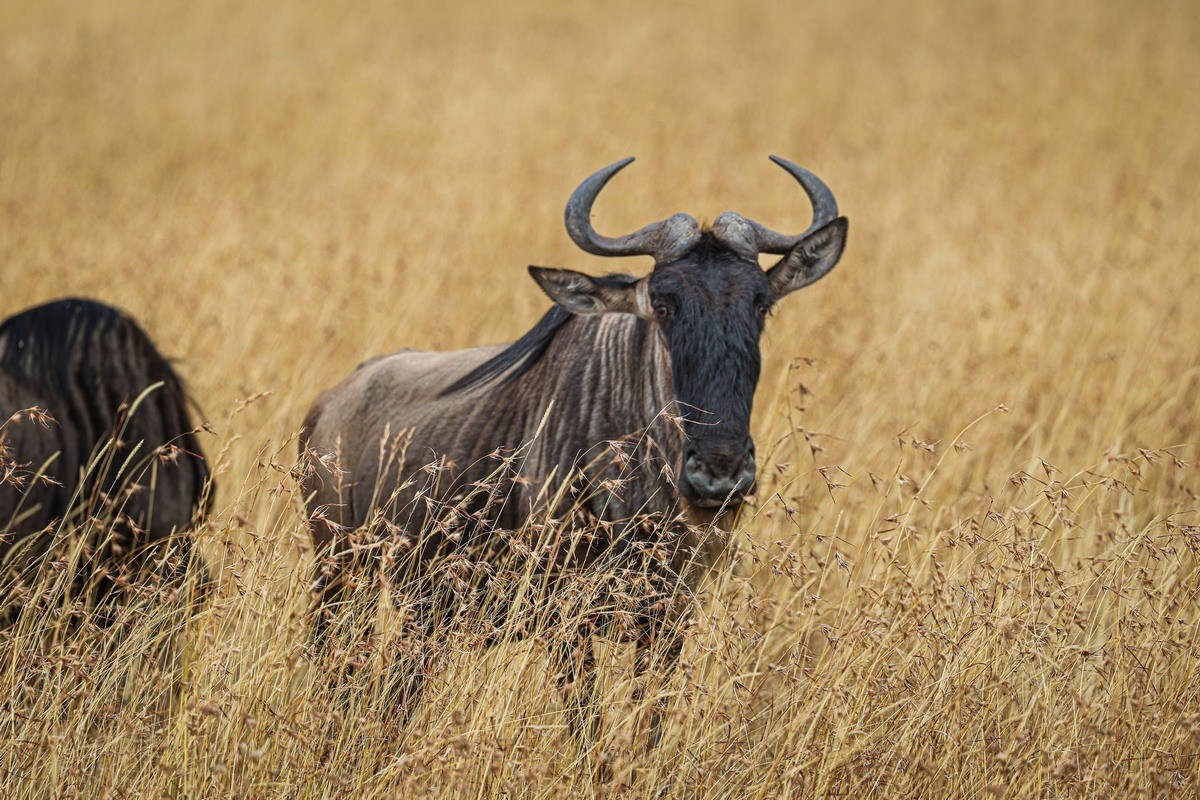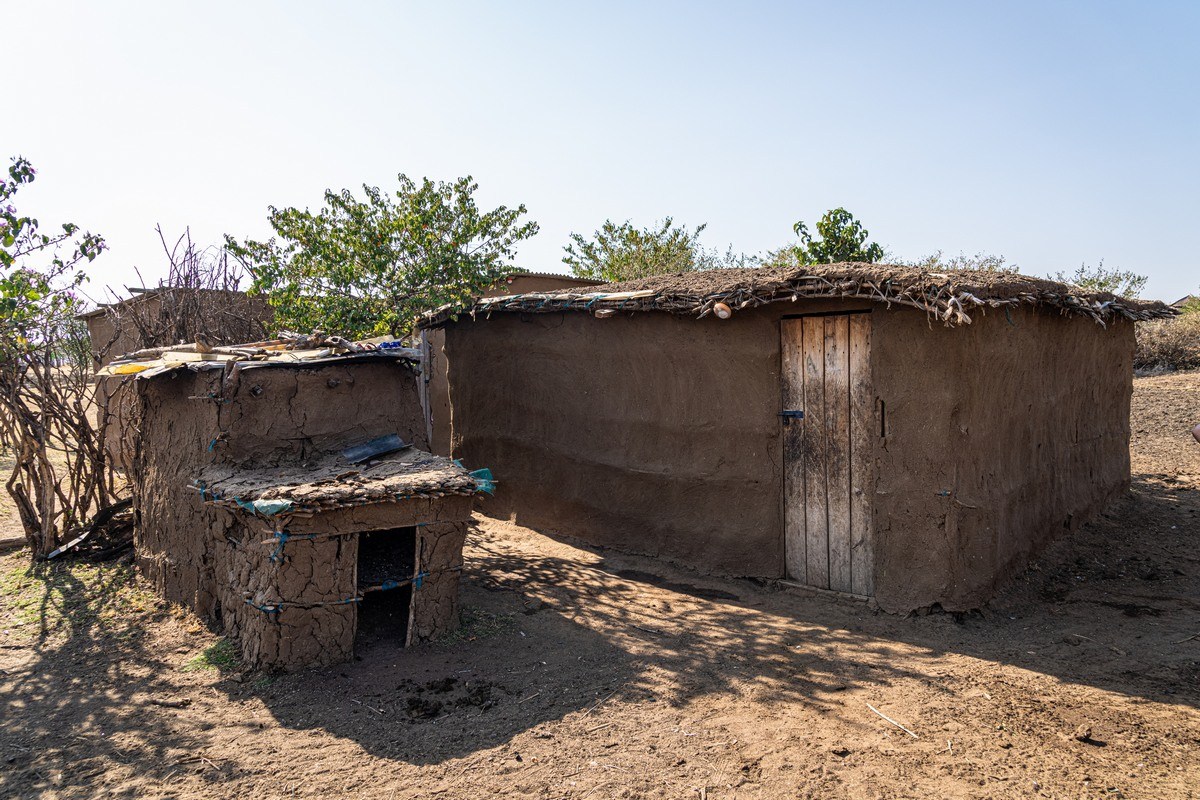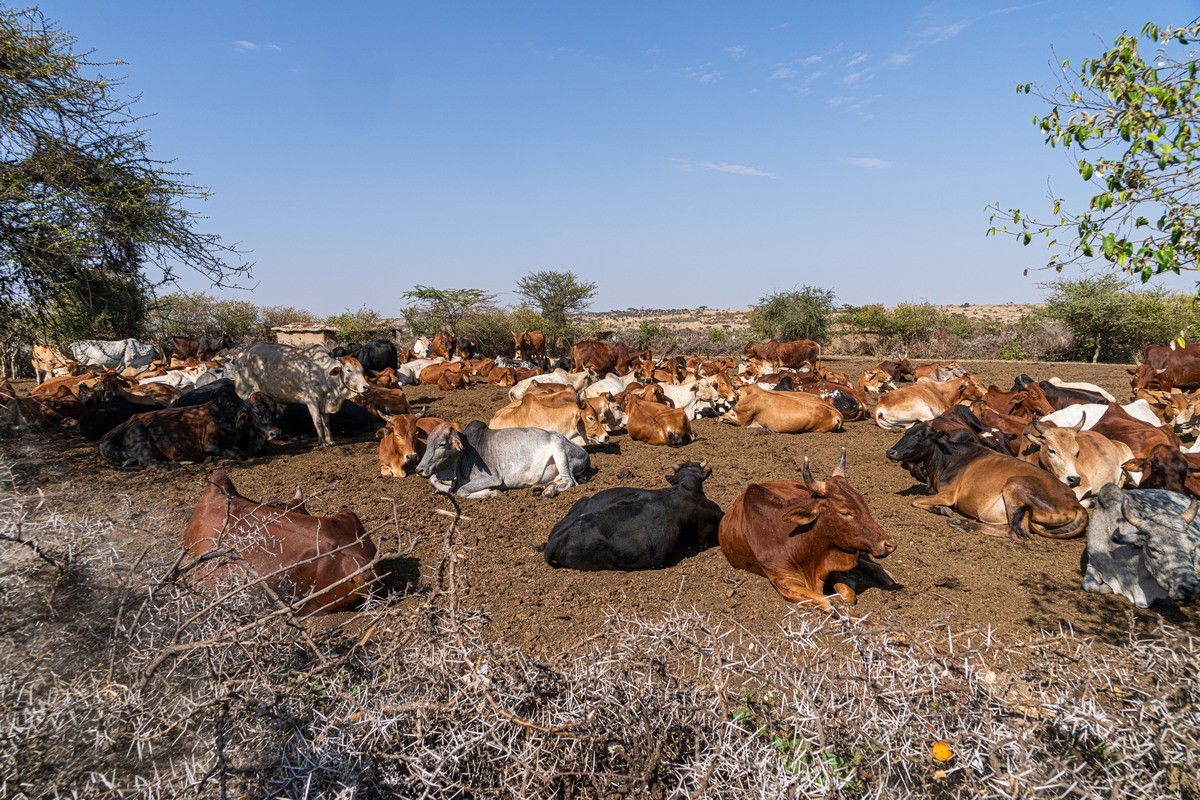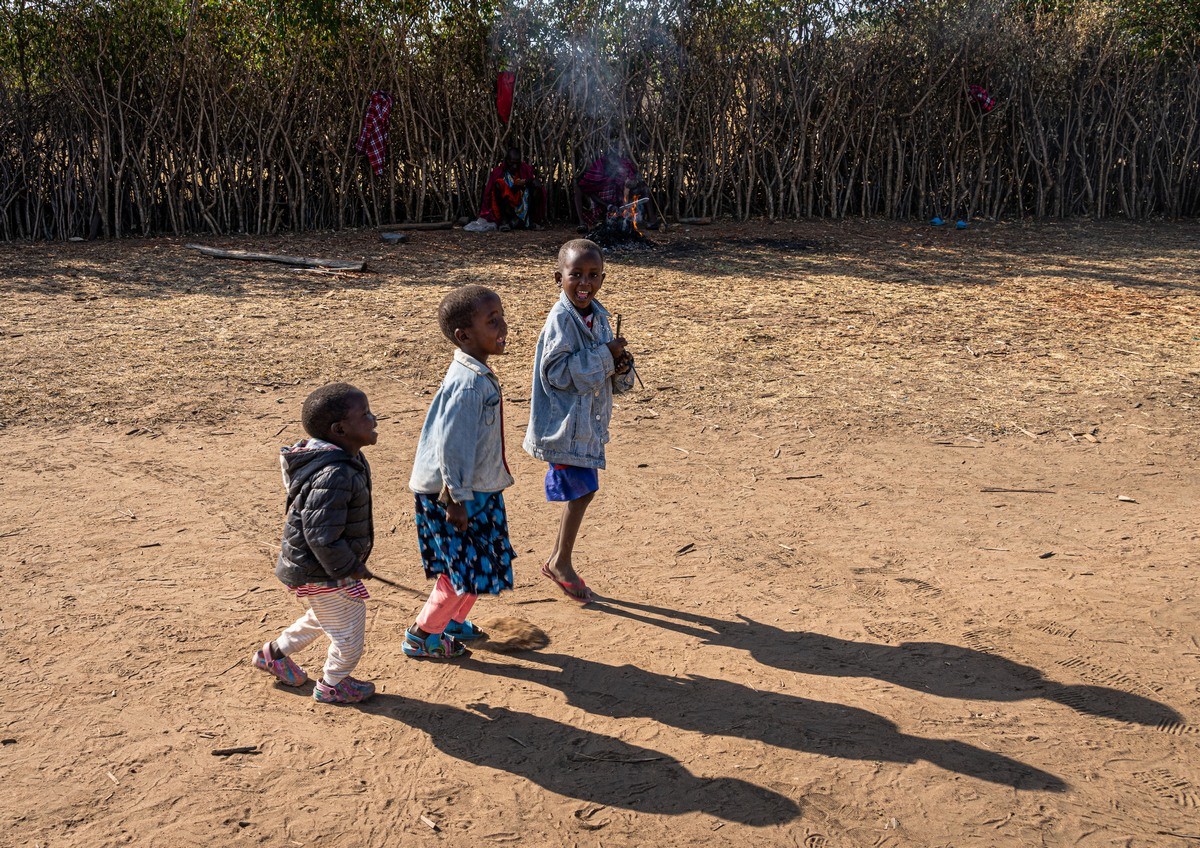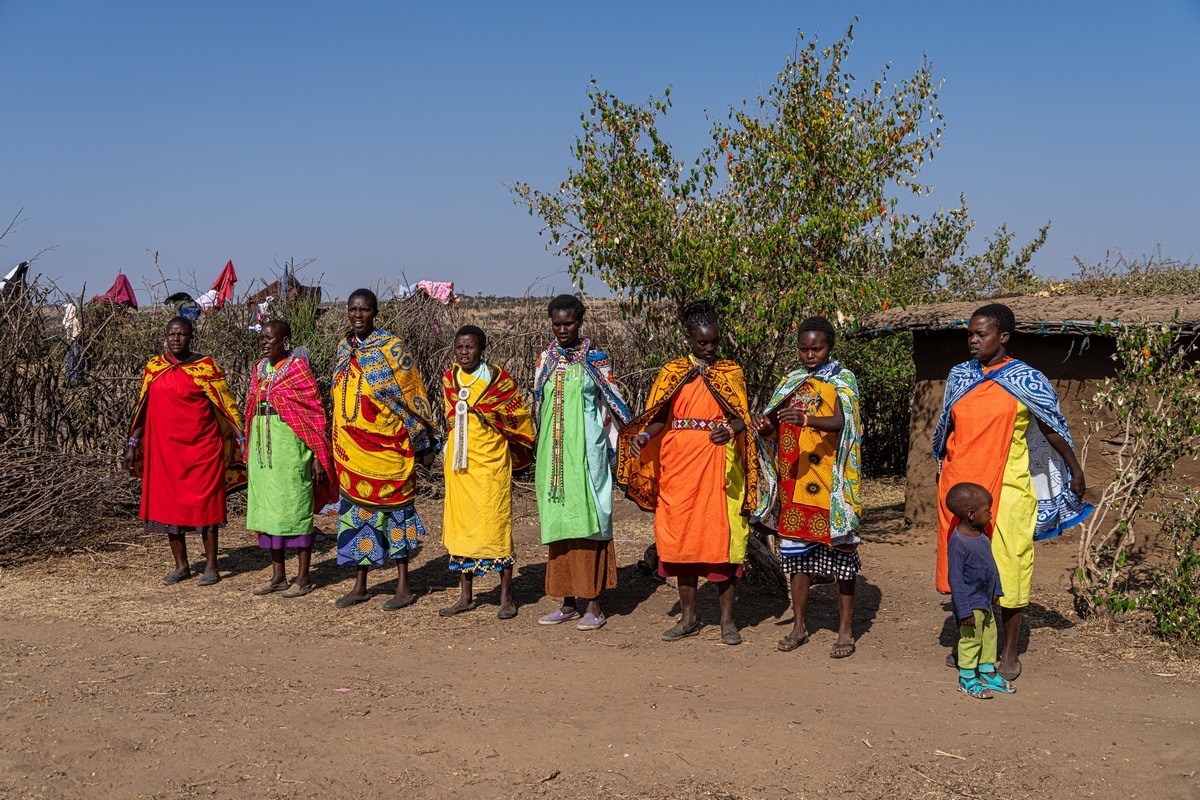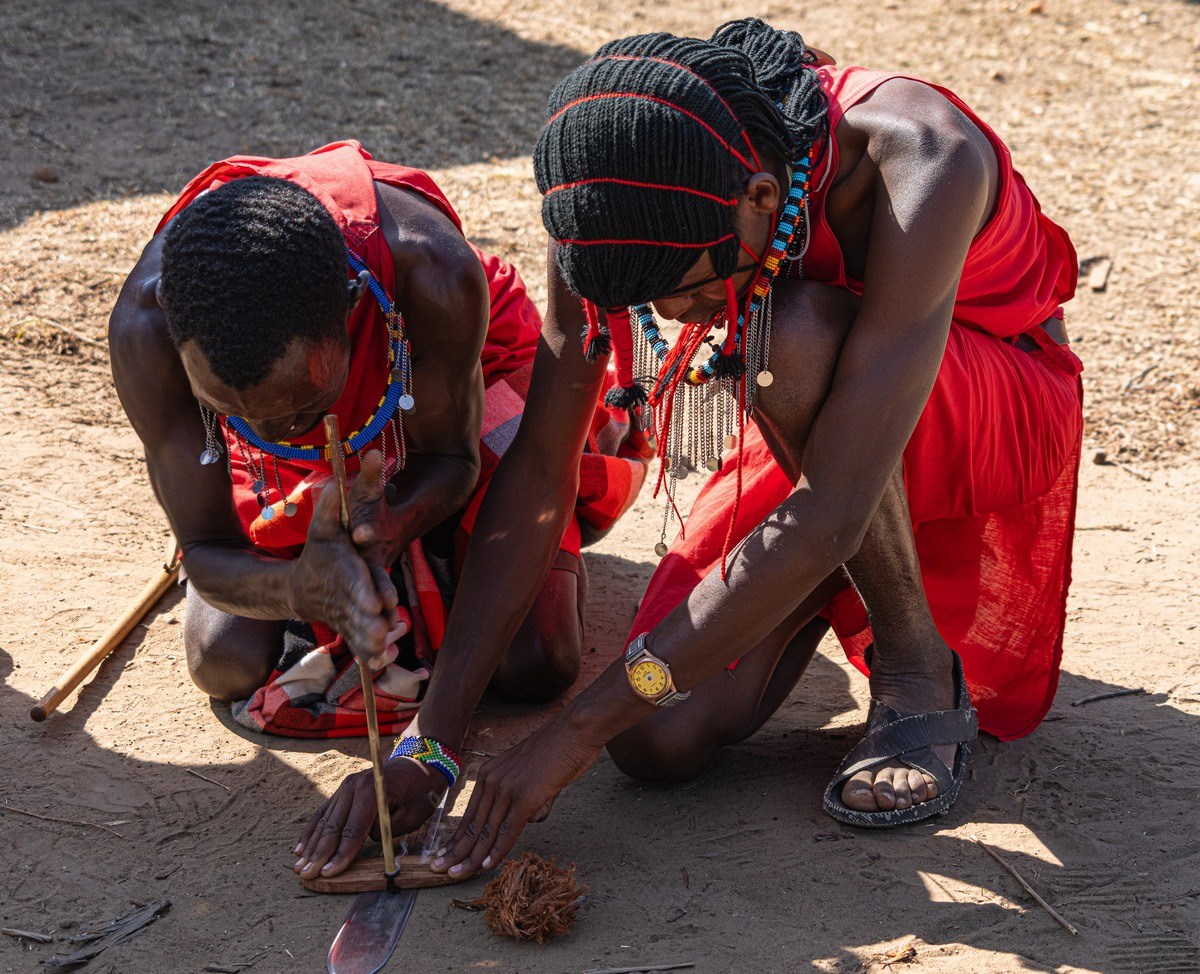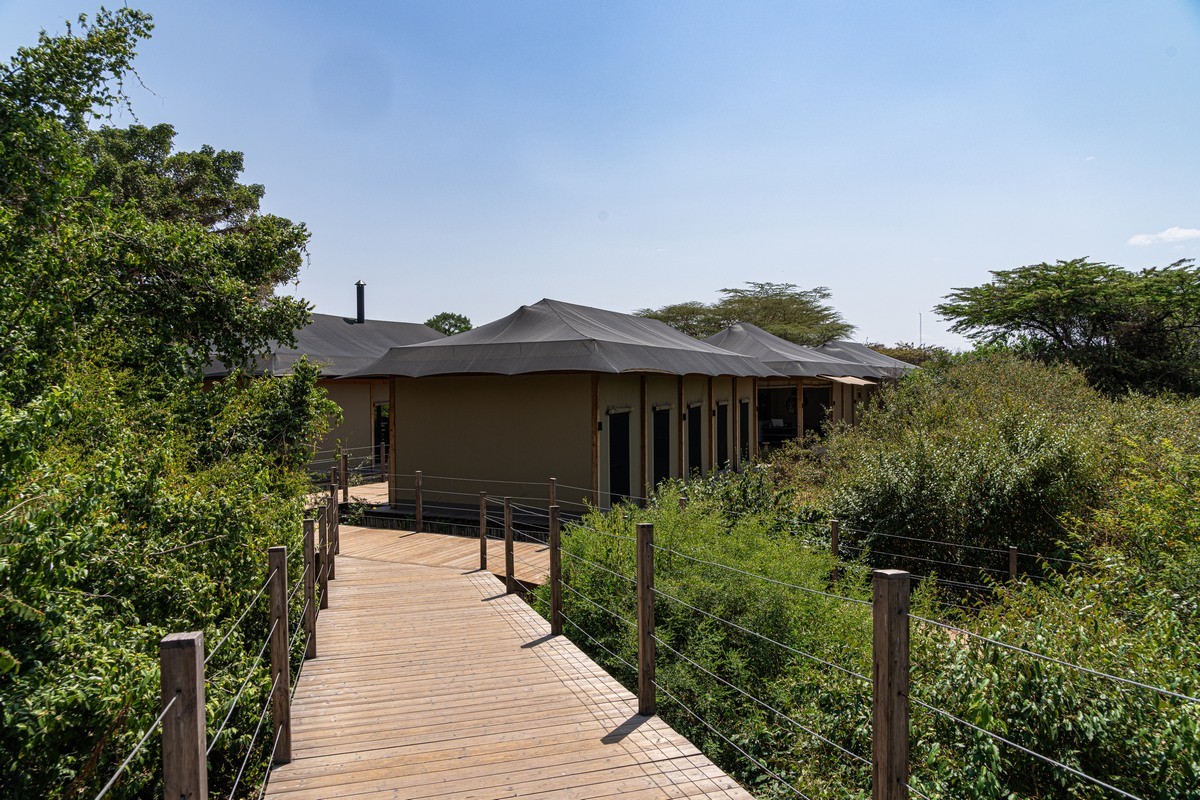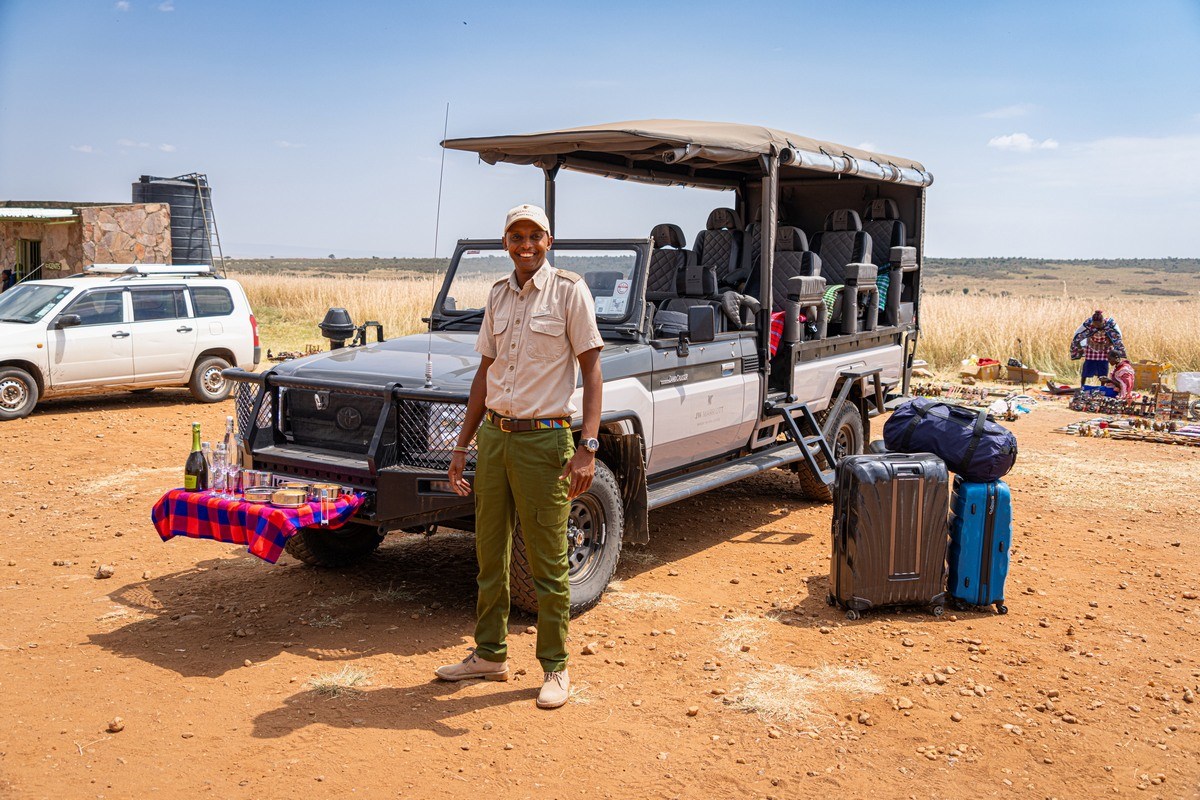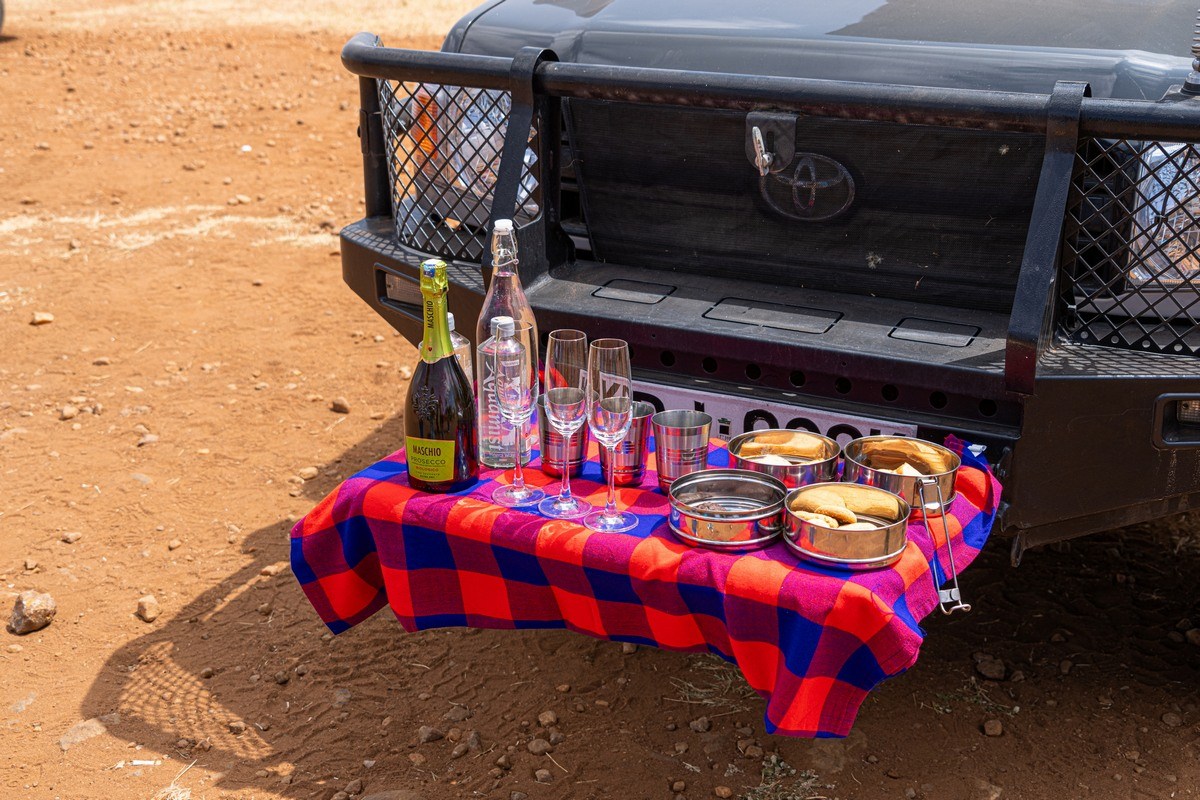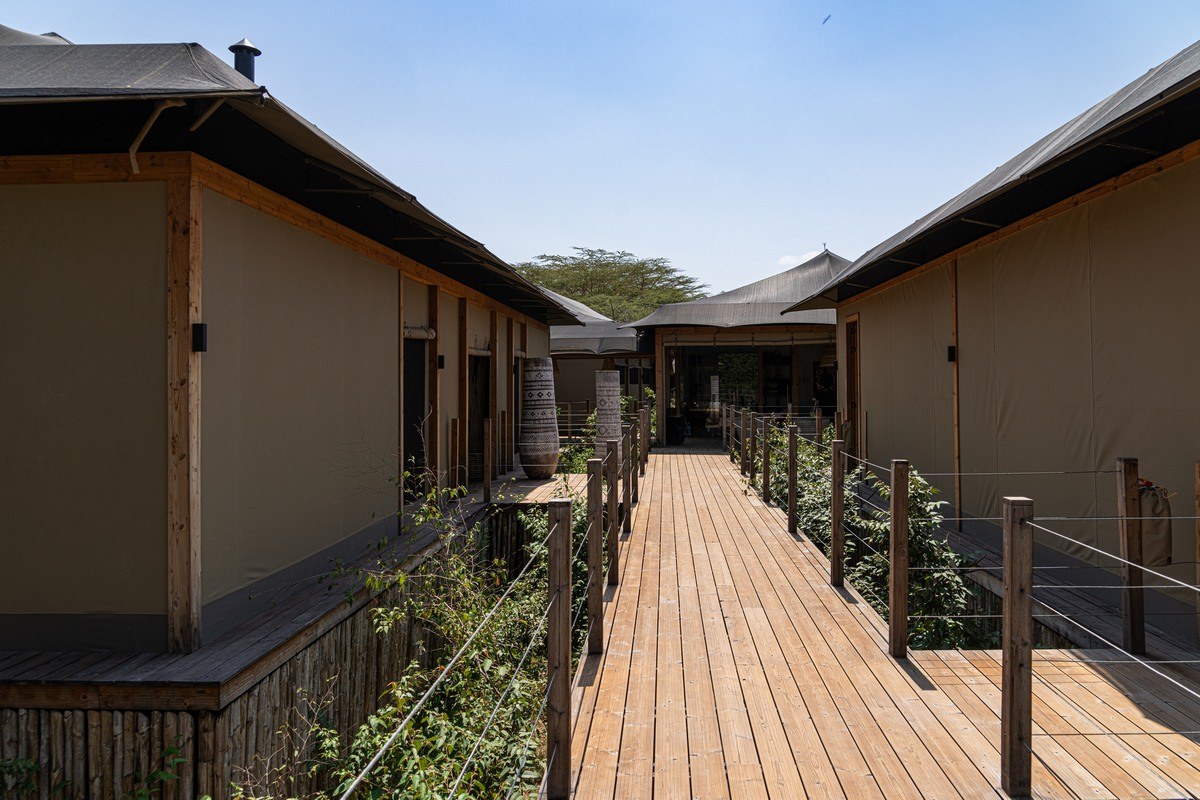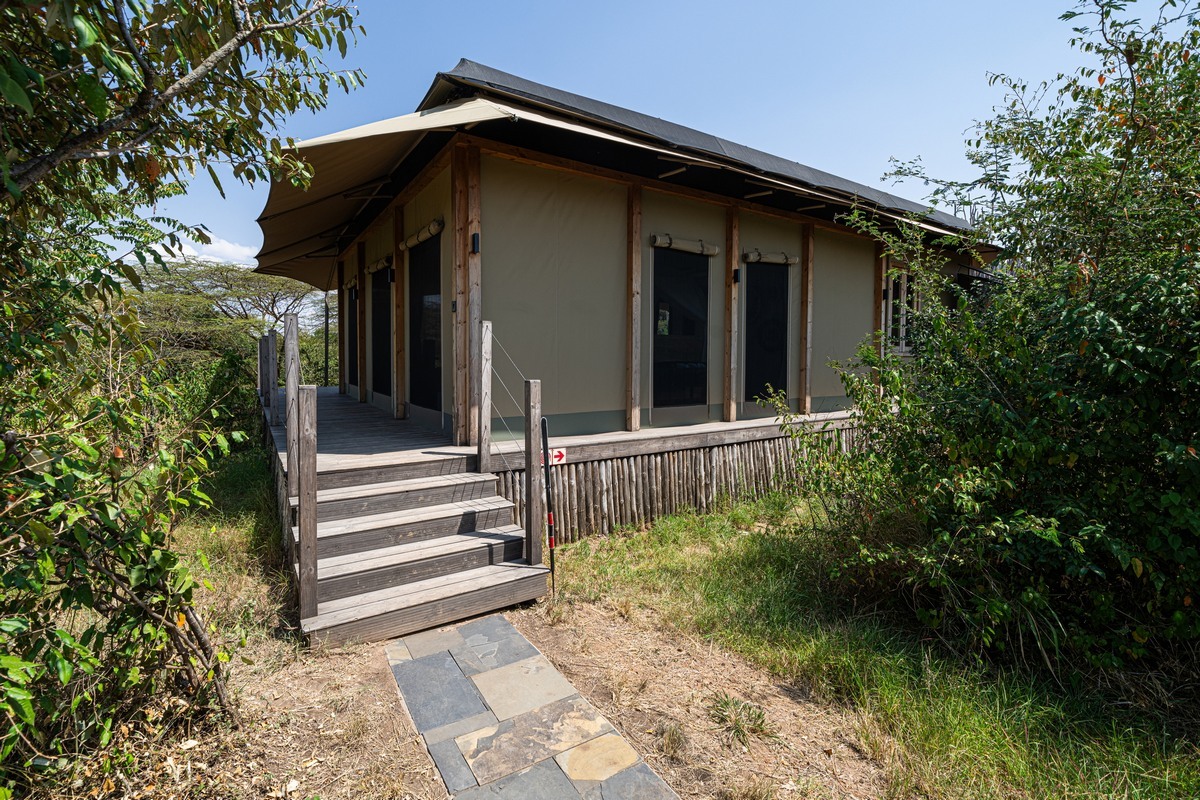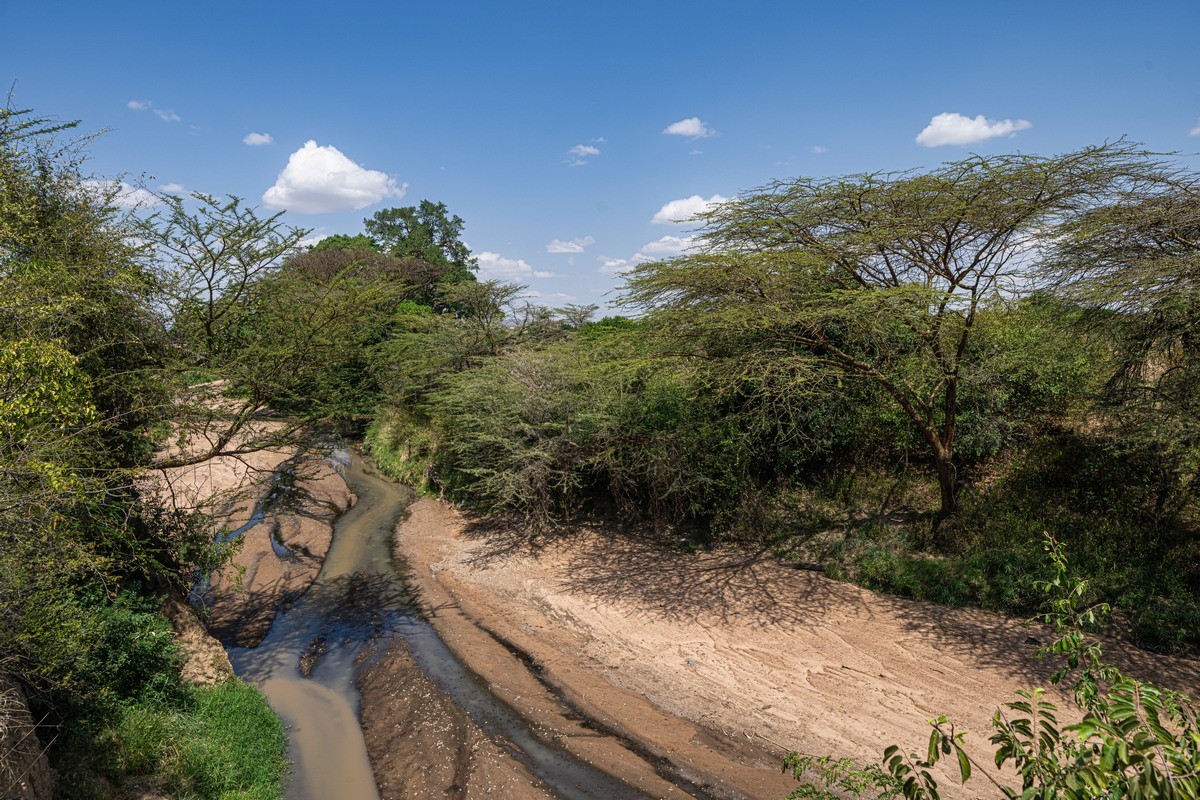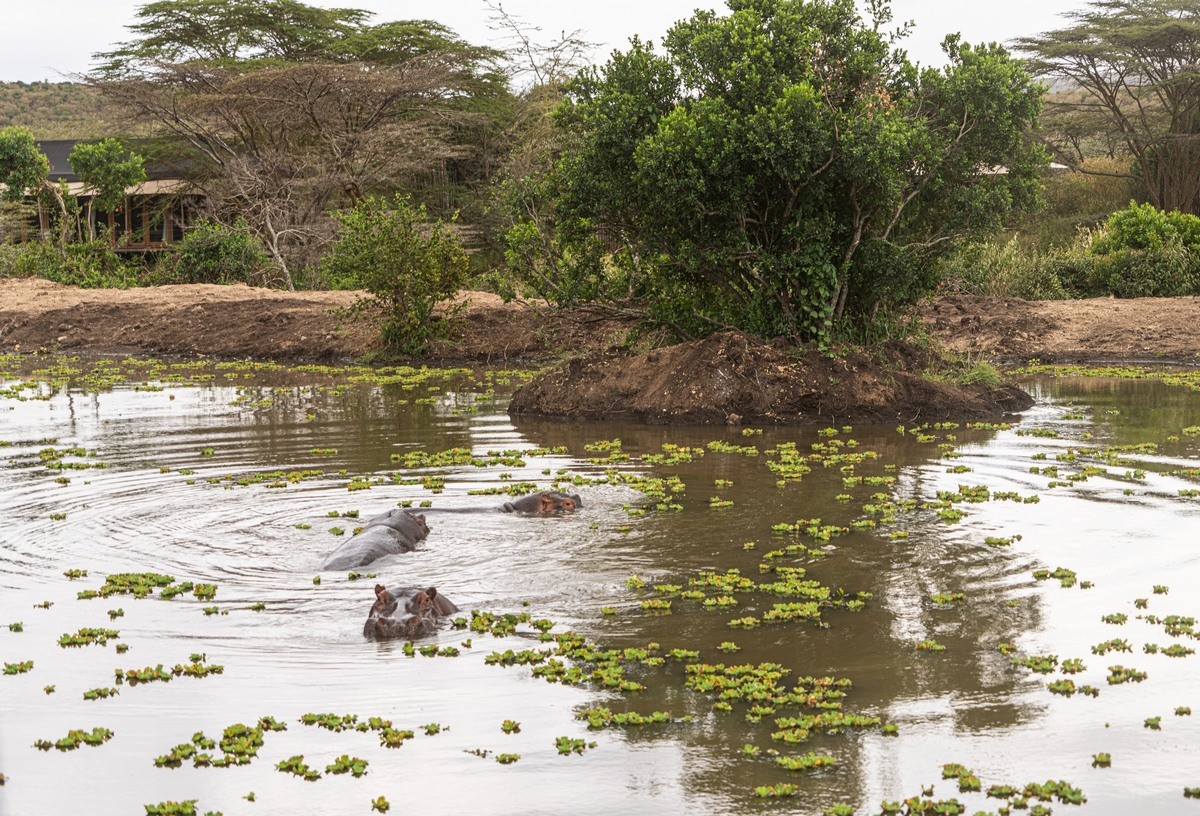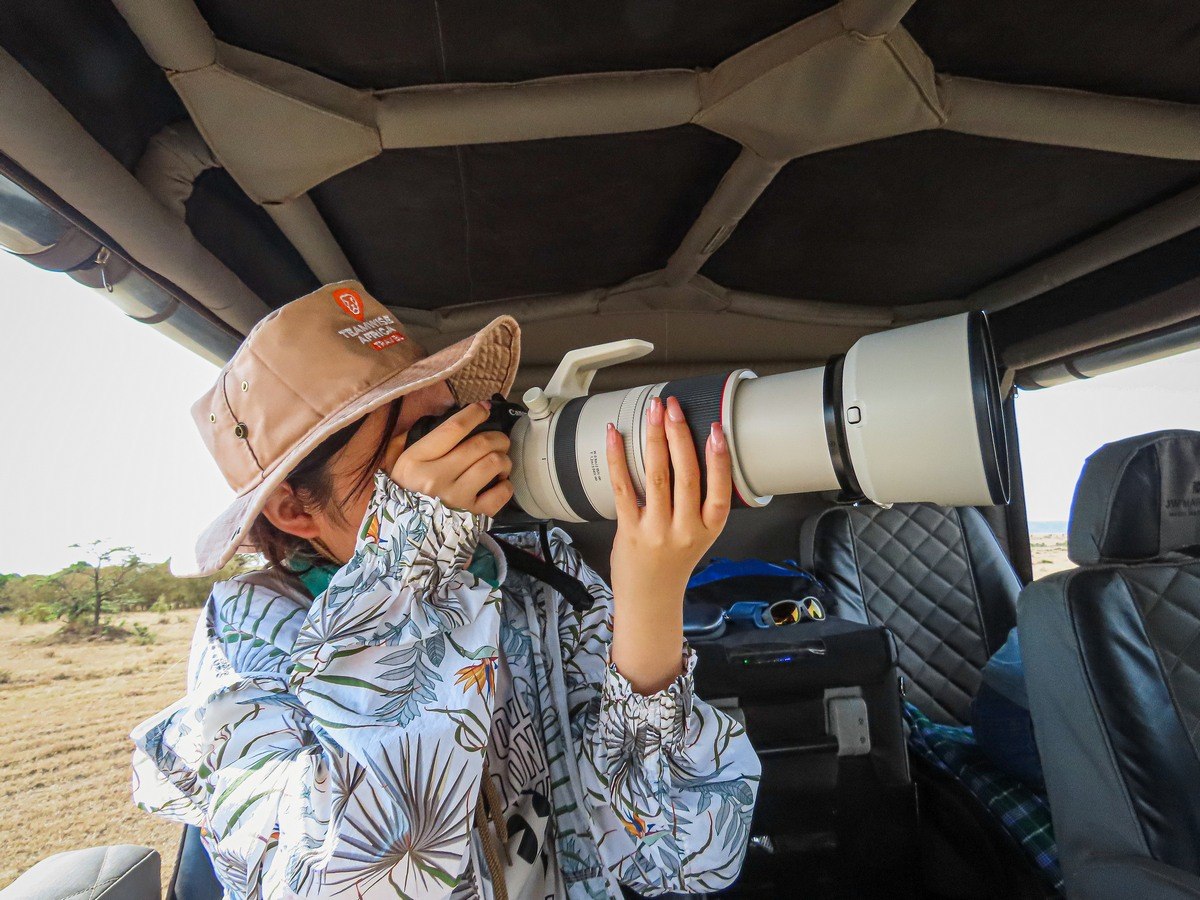September 15, 2023
The Maasai Mara National Reserve. It gets scary; can you hold you nerve?!
The main course on our Kenyan safari was Maasai Mara, the country’s vast game reserve, which we caught at just the right time: during the wild animals’ mass migration. Huge herds of wildebeest, zebras and assorted other, smaller hooved beasts. But the main attraction is the wildebeest, and their particular migration is known as the great migration – up from Serengeti in neighboring Tanzania ->
A zillion zebras too:
…And gazelles and the like. Why do they migrate? Simply because they eat up all the grass in the savanna and need fresher pastures…
They want fresh green grass – not this yellow dried-up stuff! So northward they head!…
Hundreds of kilometers they go, in huge herds, crossing treacherous rivers and scaling their steep banks ->
I wrote there that the rivers are treacherous. I think a river in and of itself to an animal (trying to cross one) that can’t swim would be treacherous enough, but then there are the things that lurk in the murk of the rivers; like the thing you can just make out toward the bottom left corner in the following pic ->
Yes indeed. You’ve probably seen what goes on in rivers like this on nature programs on TV, but when you see the spectacle for real it’s a whole other level of disturbing emotions and jaw-dropping impressions. And so, introducing (in this Kenyan safari series!)… hungry crocodiles! ->
Far off: “What interesting creatures!”…
A little nearer: “Wait – he’s heading right for us! Jeeeez, look at the size of him? Though we’re in a jeep, my pulse is racing!” ->
… He (or she, of course; I’m no expert:) makes it to the sandy shore of the river, and seems to proceed to… take a nap! Or is it all pretend? Probably (and is that a smile on his chops as if to confirm that?!)… ->
When the animals wishing to cross the river get up to the edge of the high riverbank and peer down and see the crocs, naturally their enthusiasm for their planned crossing suddenly wanes abruptly. And there are also hippos in the river, which are also extremely unfriendly creatures – and they can block the shallow ford stretches more than the crocs do. In short – the poor migrating animals are between a rock and a hard place; rather – a croc and hard hippos!…
“But – hippos are vegetarian, silly,” some of the more knowledgeable among you, dear readers, might utter. Yes, they are vegetarian (smarty-pants), but it’s not that the hippos want you for dinner; no – they just get mad as heck when you invade their territory, and there’s no telling how they’ll react – but it’s probably violently, and likely to be fatal to a human or at least some of a herd of traversing antlered beasts…
Here’s the herd looking down at the river, pausing to reflect on how bad their options are. Poor things:
They’re joined by yet more wildebeest; duly fortified in both number and morale, they head back on over to the precipice… and again, they pause, think, panic, and fall back again…
They head along the riverbank – first some way to the right, then to the left, looking for safer passage…
Suitable sections of river are few and far between here, but the toing and froing between them can last hours – the average for the wild animals is two to three hours, whereas the herd we were observing took a full five (5)!…
The river crossings here, it goes without saying, are a hit with the tourists. So much so that their jeeps all crowd together along the top of each riverbank to get the best view of the “show”. But, what about the poor animals? Surely the mass of vehicles will hamper the already tricky crossing attempts?…
Indeed they would, and so to prevent humans and their vehicles getting in the way, rangers come along and order all vehicles to drive back away from the river and form a neat line. Good on them ->
Only when the animals were emerging onto a bank after a crossing were the tourists’ jeeps allowed forward for a better look:
While we were waiting, we saw how other herds must have made the crossing some way along the river: suddenly the yellow grass had a slowly expanding mass of black dots appearing on it! ->
Over there – the rangers’ Land Cruiser checking that the guides ferrying the tourists about don’t come closer than they should –>
Finally, the reconnaissance detachment decided to go for it – trusting that the rest of the herd would see their foray and follow suit ->
…And they’re off! ->
…More and more and more ->
Meanwhile a crocodile realized he’d missed his chance with “our” herd (dozing in the afternoon sun?), and headed off for another ->
Suddenly – a rush of hundreds, if not thousands of animals. Awesome spectacle! ->
The mass-crossing lasted some 20 or 30 minutes, then things die down a bit, then those stragglers that didn’t make it this time have to wait until the next one in a couple of hours…
Meanwhile a croc had duly taken his “fee” for the mass crossing ->
And now, to reduce some of the possible emotional discomfort from seeing such a brutal demonstration of animal-kingdom Darwinism at its finest, a few pics from up in the plane we took to get here ->
4×4 tracks ->
…And many more wild animal tracks crisscross the savanna. They’ve made a right mess of the rug – it’s ruined (there’s no repairing that!)…
There’s our “airport”! ->
Landed!…
Passport-control and customs were possibly the quickest I’ve ever known ). Then we were out of the “terminal”, into our waiting vehicle, and off again for more wonderful wild animals and prodigious panoramas!…
But there’s more to Maasai Mara than migrating beasts, beests and zebras, and hindering hippos. There are also:
- Elephants
- Lions
- Giraffes
- Assorted awesome birds
- Antelopes
- Cheetahs
- Etc.!
First up – elephants. Rather – a single elephant, all in its lonesome ->
Next – though mentioned above (their being all tetchy and territorial and blocking passage across the river) – hippos. We’d only seen glimpses of them in the river up till now. Here though we observed a bloat of them pottering about on an island ->
Such cute, sweet things. Not. Just check out all the scars from fights this one’s got ->
So there they were, all cute and cuddly on the island over the way, when one of them proceeds to… defecate. And what a spectacle it was. Unlike, say, cats, that like to get the process over with as quickly as possible and always do the whole cover-up routine with their hind legs/paws, hippos… literally have their doo-dah fly out of their backside. But that’s not all. As they do that, they swirl their little tails round and round, making said doo-dah splatter everywhere – seemingly trying to have it cover as large an area as possible. Now, I’ve heard of animals marking their territory, but this takes it to a whole new level! And, you’ve heard the phrase when “the s*** hits the fan”, right? Well I for one probably won’t ever hear it again without recalling this performance!…
More high-drama ensued…
One of the hippos – presumably the top dog hippo – suddenly started chasing off all the others around the small island they were on. Why? No idea. But the sight of a hippopotamus running – even if it’s not at you, and even if far away – sure is an unnerving one to behold…
Some distance away from the domestic strife of one group of hippos, a large family of them was all about harmony and taking it easy! ->
Next up – big cats…
Why are lions a yellow-gold-beige color? I’ll let the following pic answer that. Indeed, you wouldn’t notice them until it’s too late and they’ve launched their attack on you. But no need to be alarmed here: this pair is fully sated, apparently…
Here’s the female:
And the male:
Lions spend most of each day (around 20 hours out of every 24!)… asleep. And that’s just how we caught sight of them:
Next in our gallery – giraffes: plenty. Curiously, they don’t do the migration thing…
What wonderful creatures!
Giraffes have the right of way on the roads )…
As per tradition – a spot of ornithology…
…Including vultures ->
Though, I guess, they’re the winged equivalent of vermin (in terms of animal-kingdom social pecking order) they’re still beauts! ->
The ostriches scare easily – so I wasn’t able to get any reasonably close-up pics ( ->
Also beauts ->
The Egyptian goose again:
A pink-headed vulture:
And other:
Secretarybird! ->
It’s only an unknown birdy, but I like it ->
Finally, a marabou stork. Gotta admit – sure looks weird. Still fascinating! ->
Not sure what this one is ->
What a great bustard! ->
And assorted mom and dads with their chicks:
Gotta hand it to… God or Allah or whoever of whatever created these species. Where did the ideas come from for such grand and unusual designs?! ->
To this one – bon appetit! ->
And assorted other wild beasts – many and plenty. Like…. mongooses:
And here’s another universally unloved (and rather ugly) beast – the hyena ->
More antlered species – of a much more pleasant appearance – taking it easy in the shade ->
Just look at this fine assortment of different species of beast all together. It seems that after evolving for millions of years they know exactly which other species pose no threat – and which do (not pictured).
Monitor lizard! ->
Python! ->
Cheetahs! Not to be confused with leopards (I only found out how to tell them apart on this trip!). We didn’t see any leopards, btw, but plenty of cheetahs ->
Tall grass: perfect camouflage for them:
Curiously, they’re not interested in the jeeps. This one here looks like he could be, but no – he’s just on the prowl, hunting down dinner. The jeeps are just a nuisance in the way!…
This big cat’s just had dinner and is taking a rest thereafter ) ->
Zebras crossing – the savanna )…
The three musketeers:
More antelopes:
But it’s the wildebeest that there are the most of:
The three musketeers and d’Artagnan! ->
And that was that for the migratory animals of Maasai Mara. But there’s more to this Kenyan game reserve: there’s also the anthropology to investigate – and snap!…
I’d seen the Maasai people before – in one of their settlements in Serengeti in Tanzania in 2016. I was fairly astonished by their traditional way of life – including their refusal to accept the “gifts of civilization” (like telephones, the internet, vehicles and so on), their traditional keto carnivorous diet, and the way they don’t drink water at all – only milk and… animals’ blood! And here were the Maasai again, only in Kenya. They looked pretty much the same, and their habitation was very similar; however, it turned out they’re less strict in terms of the traditional way of life thing.
They live in straw-and-clay huts, which, btw, are built by the Maasai women. First girls learn how to build chicken coops, then, later, when adults, they turn their honed construction skills to more difficult work…
Their traditional occupation is cattle grazing. I say “traditional”, but… surely the cows were imported (long ago) from Europe; what did they do before? Just hunting? After all, endemic animals don’t domesticate…
The children here are better dressed than their counterparts in Tanzania – in denim jackets and trendy sandals ->
But inside the huts things are just like in Tanzania ->
But they do drink water here – taken from a stream and boiled. They also have mobile phones, but to charge them they walk to the neighboring (non-Maasai) village! They kind of inhabit the edge of modern civilization: they adopt some of its basics, but that’s it. They also earn a living from civilization – through the latter’s penchant for tourism: the Maasai organize excursions around the village and sell souvenirs…
We were treated to a show of their traditional jumping contests too. Like this one (also shown in the must-see 1992 documentary Baraka). Here are my pics thereof:
Note – all male. The ladies sang a traditional song for us, but without the jumping, alas, the effect wasn’t quite as entertaining!
No cigarette lighters or even matches here to light a fire. Only old-school: friction! Incredibly, I’d never seen this before, let alone done it myself (I was too busy with my math at school for such cub-scout stuff!).
// Btw – one of these guys has a wristwatch on. It was only when I got a closer look I realized there were no hands ).
Job done! ->
Those wooden tools they used could be purchased afterward as a memento. Around 10USD each!
And now for dessert: about where we stayed that night. And no – we didn’t stay in the Maasai village ).
There are plenty of camps and lodges to stay at around here, as you can see here. We went for Marriott Lodge…
As soon as we landed here we could tell there’d be no problem with the level of service! ->
Prosecco-&-pies picnic, and a big smile ).
What a warm welcome! ->
Before we check in, a ceremonial Maasai song:
And here are the lodges:
Here’s ours – a timber-framed tent! ->
But inside it turned out to be most comfortable:
The view from the balcony:
Nearby – a pond with… hippos! ->
At night they cross over to the river. Thank goodness there’s a steep bank they can’t get up. All the same, the rule here is to only walk around at night accompanied by one of the staff.
One awesome thing here – while staying at this Marriott you can use their hi-end photography kit. Which we did! And that’s why the pics here aren’t bad at all!…
So there you have it folks – Maasai Mara. Highly recommended, it goes without saying.
Next up for us – the Amboseli National Park…
All the photos from Kenya are here

